Patch News – October 2023
October has come and gone and by the time you read this the clocks will have gone back an hour, winter is certainly on its way. I was away for part of the month and it seems I missed one very nice Sunday morning but overall October has been pretty miserable, especially the last week of the month. Some mornings were rather foggy and, as you’ll see in the video later, I found out just how thick the fog was when I flew FPV one day, it wasn’t good!  One of the few good things about the onset of winter is that the grass has almost stopped growing so little mowing is required. The bullocks came and went but mostly ignored us and they seemed unimpressed even when Gordon Bennett tried to make friends with one.
One of the few good things about the onset of winter is that the grass has almost stopped growing so little mowing is required. The bullocks came and went but mostly ignored us and they seemed unimpressed even when Gordon Bennett tried to make friends with one.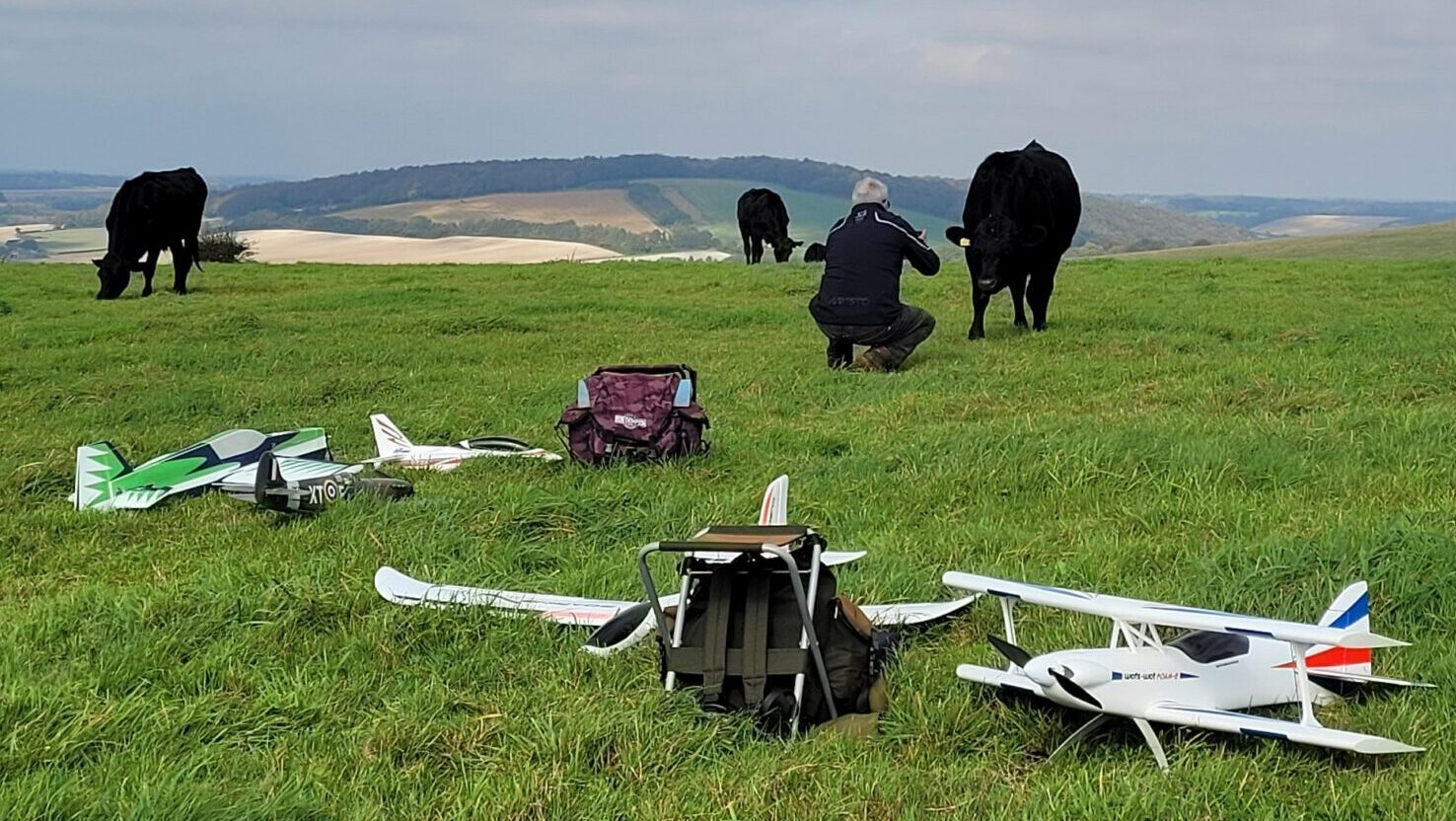 It showed no interest at all, maybe the jar of horseradish sauce he was holding didn’t help.
It showed no interest at all, maybe the jar of horseradish sauce he was holding didn’t help.
The first new model I’ll feature is MacFly’s very nice Ripmax Wots Wot Foam-E biplane.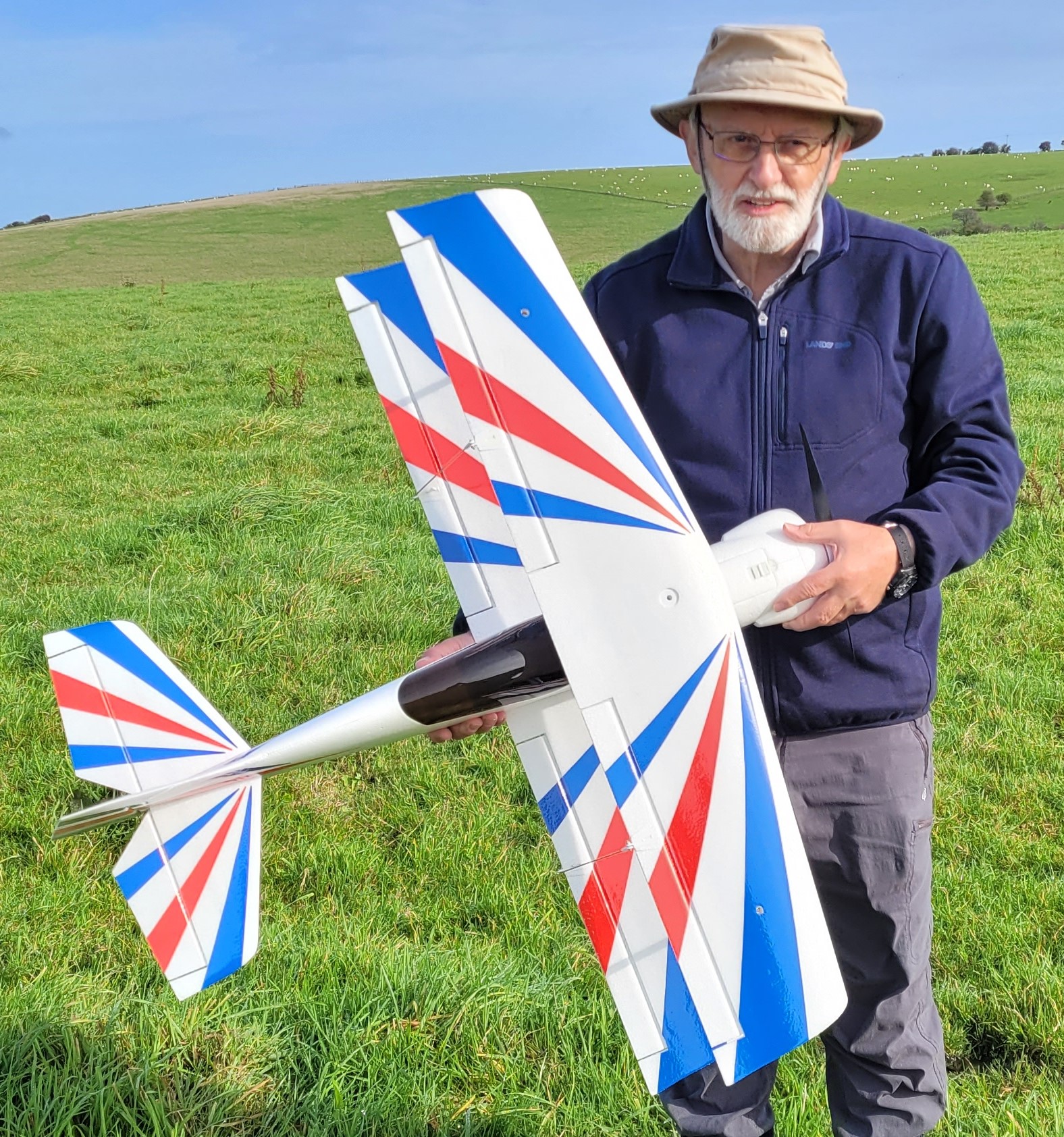 This is what the Ripmax website says about it: The Wots Wot Foam-E makes for a perfect all round sports foam aircraft. The Wots Wot Foam-E combines the slow speed characteristics of the Wot4 Foam-E and the precision and ‘locked in feel’ of the Acrowot Foam-E. The Wots Wot Foam-E has been specifically designed to suit a popular 3S 2200mAh Li-Po battery resulting in a model that will fit in a hatchback car boot fully assembled! For a little more flight time, try the Hi-Energy 2700mAh pack instead. The power system consists of a higher power 920kv outrunner brushless motor with 40A brushless ESC that really packs a punch giving the airframe over 1:1 power to weight ratio! Using a popular 2200mAh battery the duration is approximately 8 minutes. Supplied in RX ready format the four 9 gram micro servos, outrunner brushless motor and 40A ESC come pre-installed ready to connect up to your choice of receiver and li-Po battery. Using the latest in foam moulding technology you will notice the edges are very crisp and sharp without the weight penalty of a denser foam. The control surfaces use ‘live’ style moulded foam hinges but they also have plastic hinges moulded into the foam for extra security. Assembly is easy and requires only a cross head screwdriver. It’s so quick it takes longer to fit the decals than to assemble the airframe! In the air biplanes are associated with slow scale flight but not the WotsWot, thanks to four large ailerons the roll rate is fast and authoritive and the short moment of the design gives great elevator and rudder power. The Wots Wot really excels during slow speed flight and can be really docile with low rates on. Up the rates and open the throttle for flicks, spins and knife edge loops are more! The stall is benign and thanks to the biplane configuration it really slows down nicely for landing.
This Wots Wot is not actually a new model, MacFly bought it from 1066 when he was selling off the models and equipment of the late Nigel Baker (Chris P Bacon) on behalf of Ursula, Nigel’s widow. I had done the original first flight of the model for Nigel and was immediately impressed, I really liked how it handled and felt at home with it right away.
This is what the Ripmax website says about it: The Wots Wot Foam-E makes for a perfect all round sports foam aircraft. The Wots Wot Foam-E combines the slow speed characteristics of the Wot4 Foam-E and the precision and ‘locked in feel’ of the Acrowot Foam-E. The Wots Wot Foam-E has been specifically designed to suit a popular 3S 2200mAh Li-Po battery resulting in a model that will fit in a hatchback car boot fully assembled! For a little more flight time, try the Hi-Energy 2700mAh pack instead. The power system consists of a higher power 920kv outrunner brushless motor with 40A brushless ESC that really packs a punch giving the airframe over 1:1 power to weight ratio! Using a popular 2200mAh battery the duration is approximately 8 minutes. Supplied in RX ready format the four 9 gram micro servos, outrunner brushless motor and 40A ESC come pre-installed ready to connect up to your choice of receiver and li-Po battery. Using the latest in foam moulding technology you will notice the edges are very crisp and sharp without the weight penalty of a denser foam. The control surfaces use ‘live’ style moulded foam hinges but they also have plastic hinges moulded into the foam for extra security. Assembly is easy and requires only a cross head screwdriver. It’s so quick it takes longer to fit the decals than to assemble the airframe! In the air biplanes are associated with slow scale flight but not the WotsWot, thanks to four large ailerons the roll rate is fast and authoritive and the short moment of the design gives great elevator and rudder power. The Wots Wot really excels during slow speed flight and can be really docile with low rates on. Up the rates and open the throttle for flicks, spins and knife edge loops are more! The stall is benign and thanks to the biplane configuration it really slows down nicely for landing.
This Wots Wot is not actually a new model, MacFly bought it from 1066 when he was selling off the models and equipment of the late Nigel Baker (Chris P Bacon) on behalf of Ursula, Nigel’s widow. I had done the original first flight of the model for Nigel and was immediately impressed, I really liked how it handled and felt at home with it right away.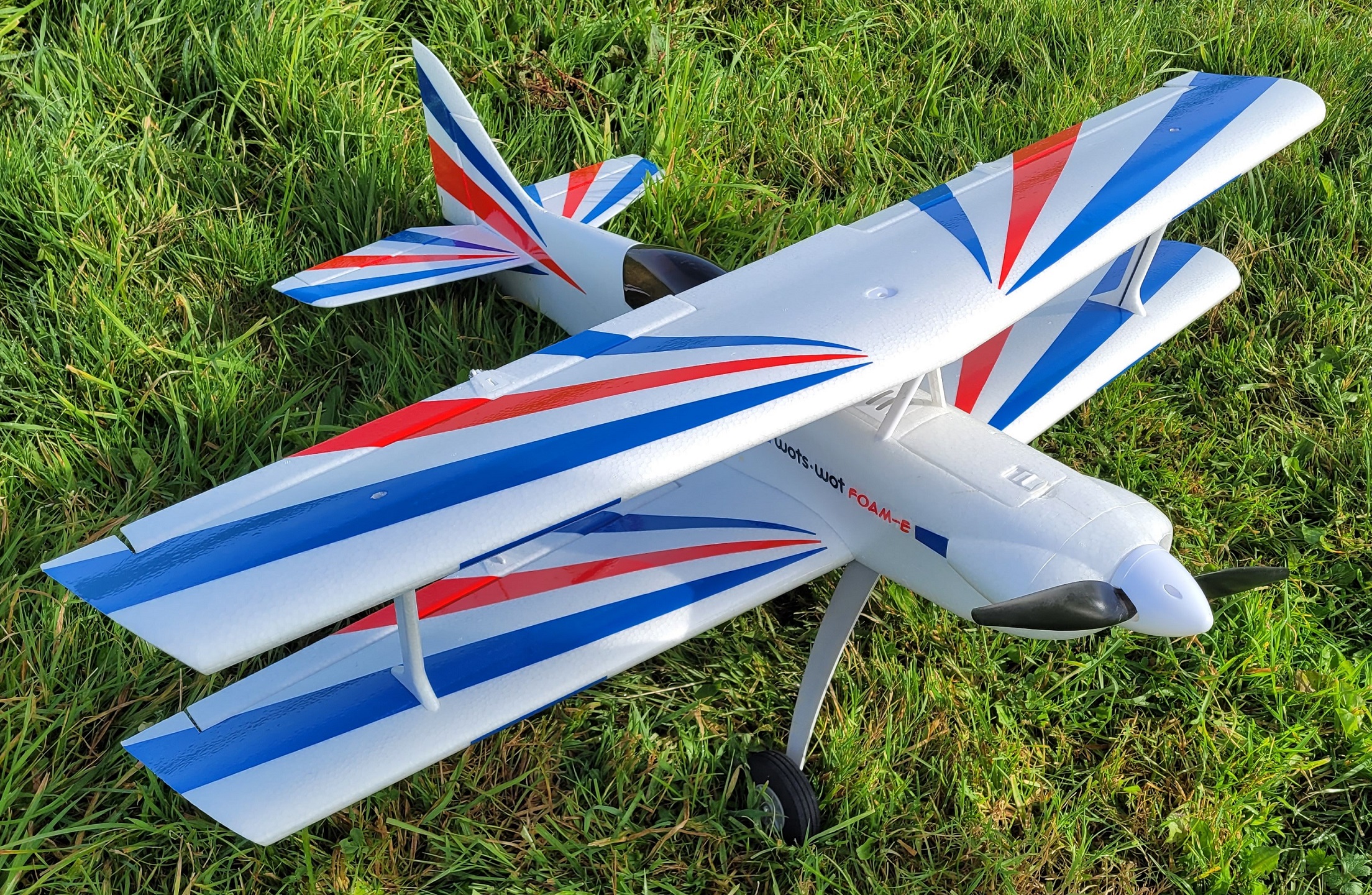 Nigel had only flown it a few times so when MacFly bought the plane it was almost unused and in pristine condition so he decided to lavish some extra care and attention on it.
He added red and blue sunburst style trim to the upper surfaces of both wings, the tailplane and also the fin and rudder. But this isn’t just any sunburst, this is MacFly’s gently curved sunburst! He has made a superb job of it, it really is beautifully done.
Nigel had only flown it a few times so when MacFly bought the plane it was almost unused and in pristine condition so he decided to lavish some extra care and attention on it.
He added red and blue sunburst style trim to the upper surfaces of both wings, the tailplane and also the fin and rudder. But this isn’t just any sunburst, this is MacFly’s gently curved sunburst! He has made a superb job of it, it really is beautifully done.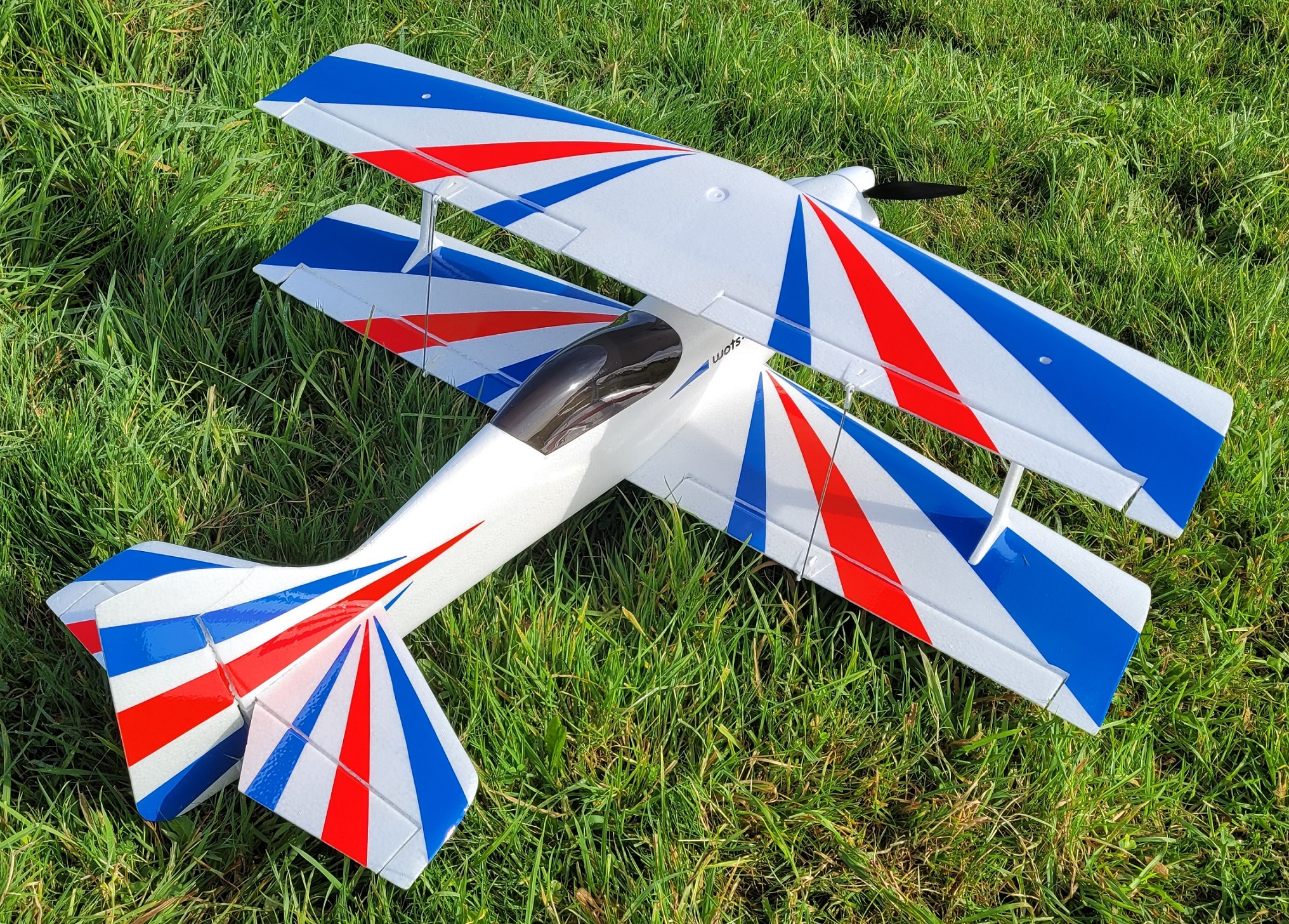 MacFly did admit that after many hours hard work he was beginning to wish to had never started it but he persevered and the end result made it all worthwhile. MacFly asked me to trim it out for him and I was pleased to find that the plane flew beautifully, exactly as I had remembered. After a couple of minutes I handed the transmitter over to MacFly who finished the flight with no problems and he has since had several more flights. With his confidence growing on every flight he is finding out what the model is capable of and is practising more and more aerobatics. You can see some of the flying in this month’s video.
MacFly did admit that after many hours hard work he was beginning to wish to had never started it but he persevered and the end result made it all worthwhile. MacFly asked me to trim it out for him and I was pleased to find that the plane flew beautifully, exactly as I had remembered. After a couple of minutes I handed the transmitter over to MacFly who finished the flight with no problems and he has since had several more flights. With his confidence growing on every flight he is finding out what the model is capable of and is practising more and more aerobatics. You can see some of the flying in this month’s video.
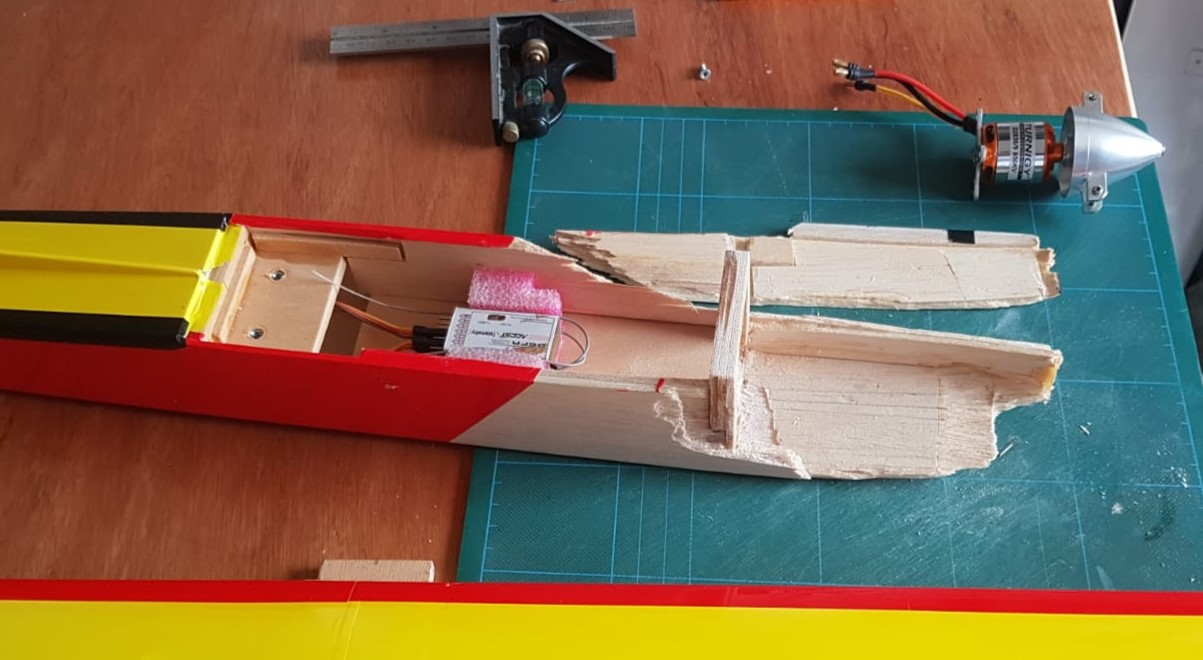 But he’s now got it all neatly back together and he asked Dougal to fly it and trim it out.
But he’s now got it all neatly back together and he asked Dougal to fly it and trim it out.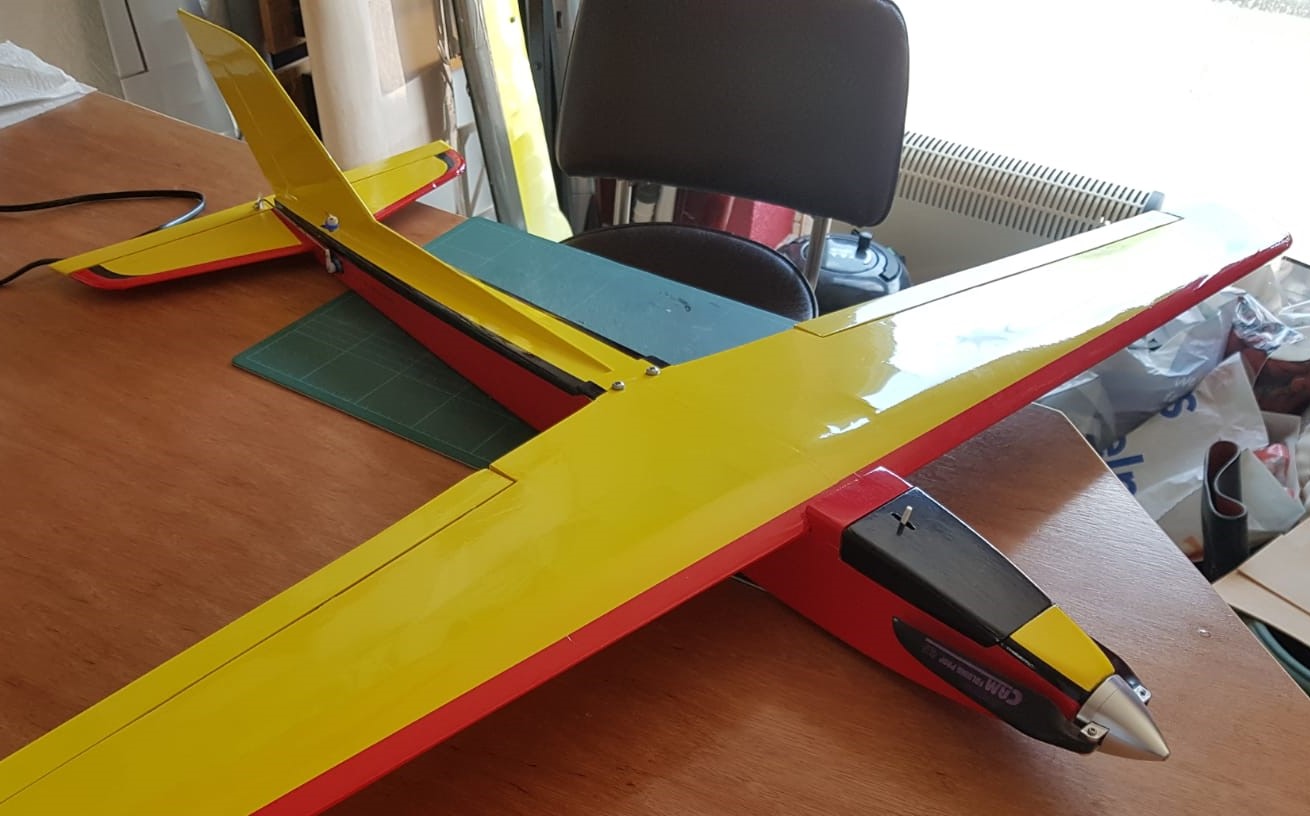 It flew fine but Dougal reported that it definitely still has the vicious tip stalling tendency. The Yellow Tail has very thin wings which are probably the main cause of the tip stall but I think the tailplane looks rather small, maybe a larger tail would help. Any thoughts?
It flew fine but Dougal reported that it definitely still has the vicious tip stalling tendency. The Yellow Tail has very thin wings which are probably the main cause of the tip stall but I think the tailplane looks rather small, maybe a larger tail would help. Any thoughts?
New member Simon Pattrick is settling in well with the club now and having joined us after a long break from model flying he’s quickly remembered how to fly! In October he brought along his latest purchase, an Arrows Hobby Marlin EDF.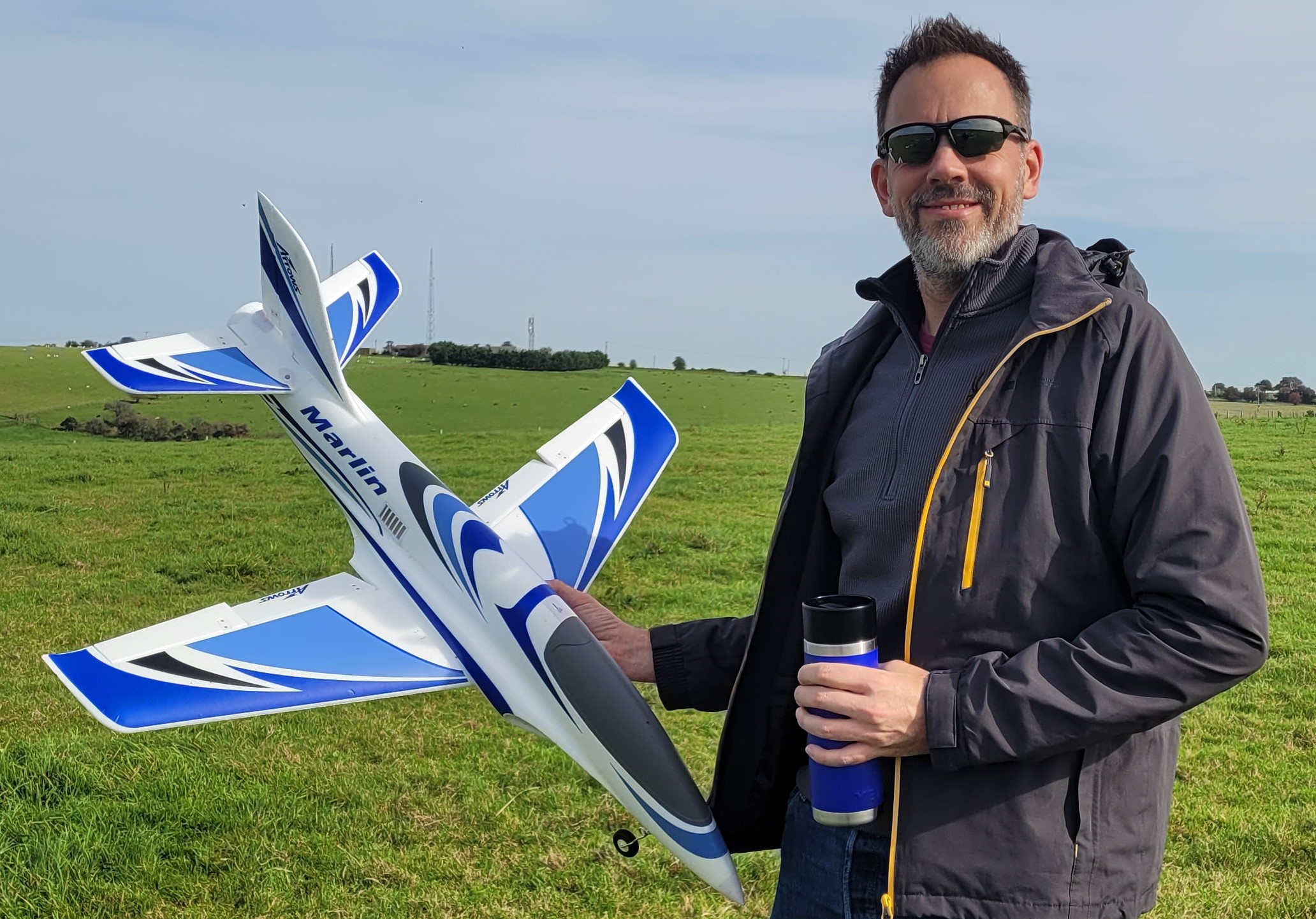 This is what Inwood Models say about the Marlin: From beginner jet pilots to top guns the versatile 4S EDF Marlin will put a big smile on your face. If you’ve always fancied joining the jet set but have struggled to know where best to start, then ponder no more for here, in all its durable EPO-moulded loveliness, is the perfect entry-level jet, and what a cracker it is. We flew it extensively during the testing period and from the moment it confidently left our underarm launch we were smitten. Powerful, precise and arrow-like in flight you’ll find the Marlin inherently stable, beautifully forgiving and truly confidence-inspiring. With an aerobatic envelope to rival the very best that the EDF world can offer this is a jet that’ll look after you when you’re finding your feet and challenge you when you’ve found ‘em. From large sky-eating loops to locked-in knife-edge flight, s-l-o-w full flap passes and everything in-between, you’ll find your Marlin so versatile that it’ll quickly become a Sunday favourite. It looks good, it sounds good, it goes good! Assembling the Marlin is simplicity itself and with no glue is required you can be airborne within an hour of opening the box. Just add a 4S 2200 to 2700mAh 35C flight pack, a 5-channel Tx and Rx combo and go wake the angels.
‘Go wake up the angels’?! Both Bob the Builder and Mini Mike own Marlins and Bob has woken up a couple of moles with his! But they have proved to be excellent fliers although sometimes they’ve been a little reluctant to get off of our relatively small patch, especially if the grass has been a bit long and/or wet. No such problems with Simon’s Marlin though, you can see in the video that it shot into the air after using left than half the patch!
This is what Inwood Models say about the Marlin: From beginner jet pilots to top guns the versatile 4S EDF Marlin will put a big smile on your face. If you’ve always fancied joining the jet set but have struggled to know where best to start, then ponder no more for here, in all its durable EPO-moulded loveliness, is the perfect entry-level jet, and what a cracker it is. We flew it extensively during the testing period and from the moment it confidently left our underarm launch we were smitten. Powerful, precise and arrow-like in flight you’ll find the Marlin inherently stable, beautifully forgiving and truly confidence-inspiring. With an aerobatic envelope to rival the very best that the EDF world can offer this is a jet that’ll look after you when you’re finding your feet and challenge you when you’ve found ‘em. From large sky-eating loops to locked-in knife-edge flight, s-l-o-w full flap passes and everything in-between, you’ll find your Marlin so versatile that it’ll quickly become a Sunday favourite. It looks good, it sounds good, it goes good! Assembling the Marlin is simplicity itself and with no glue is required you can be airborne within an hour of opening the box. Just add a 4S 2200 to 2700mAh 35C flight pack, a 5-channel Tx and Rx combo and go wake the angels.
‘Go wake up the angels’?! Both Bob the Builder and Mini Mike own Marlins and Bob has woken up a couple of moles with his! But they have proved to be excellent fliers although sometimes they’ve been a little reluctant to get off of our relatively small patch, especially if the grass has been a bit long and/or wet. No such problems with Simon’s Marlin though, you can see in the video that it shot into the air after using left than half the patch!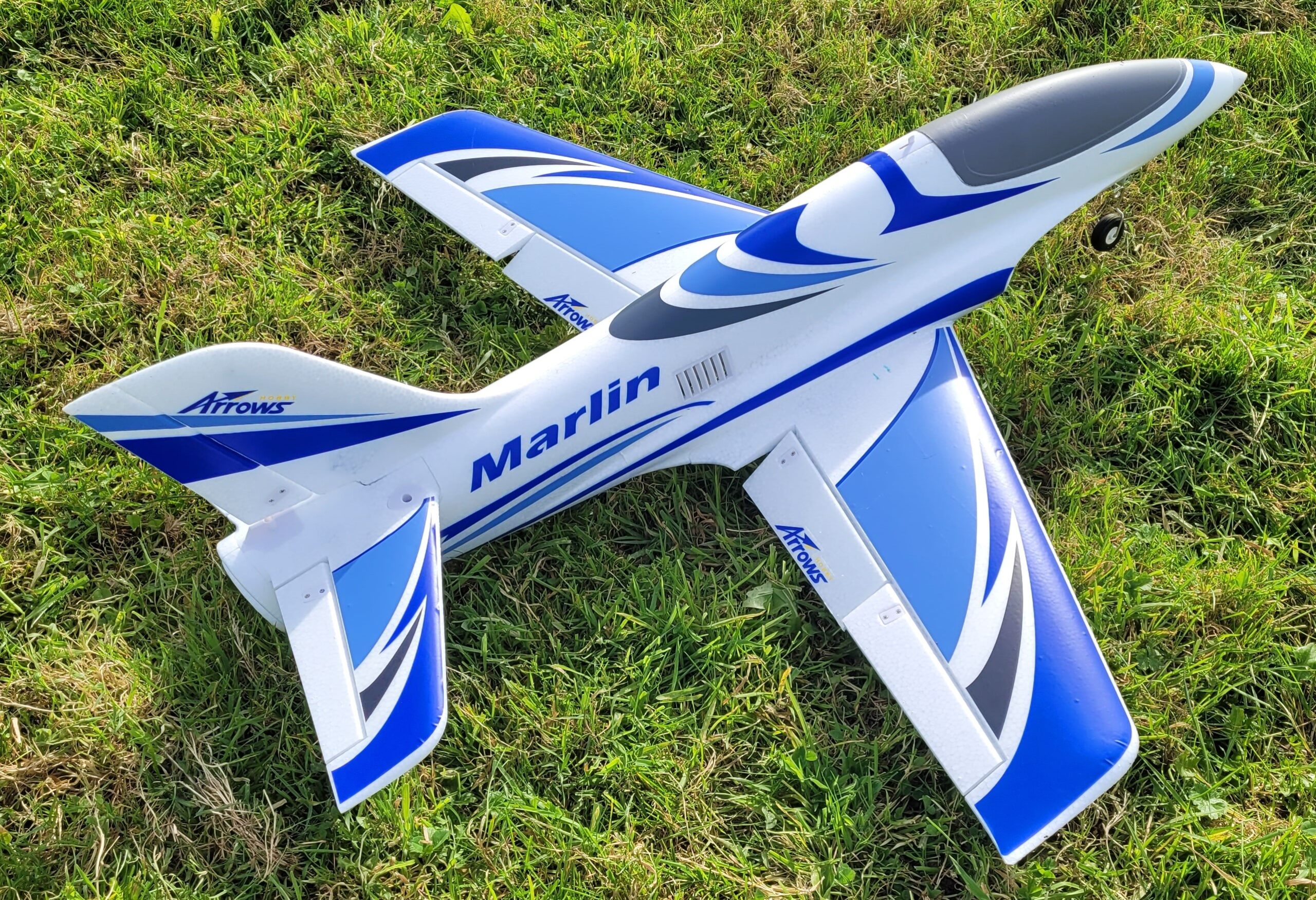 It might just be that Simon’s batteries are newer and better than those of Mini Mike or Bob. I note that the website mentions underarm launching so maybe that would be the way to go, removing the undercarriage would certainly make the Marlin look better in the air although the obvious downside is the risk of damaging the underside of the model and I can see the attraction of being able to do proper take-offs and landings.
It might just be that Simon’s batteries are newer and better than those of Mini Mike or Bob. I note that the website mentions underarm launching so maybe that would be the way to go, removing the undercarriage would certainly make the Marlin look better in the air although the obvious downside is the risk of damaging the underside of the model and I can see the attraction of being able to do proper take-offs and landings. Simon is flying his Marlin well and I couldn’t help noticing that in the video he flies two consecutive left hand rolls whereas by preference most of us would fly consecutive rolls to the right rather than the left, maybe we have a budding aerobatic expert in the making!
Simon is flying his Marlin well and I couldn’t help noticing that in the video he flies two consecutive left hand rolls whereas by preference most of us would fly consecutive rolls to the right rather than the left, maybe we have a budding aerobatic expert in the making!
In the September Patch News I wrote about the new HobbyKing warehouse that had just opened in the UK and that although at the time there was virtually no stock there were lots of offers on backorder stock at very good prices. I ordered three 3 cell lipos and three 4 cell lipos and the expected delivery was quoted as the end of October. A couple of days ago HobbyKing posted a photo on their Facebook site of a container being unloaded at the warehouse so I was hoping that my batteries were inside but it doesn’t look as if they were. The website has now been updated and shows lots more stock in the UK warehouse but sadly not the packs that I had ordered and my order still shows as Processing and the packs out of stock with no ETA at this time. Hmm…that’s not so good then, although I’m not really in any desperate need of the packs and hopefully it won’t be too long before they turn up. On the plus side both packs are now listed at a Reduced price that is 78% higher than I’ve paid so I’ve definitely got them at a good price… if they do eventually arrive!
The website has now been updated and shows lots more stock in the UK warehouse but sadly not the packs that I had ordered and my order still shows as Processing and the packs out of stock with no ETA at this time. Hmm…that’s not so good then, although I’m not really in any desperate need of the packs and hopefully it won’t be too long before they turn up. On the plus side both packs are now listed at a Reduced price that is 78% higher than I’ve paid so I’ve definitely got them at a good price… if they do eventually arrive!
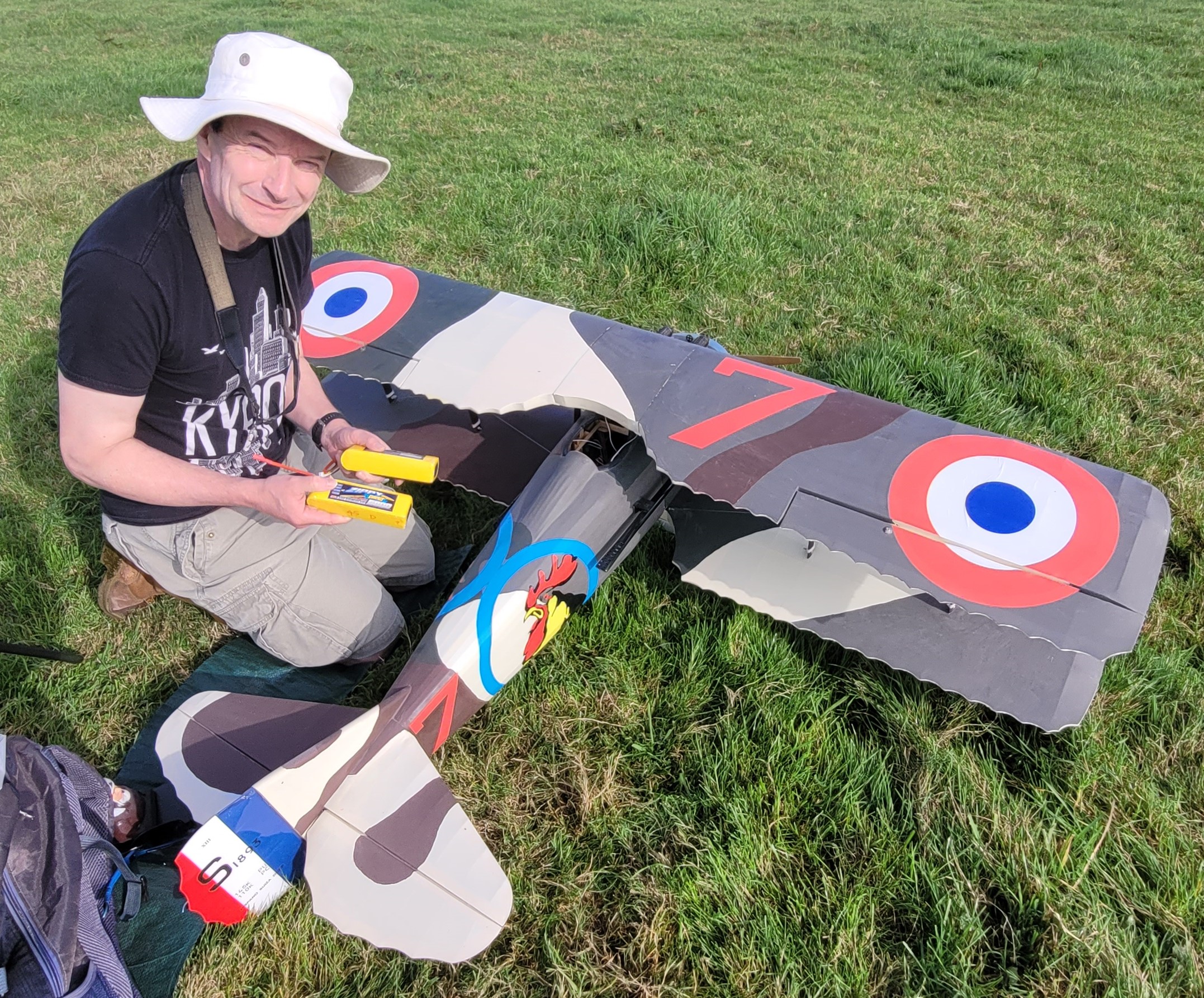 I shot some video of the first flight from the ground and then followed the second flight with my FPV Ranger and you can see some of both flights in this month’s video.
I shot some video of the first flight from the ground and then followed the second flight with my FPV Ranger and you can see some of both flights in this month’s video.
Young Leo brought along a new model to fly in October, a Dancing Wings Cloud Dancer.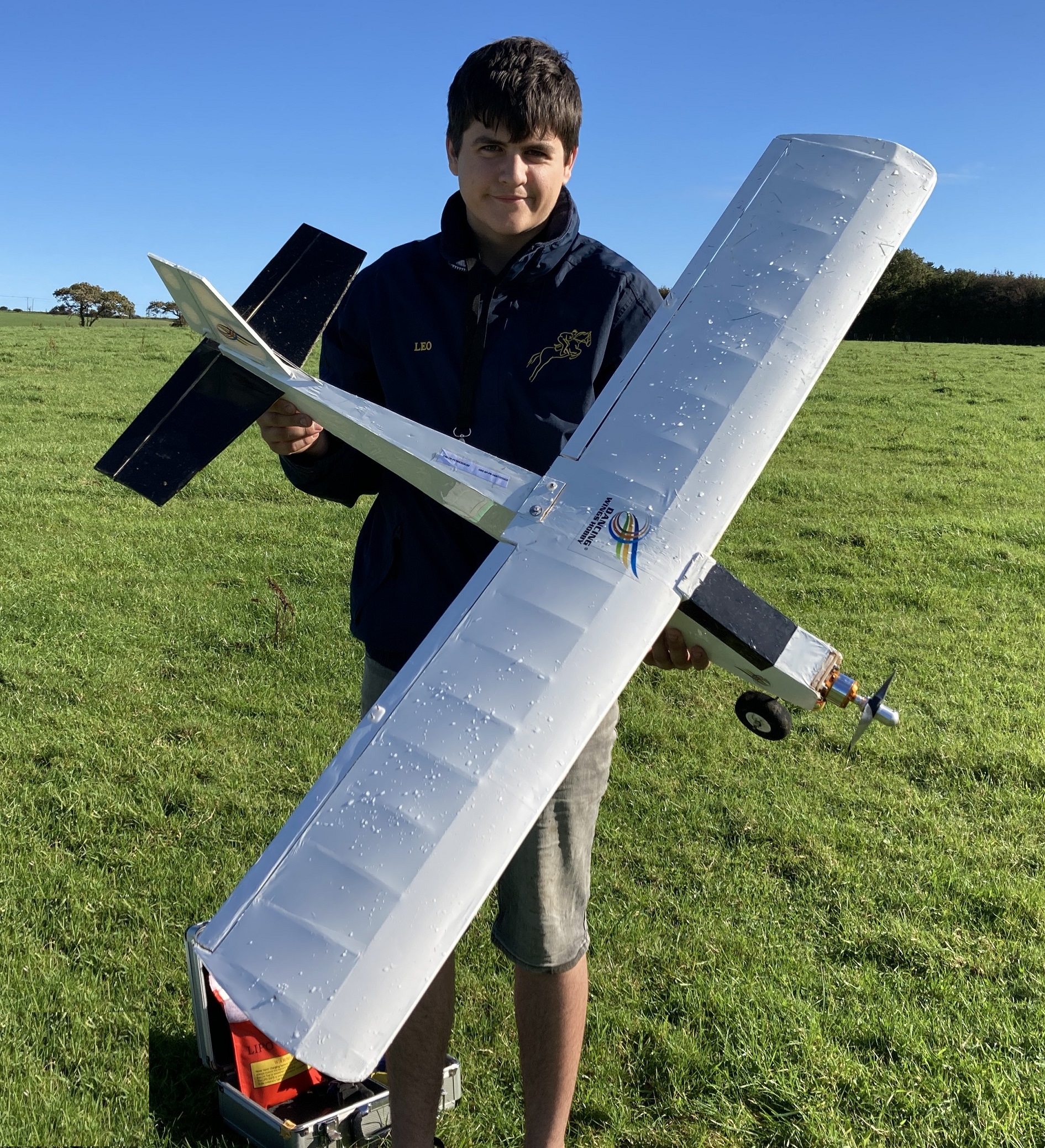 Leo built the 1.3M span Cloud Dancer about a year ago from the Dancing Wings kit which was designed as a three channel trainer with rudder and elevator but no ailerons.
Leo built the 1.3M span Cloud Dancer about a year ago from the Dancing Wings kit which was designed as a three channel trainer with rudder and elevator but no ailerons.
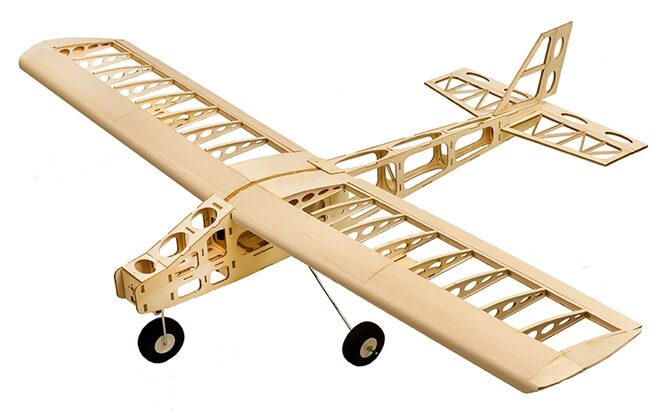 He says he’s hardly flown it since finishing it due to a lack of time but after some work it’s now re-emerged fitted with ailerons which are driven by wing mounted servos, a different motor, and a new speed controller. I wasn’t at the field to see it flying myself but I’m told that it flew well, it certainly looks good in the video and Leo seemed to be flying it nicely.
He says he’s hardly flown it since finishing it due to a lack of time but after some work it’s now re-emerged fitted with ailerons which are driven by wing mounted servos, a different motor, and a new speed controller. I wasn’t at the field to see it flying myself but I’m told that it flew well, it certainly looks good in the video and Leo seemed to be flying it nicely. But never mind all the above, the most interesting thing about the model is that Leo had to rebuild the starboard wingtip. Why? Because of a serious crash or dodgy landing?
No, it was because Leo’s mum shut it in the car door! Oh dear, I bet that got ‘mentioned’!
But never mind all the above, the most interesting thing about the model is that Leo had to rebuild the starboard wingtip. Why? Because of a serious crash or dodgy landing?
No, it was because Leo’s mum shut it in the car door! Oh dear, I bet that got ‘mentioned’!
Julian James dropped in to see us again one Sunday morning in October, this time in a North Wing ATF (Air Time Fix) with a Stratos wing, an ultralight soaring trike.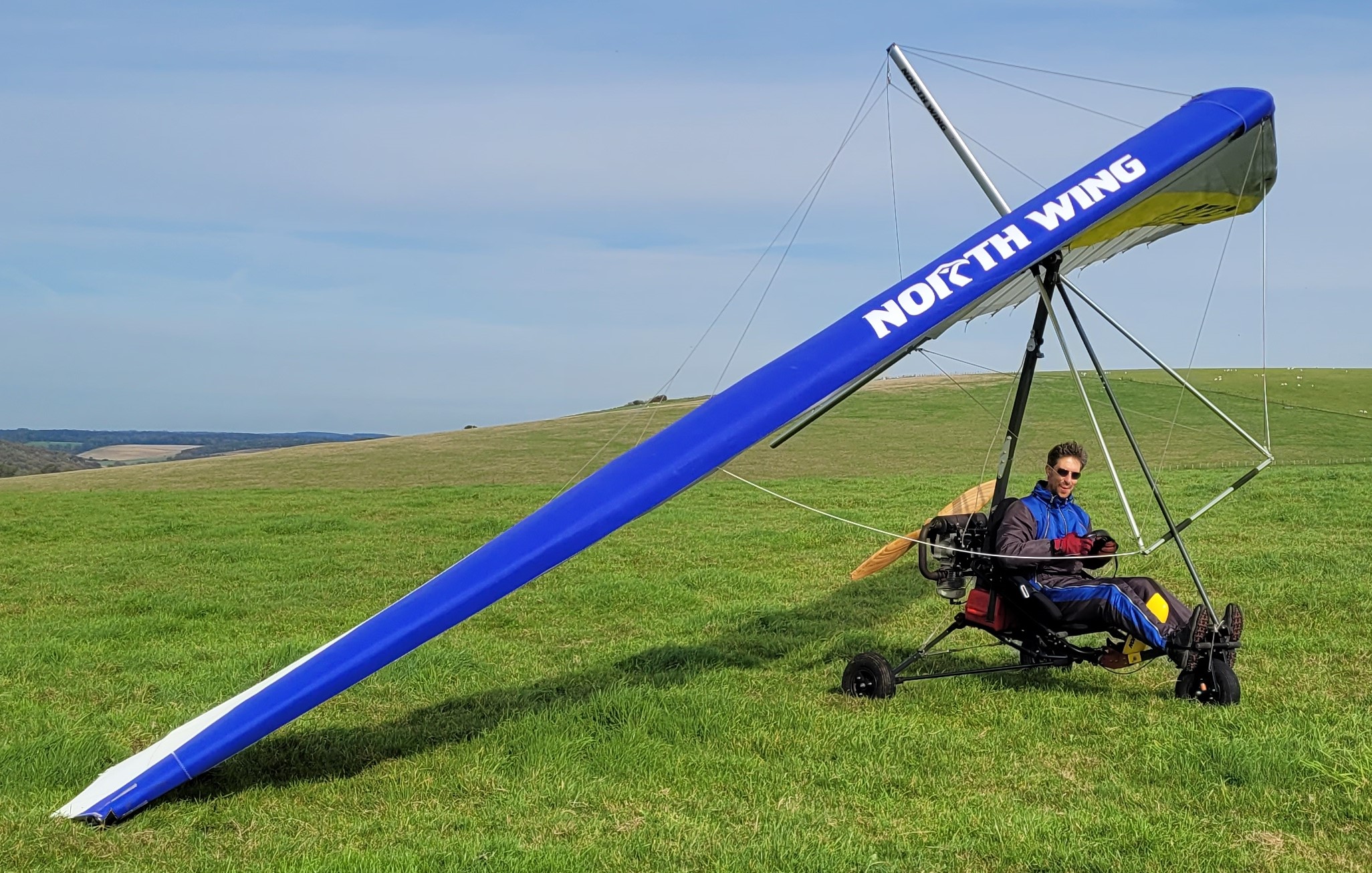 The ATF is powered by what I think is a single cylinder 27HP Polini 190 engine. It’s very much a lightweight machine designed as a motor glider for motor off soaring although Julian had the motor running the whole time we saw it flying.
The ATF is powered by what I think is a single cylinder 27HP Polini 190 engine. It’s very much a lightweight machine designed as a motor glider for motor off soaring although Julian had the motor running the whole time we saw it flying.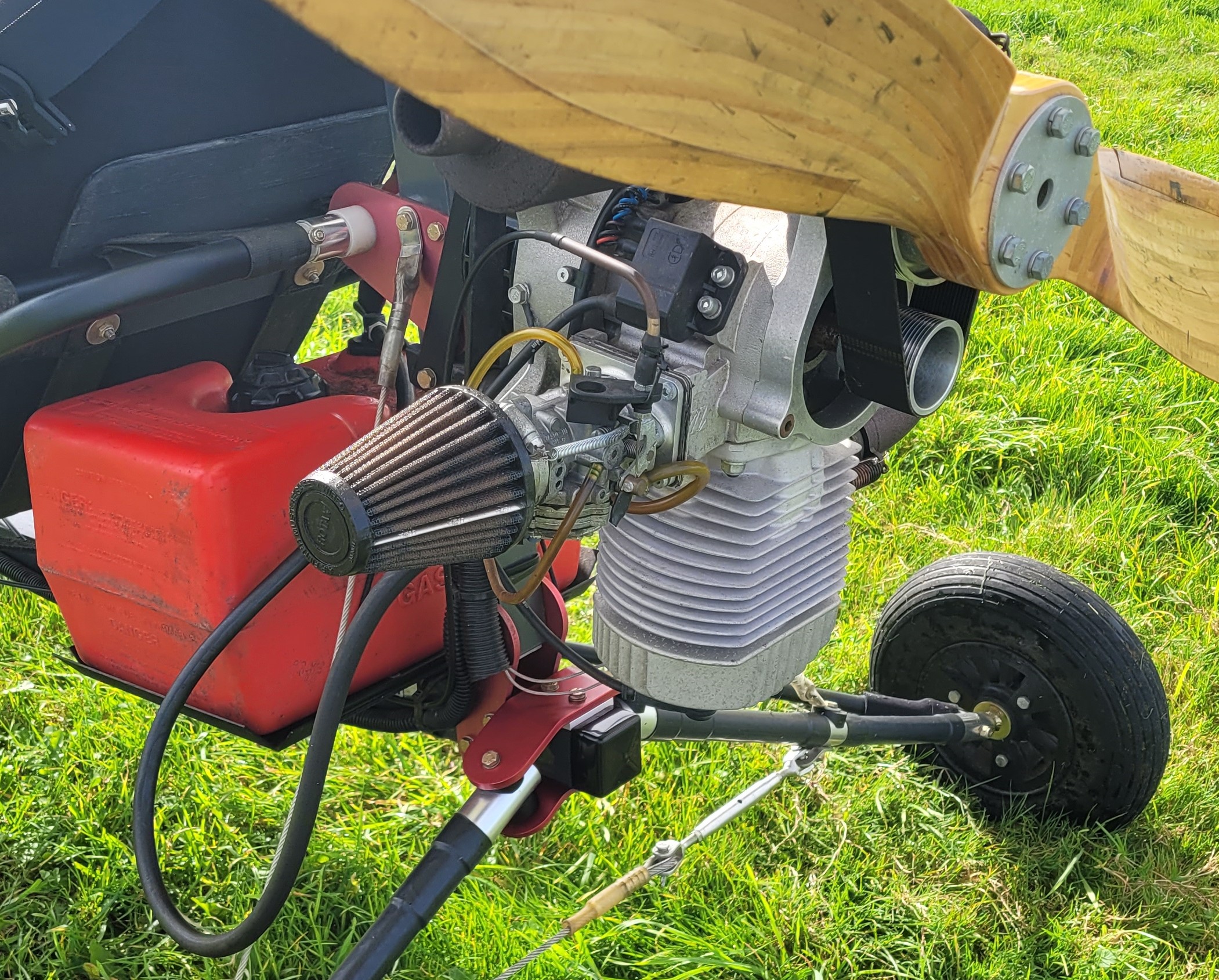 Julian said it’s about as basic and open as it’s possible to get but can only be flown in very light winds. It’s a single seater so there could be no offers to take a passenger up this time.
Julian said it’s about as basic and open as it’s possible to get but can only be flown in very light winds. It’s a single seater so there could be no offers to take a passenger up this time. 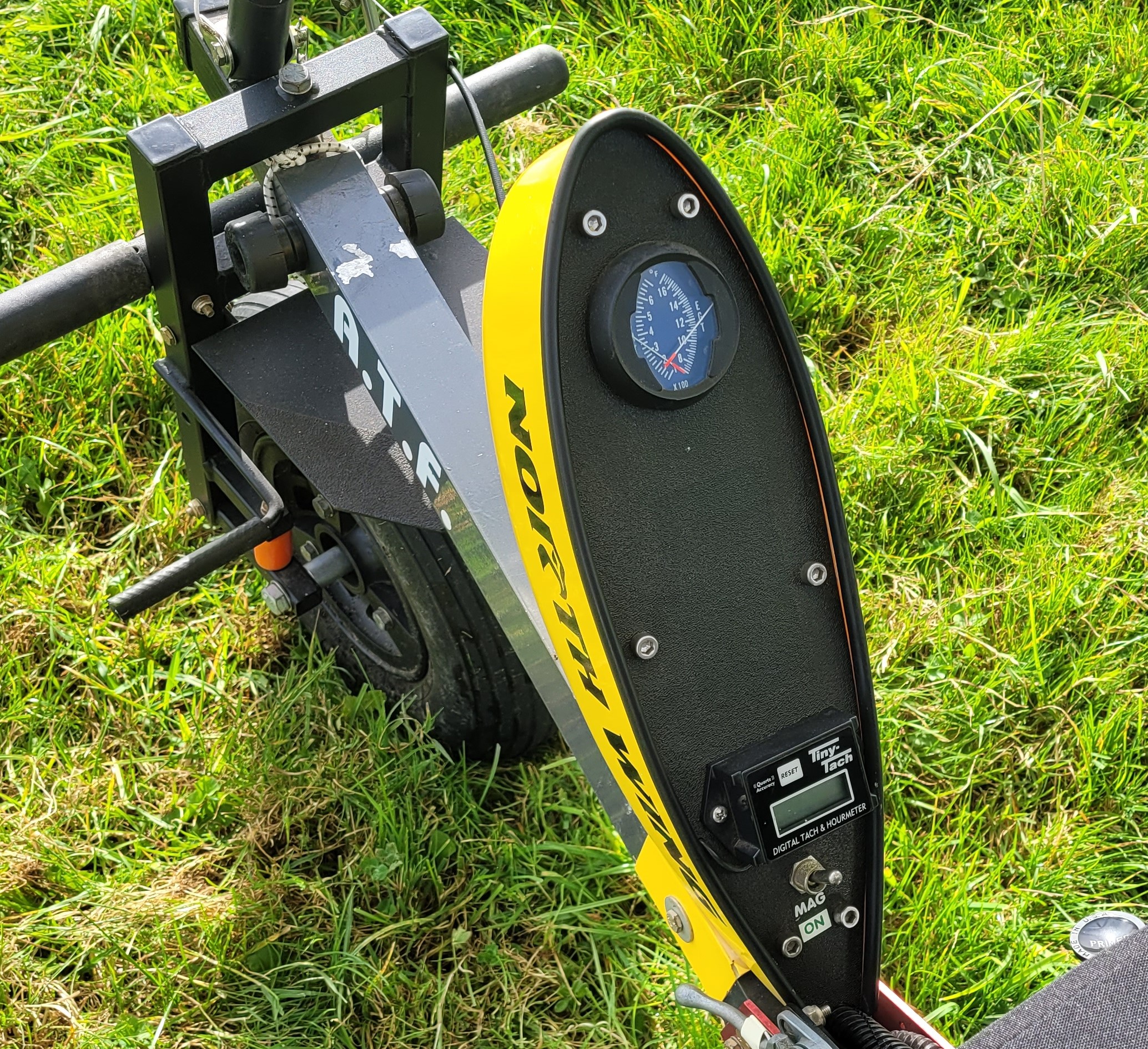 It’s also available powered by a 21kw 28HP electric motor, I wonder what battery it uses?
It’s also available powered by a 21kw 28HP electric motor, I wonder what battery it uses?
Ever had a bad day flying? The guys in this F-14 Tomcat certainly did!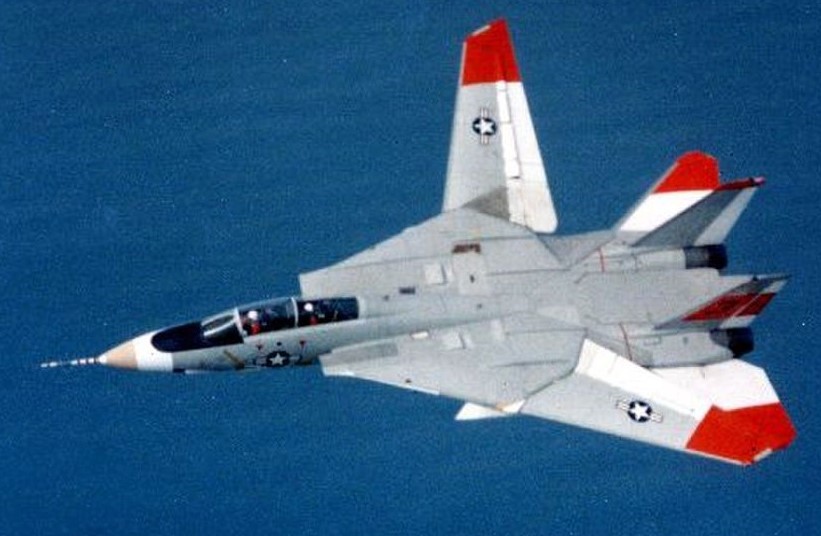 I spotted the photo online one day but have no details of the actual event although apparently there were a few mechanical failures of the swing-wing mechanisms on early Tomcats and it was possible to land safely with the asymmetric wings.
I spotted the photo online one day but have no details of the actual event although apparently there were a few mechanical failures of the swing-wing mechanisms on early Tomcats and it was possible to land safely with the asymmetric wings.

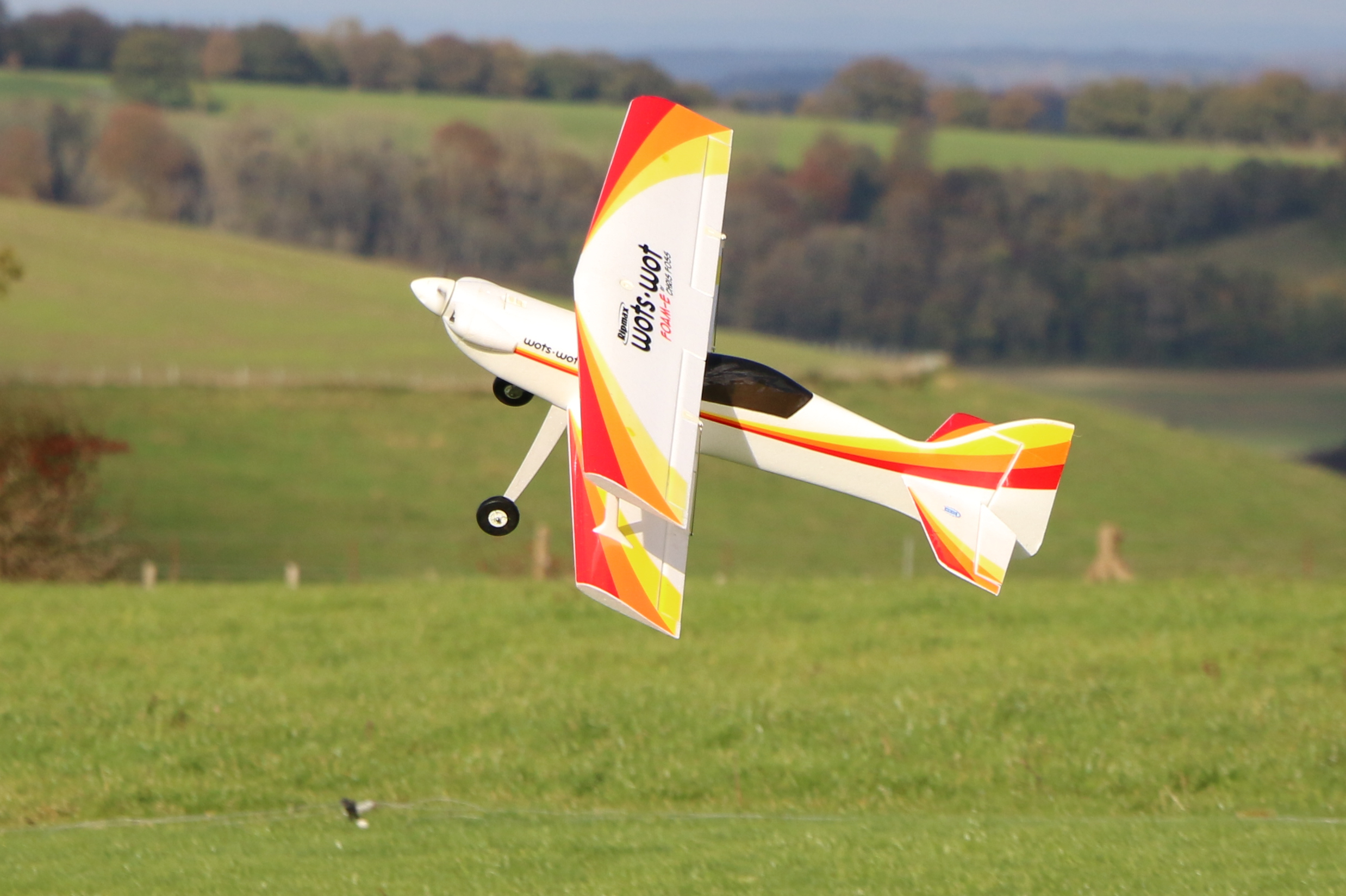
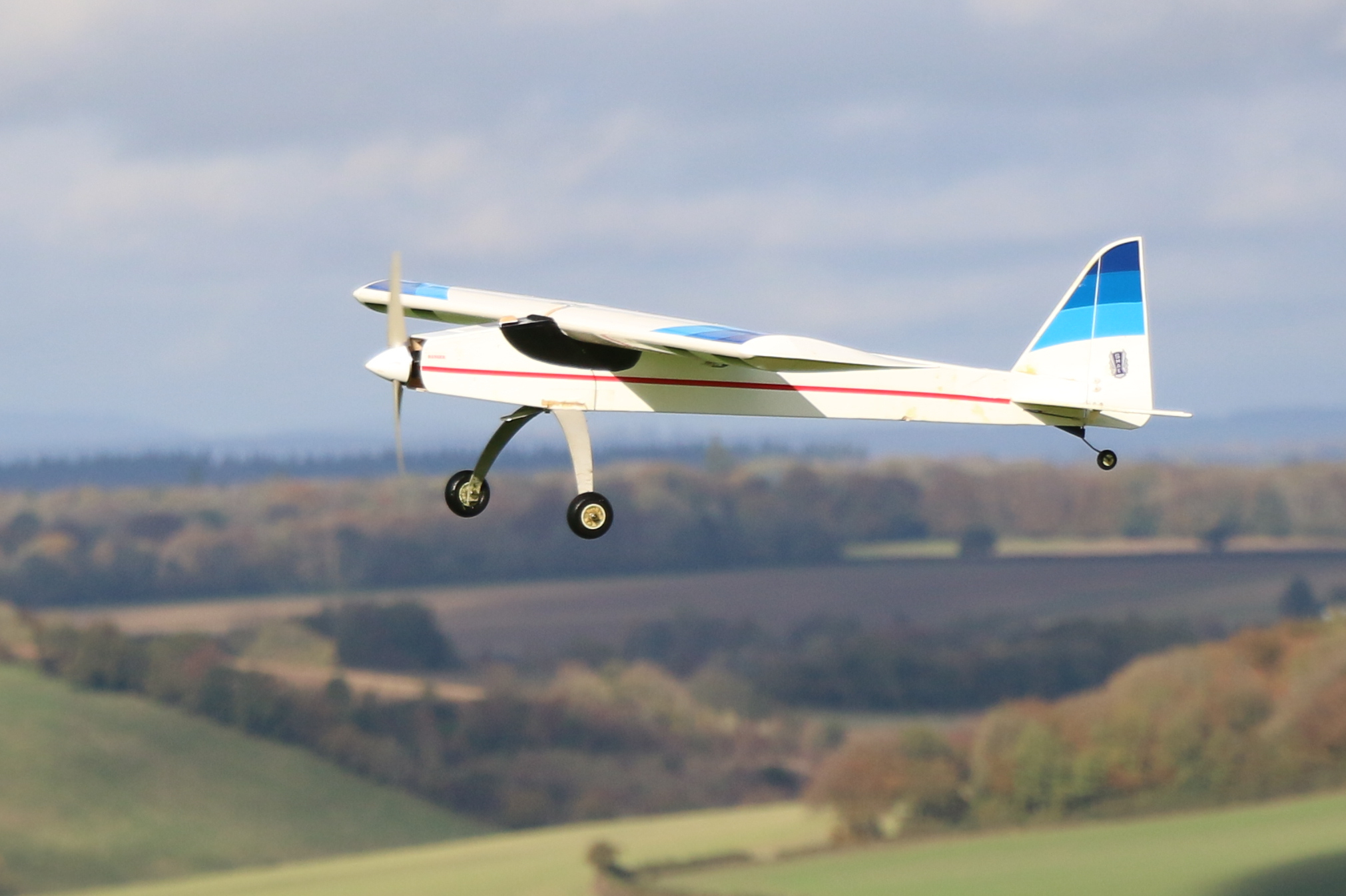
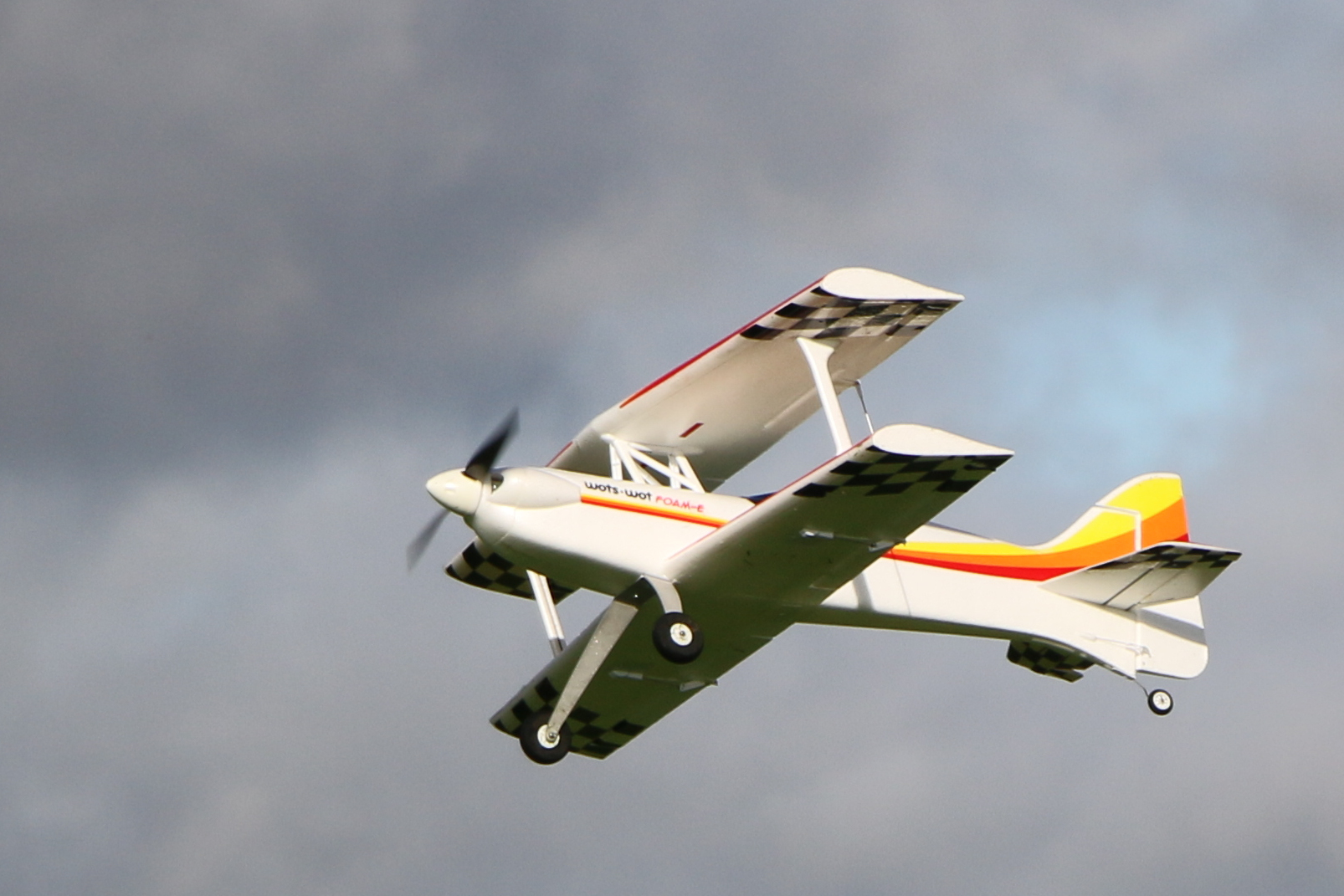
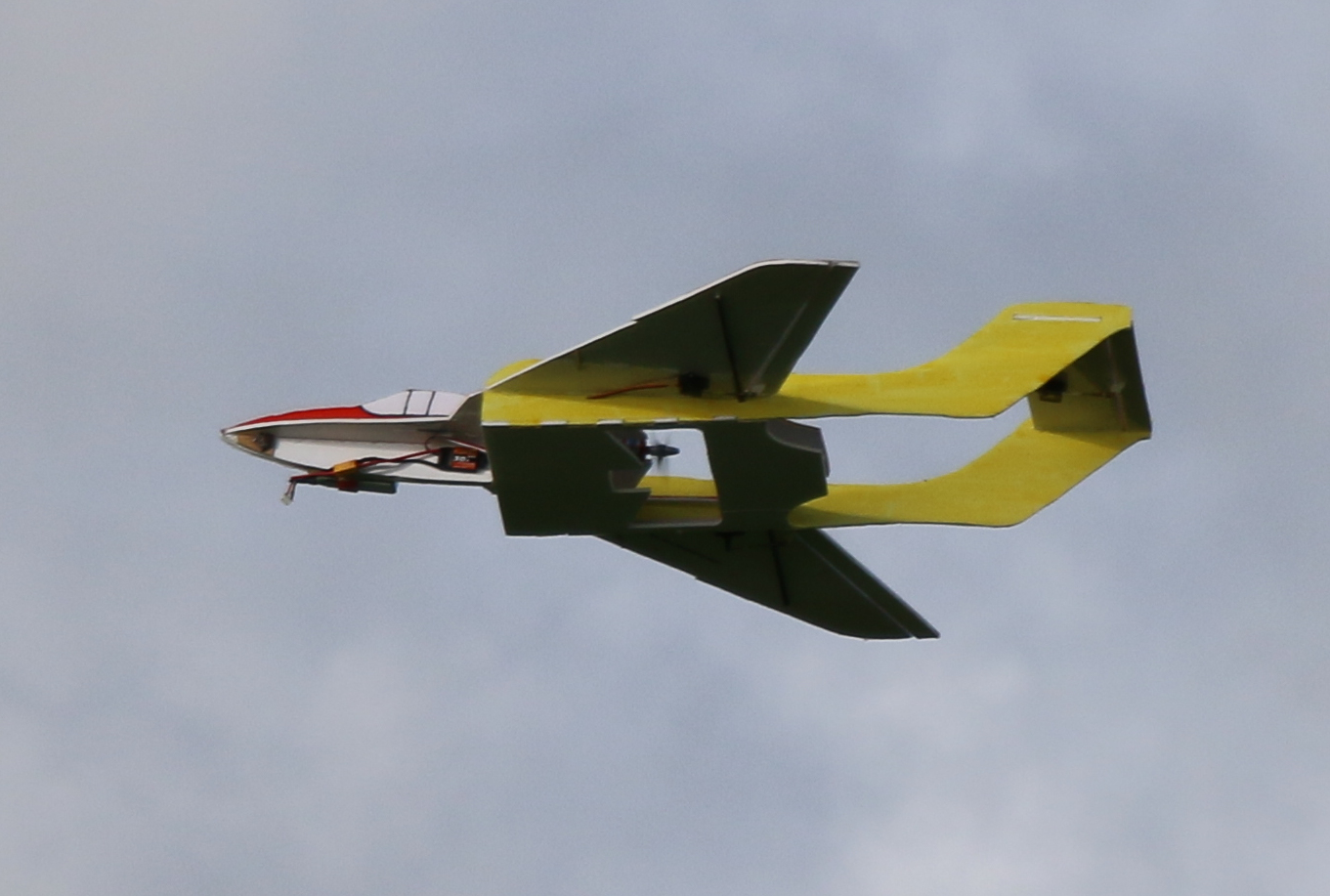
 At last, it’s video time, this month with footage shot by me, MacFly and Dougal Entendre. Please watch the video full-screen, it’s so much better with small models flying around:
If the video won’t play for you please click HERE
At last, it’s video time, this month with footage shot by me, MacFly and Dougal Entendre. Please watch the video full-screen, it’s so much better with small models flying around:
If the video won’t play for you please click HERE
The propeller on the front of a small plane is actually only there to keep the pilot cool… Just watch, if it stops spinning the pilot will start sweating like crazy.
Colin Cowplain
Patch News – September 2023
Autumn has definitely now arrived and the weather has changed hugely from the first week of the month when everybody was moaning about the heat, to wind and rain at the end of the month. Never mind, it’s pretty much as expected and club members did quite a lot of flying. Mowing continued throughout September with the supervisors outnumbering the workers as usual but as the weather grows colder the need for mowing will decrease.
The bullocks came and went but the only time they were really bothersome was when Chairman Gordon Bennett sent out an email to all members saying they were no problem at all. Who knew the bullocks could read and were even on the member list?!
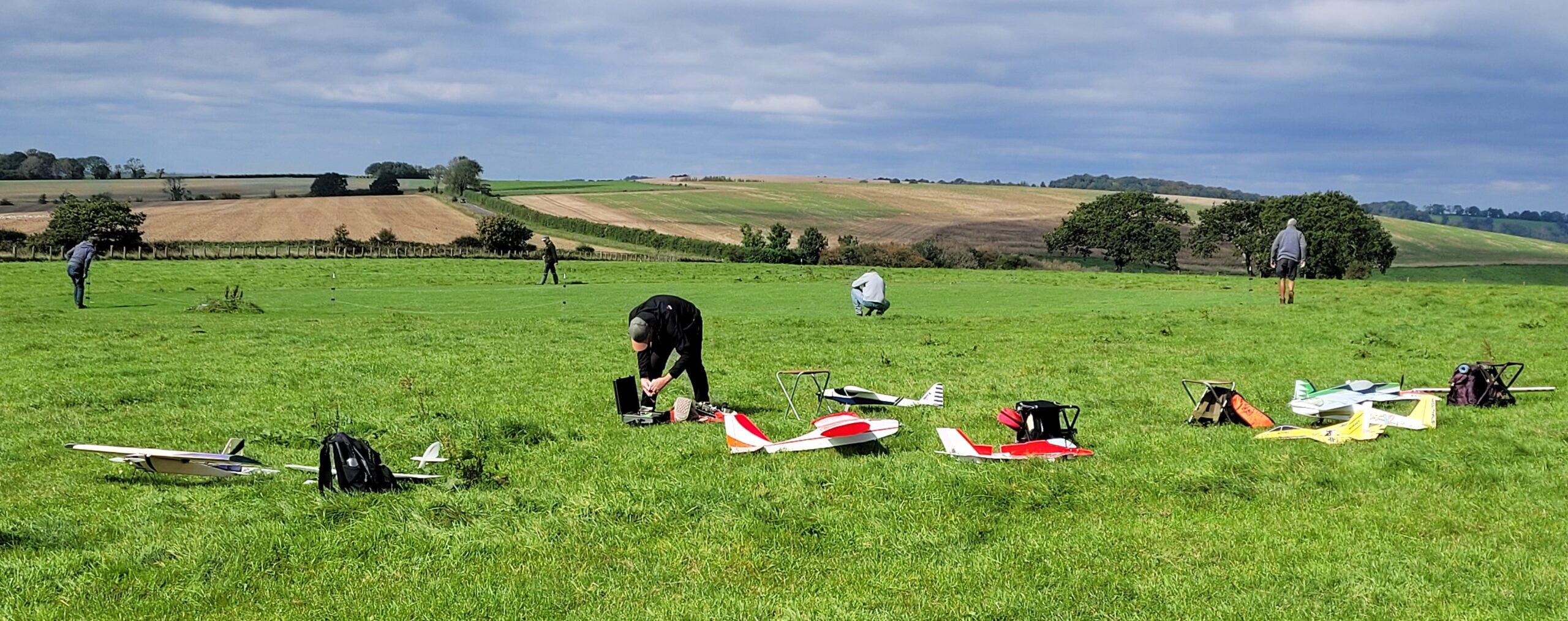
I’ll begin with something away from the patch, the two day Popham Model Show which is run by the BMFA Southern Area. Popham Airfield is a great location for a model show with plenty of room for flying, trade stands, marquees for boat and train displays, a bring and buy section, and all the usual catering stands. There is free parking and the airfield is only 25 miles from Petersfield so it’s ideal for PAM members.
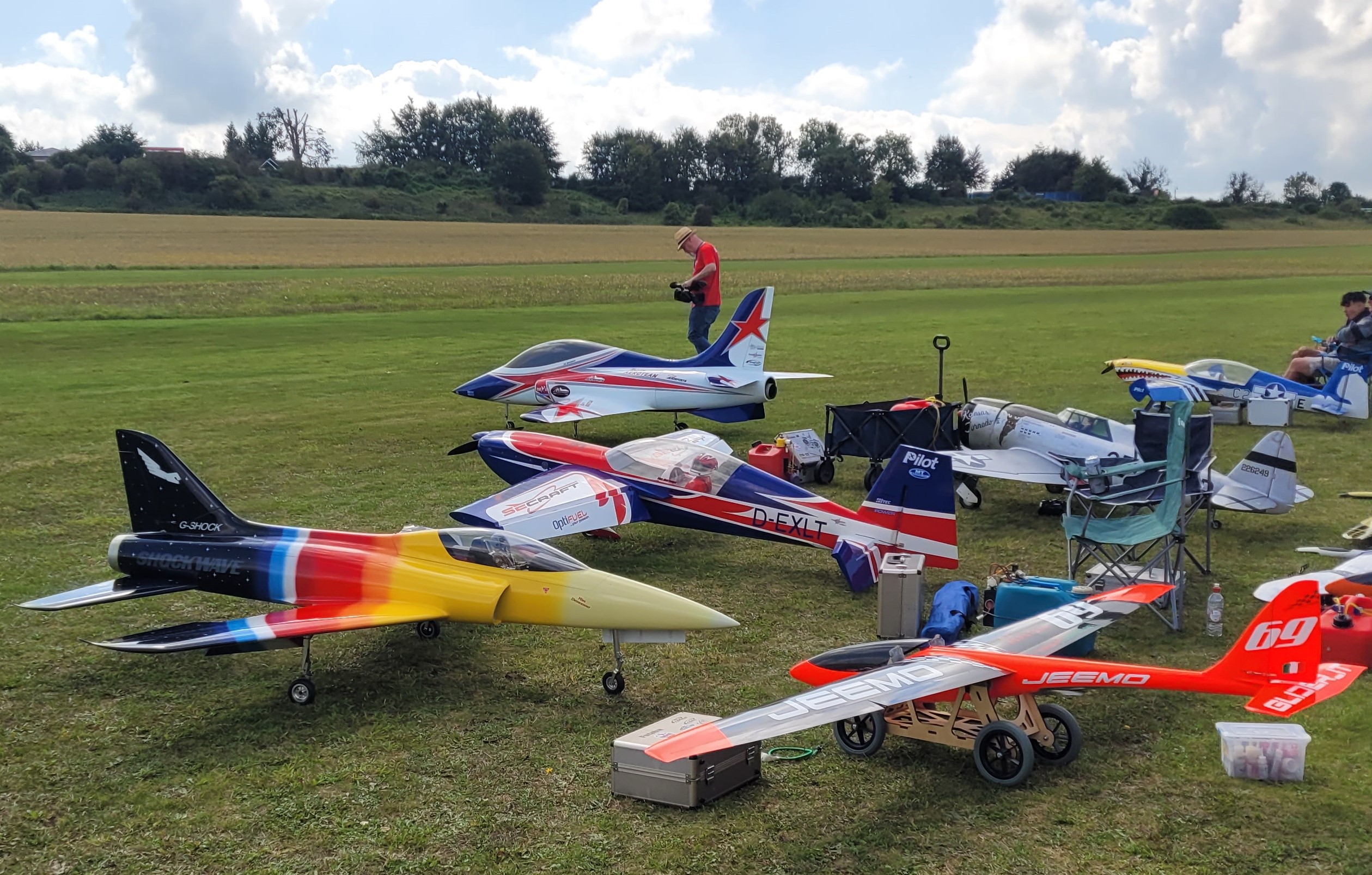
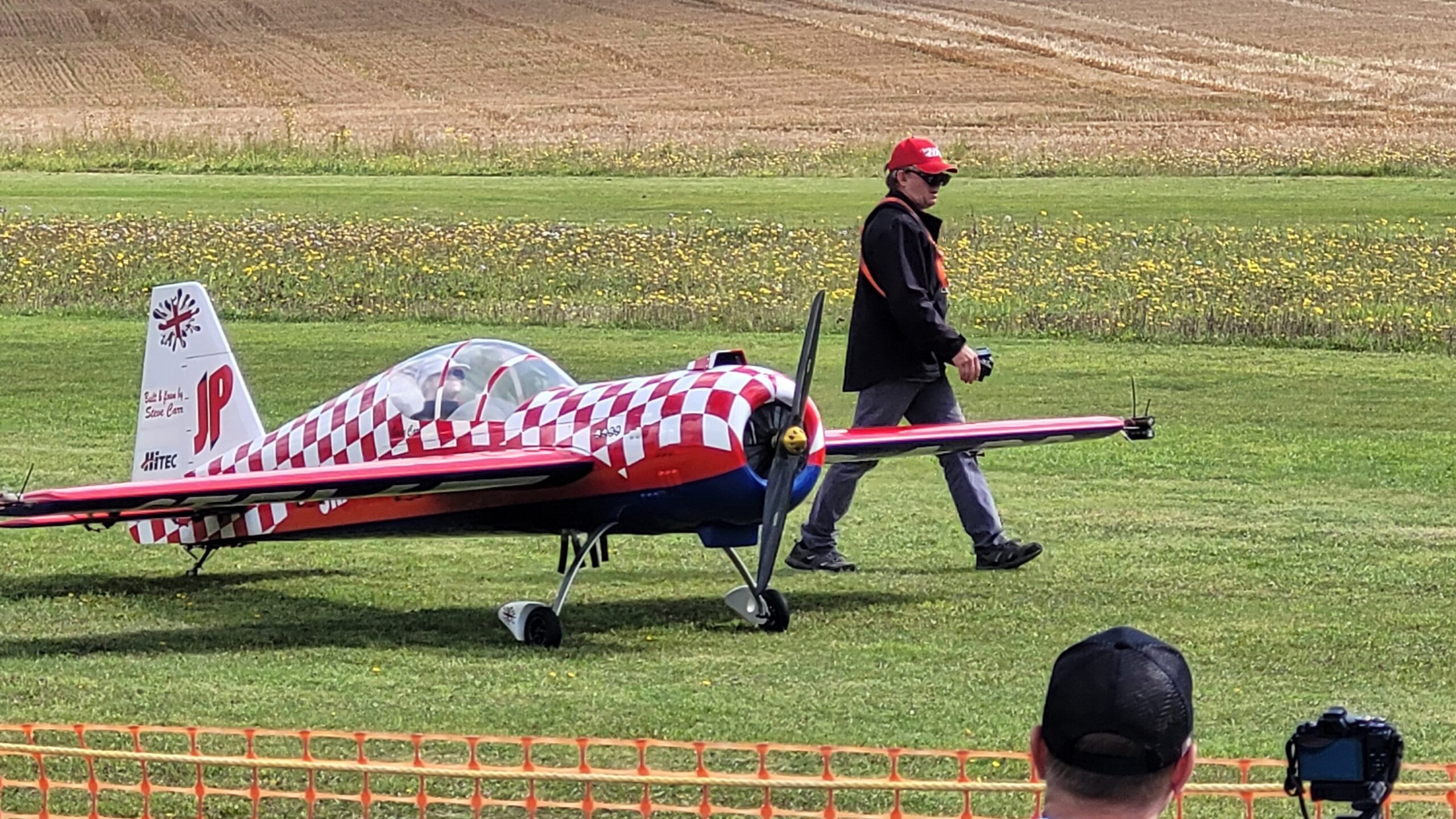 Last year the show was excellent with lots of displays by top pilots and a lot of trade stands to browse, the event was definitely growing in size and popularity so members were looking forward to an even better show this year. But sadly this time the show was a real disappointment to most of us. For some reason the organisers had changed the date and the chosen weekend clashed with other model shows at Headcorn and Much Marcle which meant that pilots and trade stands had to choose which event to attend and Popham lost out to the other more established shows. I went on the Saturday with Dougal Entendre and Leo and we bumped into several other PAM members and quite a few ex-members as well but all were saying the same thing, there were almost no trade stands to browse.
Last year the show was excellent with lots of displays by top pilots and a lot of trade stands to browse, the event was definitely growing in size and popularity so members were looking forward to an even better show this year. But sadly this time the show was a real disappointment to most of us. For some reason the organisers had changed the date and the chosen weekend clashed with other model shows at Headcorn and Much Marcle which meant that pilots and trade stands had to choose which event to attend and Popham lost out to the other more established shows. I went on the Saturday with Dougal Entendre and Leo and we bumped into several other PAM members and quite a few ex-members as well but all were saying the same thing, there were almost no trade stands to browse.
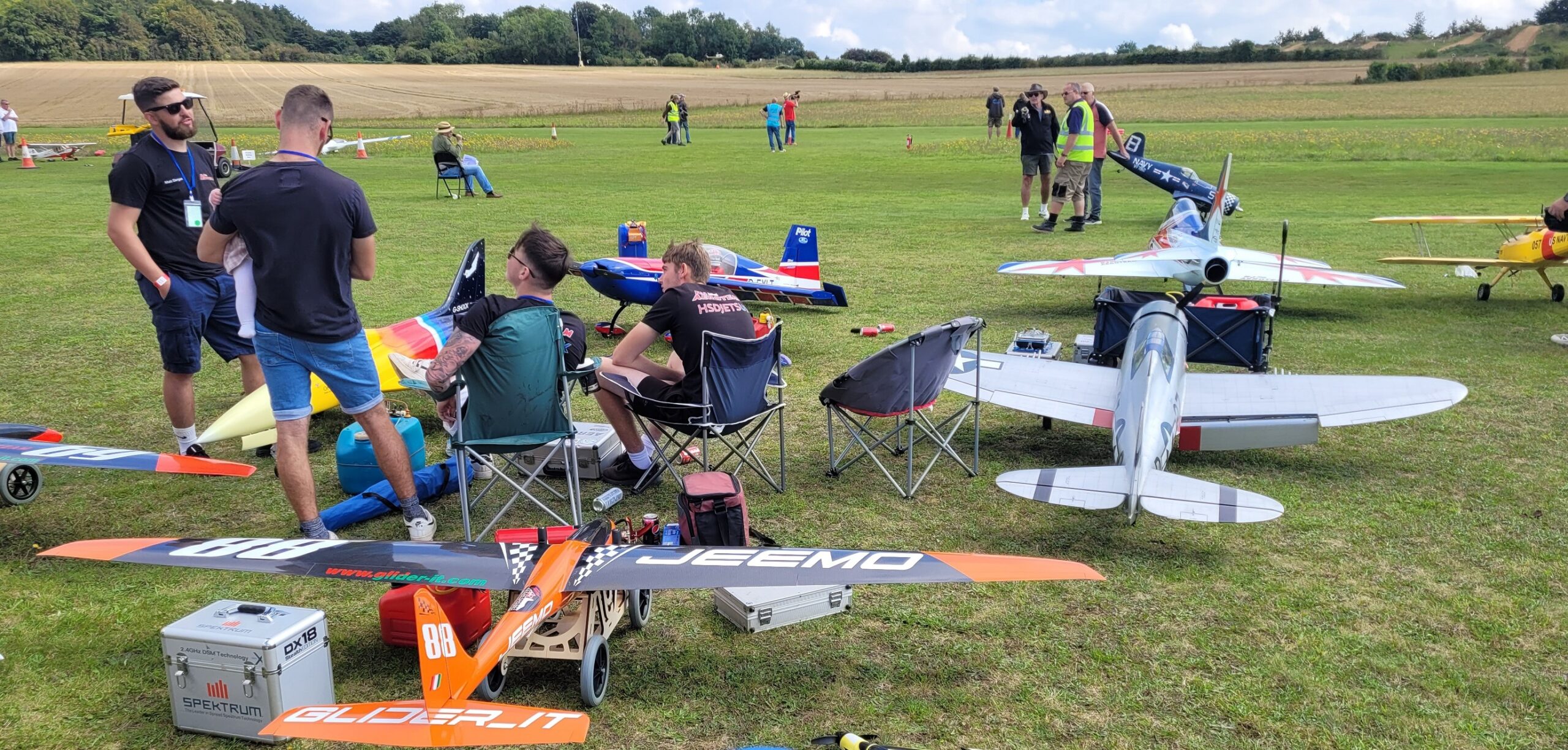
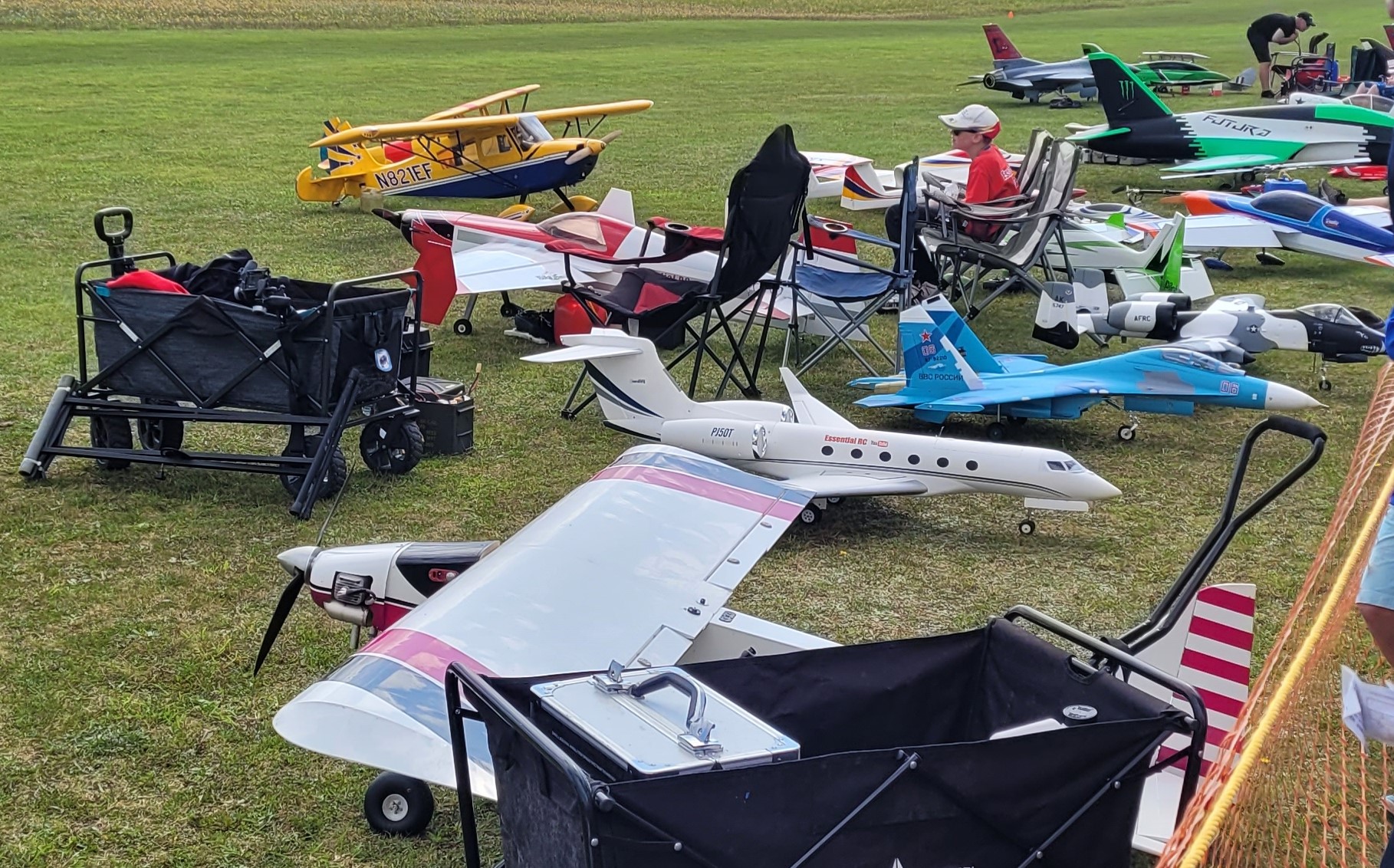 There were some very nice models being flown by some excellent pilots and overall the flying side of the show was pretty good but the assortment of models was much reduced from last year. One of the flying slots was for electric foamies and I think there were about a dozen in the air at once, maybe a few more, which was quite entertaining but I took offence to the commentator describing them as ‘ceiling tiles’!
There were some very nice models being flown by some excellent pilots and overall the flying side of the show was pretty good but the assortment of models was much reduced from last year. One of the flying slots was for electric foamies and I think there were about a dozen in the air at once, maybe a few more, which was quite entertaining but I took offence to the commentator describing them as ‘ceiling tiles’!
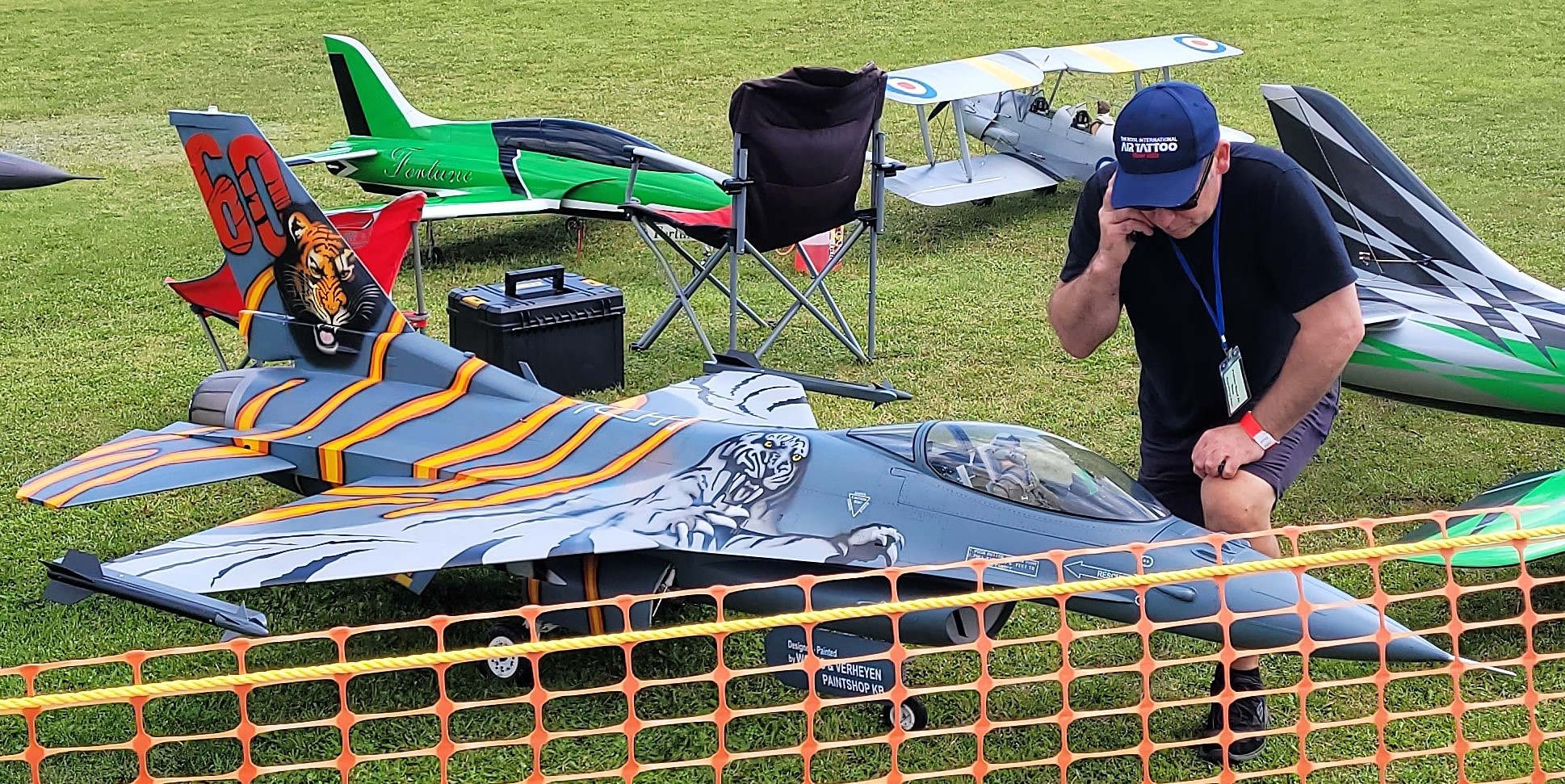 I thought it was a bit odd to basically insult the sort of models that the majority of the spectators present probably fly every weekend. We don’t all want to fly large scale petrol models or turbines although we do enjoy seeing them at the shows. Dougal on the other hand found it rather amusing so maybe I was being over sensitive, those who know me will be aware that I’m a shy, introverted, easily upset sort of chap…
I thought it was a bit odd to basically insult the sort of models that the majority of the spectators present probably fly every weekend. We don’t all want to fly large scale petrol models or turbines although we do enjoy seeing them at the shows. Dougal on the other hand found it rather amusing so maybe I was being over sensitive, those who know me will be aware that I’m a shy, introverted, easily upset sort of chap…
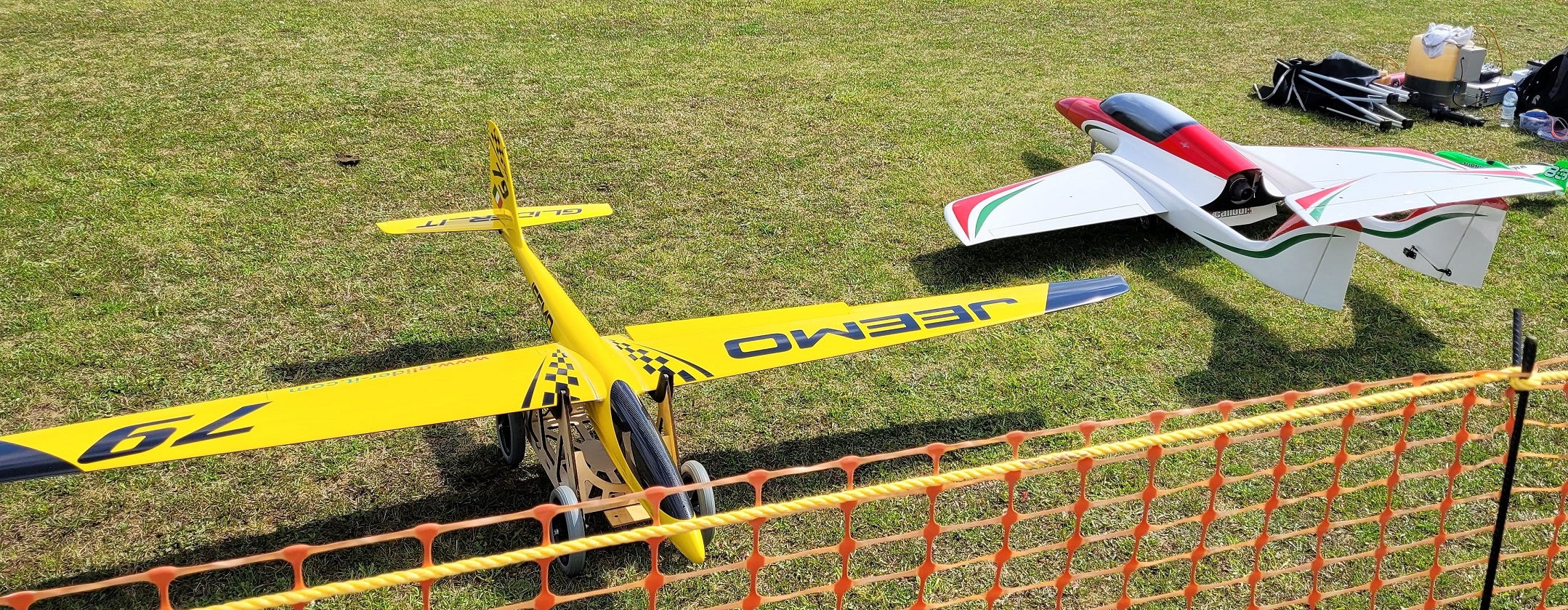 Young Leo was determined to spend some money at the bring and buy and eventually settled on a rather nice Salto electric glider, more of which later. The other club youngster Charlie was also hoping to bag a bargain but was sadly disappointed to find there was almost nothing left to buy when he arrived at around lunchtime. Charlie’s mum Nadine said it was good for her but bad for Charlie! So overall the show was a bit of a let-down for most of us, let’s hope that next year the organisers revert to a weekend that doesn’t clash with other events and it’s better attended by the traders.
Young Leo was determined to spend some money at the bring and buy and eventually settled on a rather nice Salto electric glider, more of which later. The other club youngster Charlie was also hoping to bag a bargain but was sadly disappointed to find there was almost nothing left to buy when he arrived at around lunchtime. Charlie’s mum Nadine said it was good for her but bad for Charlie! So overall the show was a bit of a let-down for most of us, let’s hope that next year the organisers revert to a weekend that doesn’t clash with other events and it’s better attended by the traders.
There were a few new models flown in September and the first I’ll feature is Gordon Bennett’s MX2. Both Dougal Entendre and 1066 have one of these foamies and they are good, tough little models for practising 3D stuff without breaking the bank. Both of theirs came from HobbyKing but as the HK warehouse in the UK had closed Gordon had to scour the internet where he found one for sale in China and then waited 3 months for it to arrive.
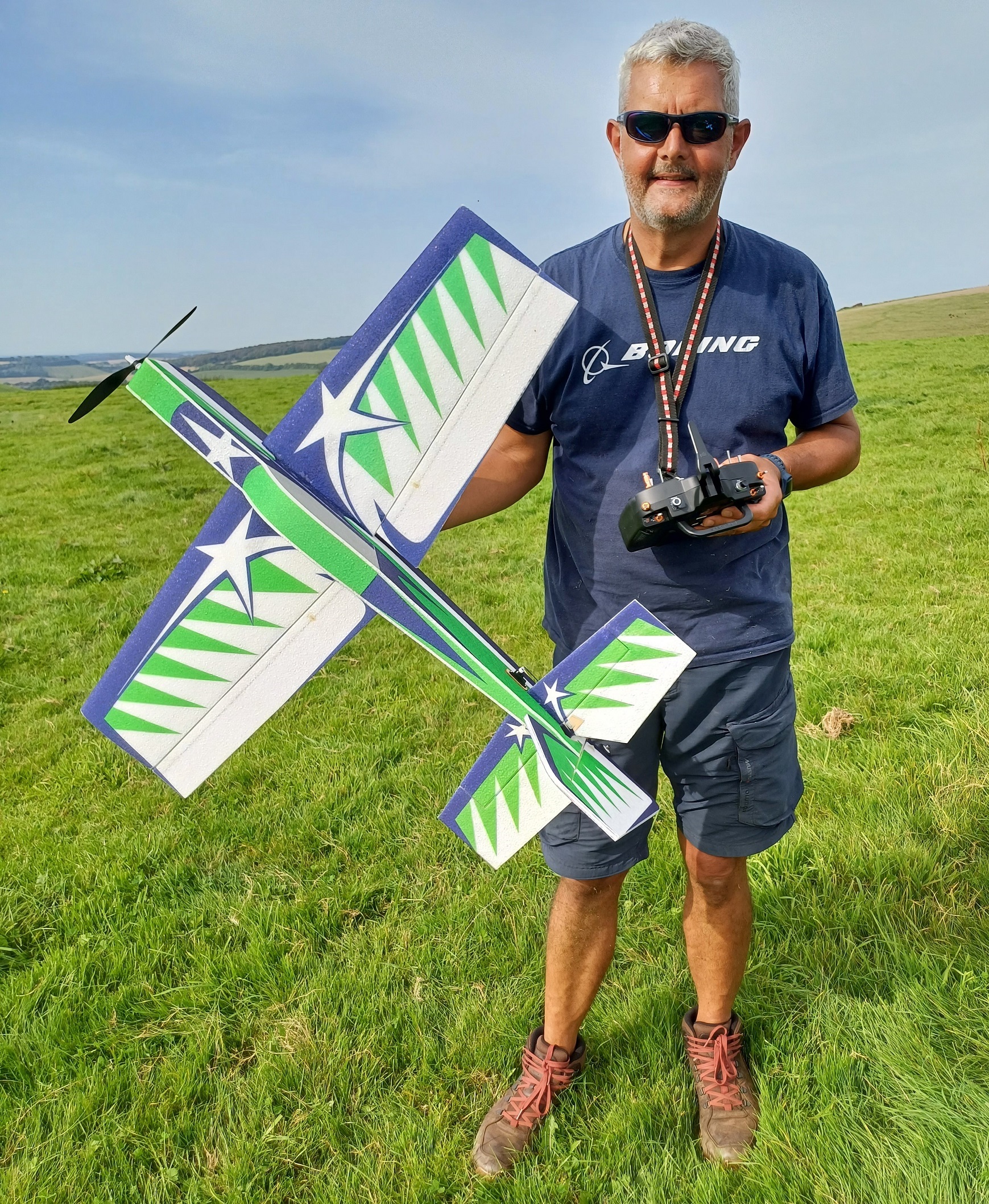 Needless to say no sooner had the model arrived than HobbyKing announced the opening of a new UK warehouse and one of the items on special offer is the MX2! But it’s on back-order and not due until the end of October so maybe Gordon got it right after all.
Needless to say no sooner had the model arrived than HobbyKing announced the opening of a new UK warehouse and one of the items on special offer is the MX2! But it’s on back-order and not due until the end of October so maybe Gordon got it right after all.
 This is what Gordon says: I’ve watched Dougal and 1066 do amazing things with their MX2s and decided I wanted a piece of the action. I know I can’t fly it like them, but they do seem to have a lot of fun with quite an inexpensive model so I tracked one down. It’s an interesting beast, mainly foam and foam sheet over some balsa reinforcing. It’s light of course and I think this helps it take the inevitable knocks. I had a look at Dougal’s model as mine arrived with no instructions and I wanted to check how he’d set his up. Massive control throws seemed to be the answer. He’s got specially extended servo arms that give huge deflections. I didn’t think I’d need all that to start with so just went with the biggest servo arms I could find in my spares box. The kit only takes a couple of hours to put together, it’s basically glue in the wings, tailplane and control surfaces. I got the servos, powertrain etc. as a bundle and things seem ok so far. For those that like to know what’s under the bonnet it’s an 1100Kv motor, 10×4.7 prop, 40A esc and 3S 1600 lipo.
This is what Gordon says: I’ve watched Dougal and 1066 do amazing things with their MX2s and decided I wanted a piece of the action. I know I can’t fly it like them, but they do seem to have a lot of fun with quite an inexpensive model so I tracked one down. It’s an interesting beast, mainly foam and foam sheet over some balsa reinforcing. It’s light of course and I think this helps it take the inevitable knocks. I had a look at Dougal’s model as mine arrived with no instructions and I wanted to check how he’d set his up. Massive control throws seemed to be the answer. He’s got specially extended servo arms that give huge deflections. I didn’t think I’d need all that to start with so just went with the biggest servo arms I could find in my spares box. The kit only takes a couple of hours to put together, it’s basically glue in the wings, tailplane and control surfaces. I got the servos, powertrain etc. as a bundle and things seem ok so far. For those that like to know what’s under the bonnet it’s an 1100Kv motor, 10×4.7 prop, 40A esc and 3S 1600 lipo. 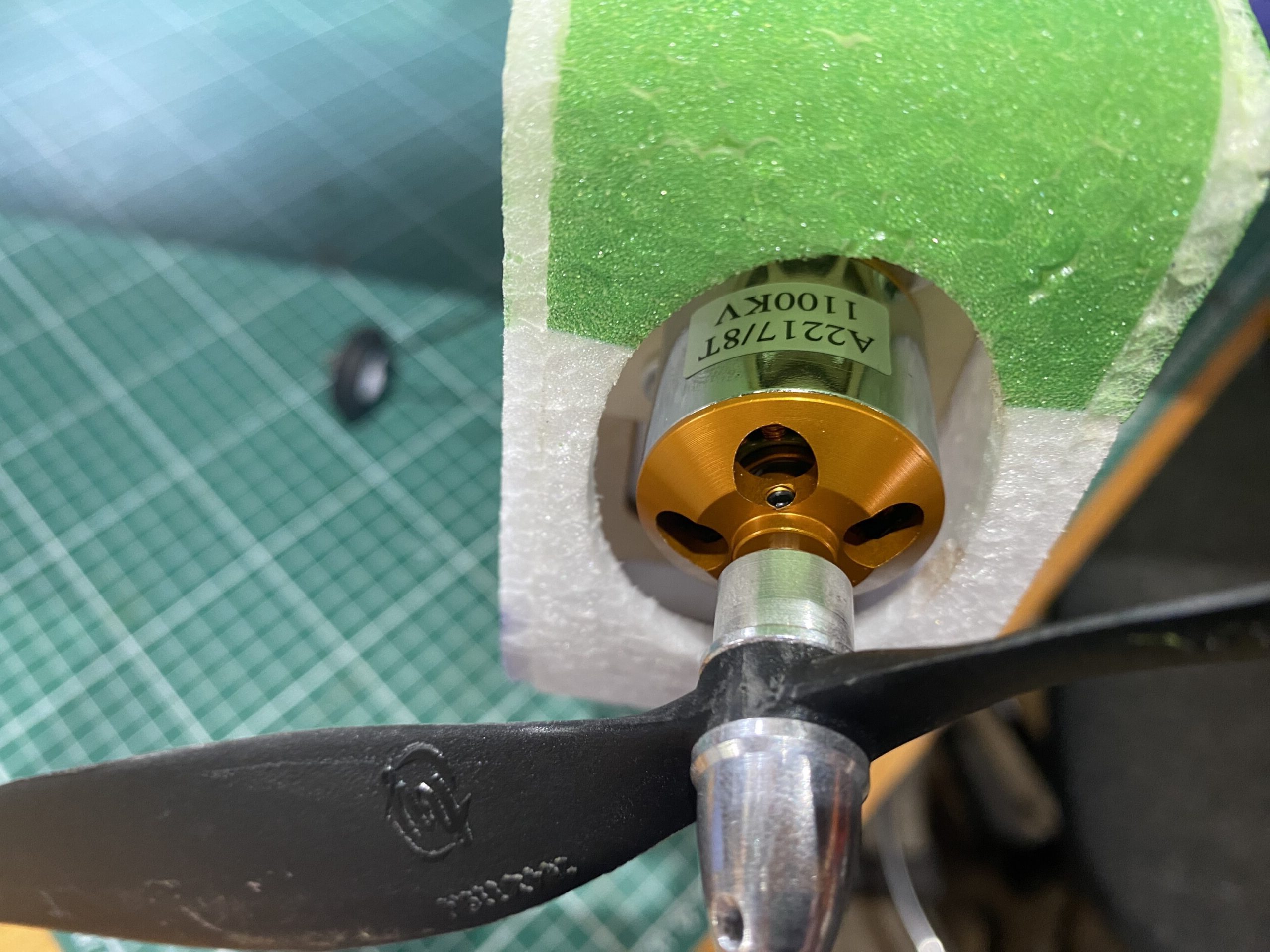 Dougal tells me I’ve fitted the ‘slow flight’ prop, news to me. I played around with where to fit the receiver (superior Spektrum since you ask) battery and esc and didn’t really come up with a suitable answer. Dougal said he’d had to do a lot of hollowing out to fit a 2200mAh lipo. Without any hollowing there was enough space for my 1600 lipo but then nowhere for the esc, so I decided to leave it dangling and post it into the canopy, which is then held in place by a tongue and a couple of magnets. It’s a bit fiddly but seems OK.
Dougal tells me I’ve fitted the ‘slow flight’ prop, news to me. I played around with where to fit the receiver (superior Spektrum since you ask) battery and esc and didn’t really come up with a suitable answer. Dougal said he’d had to do a lot of hollowing out to fit a 2200mAh lipo. Without any hollowing there was enough space for my 1600 lipo but then nowhere for the esc, so I decided to leave it dangling and post it into the canopy, which is then held in place by a tongue and a couple of magnets. It’s a bit fiddly but seems OK.
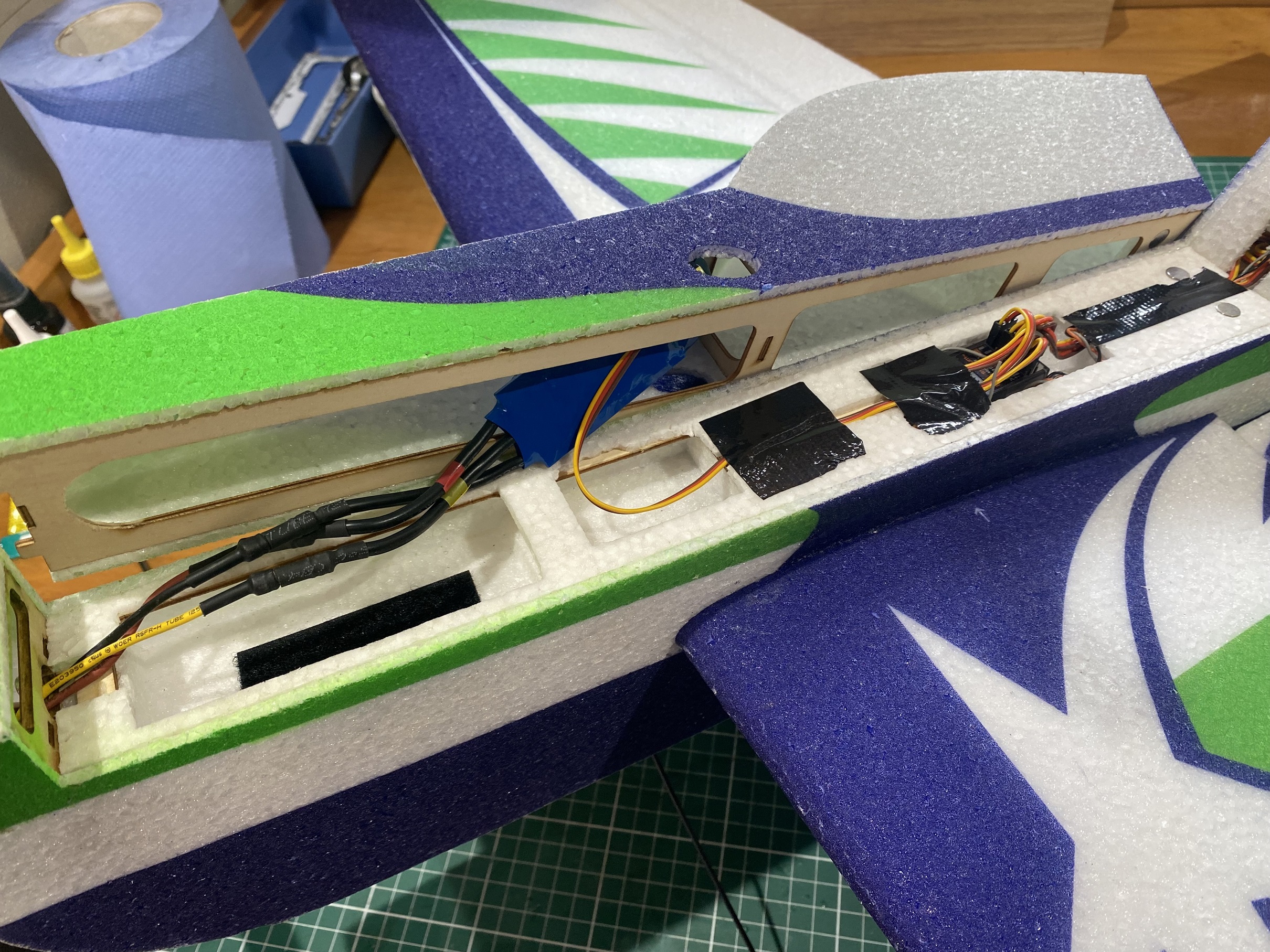 The first flight (Friday) went surprisingly well all things considered. The wheels are tiny and on a flimsy bit of wire so I didn’t even bother trying to roll off the patch and went for a hand launch instead. I’d dialled in 55% expo and max throws. She needed a bit of elevator trimming and that was it. Inverted needs a tiny push. Knife edge will take a bit of getting used to as I don’t need much throttle and only a little rudder. It’s all very different from my Acrowot. While packing up and chatting to Dougal I suddenly realised I’d connected to the outer hole on the elevator control horn so wasn’t getting maximum throw. This needed to be sorted at home as I needed to ream out the correct hole. So, second flight was on Sunday was with new and improved elevator throw. When I say ‘improved’ I should perhaps say terrifying and near uncontrollable. I limped around the circuit with huge altitude and pitch changes even though I was only breathing on the stick. With sweat dripping off my brow, I landed ASAP and dialled in some throw reduction and more expo. This has made it flyable, but I’ll need to try a few more tweaks as I learn to fly it. I have absolutely no idea how to do all the spinning, humpy bump etc., malarkey but I’ll still have fun trying to master a four-point roll. There is definitely a long way to go. Gordon was kind (stupid?) enough to let me have a flight with the MX2 and I found it to be a good flying model that’ll do whatever the pilot wants it to do. I’m not really into 3D like Dougal and 1066 but found I could knife-edge and prop hang it fairly easily so I’m sure Gordon will quickly get into all that stuff. If you’d like one for yourself HobbyKing are listing it in the UK warehouse at a back-order price of just £64.86 at the time of writing but you will have to wait until the end of the month, maybe longer.
The first flight (Friday) went surprisingly well all things considered. The wheels are tiny and on a flimsy bit of wire so I didn’t even bother trying to roll off the patch and went for a hand launch instead. I’d dialled in 55% expo and max throws. She needed a bit of elevator trimming and that was it. Inverted needs a tiny push. Knife edge will take a bit of getting used to as I don’t need much throttle and only a little rudder. It’s all very different from my Acrowot. While packing up and chatting to Dougal I suddenly realised I’d connected to the outer hole on the elevator control horn so wasn’t getting maximum throw. This needed to be sorted at home as I needed to ream out the correct hole. So, second flight was on Sunday was with new and improved elevator throw. When I say ‘improved’ I should perhaps say terrifying and near uncontrollable. I limped around the circuit with huge altitude and pitch changes even though I was only breathing on the stick. With sweat dripping off my brow, I landed ASAP and dialled in some throw reduction and more expo. This has made it flyable, but I’ll need to try a few more tweaks as I learn to fly it. I have absolutely no idea how to do all the spinning, humpy bump etc., malarkey but I’ll still have fun trying to master a four-point roll. There is definitely a long way to go. Gordon was kind (stupid?) enough to let me have a flight with the MX2 and I found it to be a good flying model that’ll do whatever the pilot wants it to do. I’m not really into 3D like Dougal and 1066 but found I could knife-edge and prop hang it fairly easily so I’m sure Gordon will quickly get into all that stuff. If you’d like one for yourself HobbyKing are listing it in the UK warehouse at a back-order price of just £64.86 at the time of writing but you will have to wait until the end of the month, maybe longer.
Speaking of Gordon, towards the end of the month I was innocently flying my beautiful Hornet carefully around the sky, minding my own business, when Ghastly Gordon decided to smash his manky old Mig-29 straight into the Hornet! And then, just to rub salt into the wounds, he did a victory roll overhead while I was picking up all the pieces. Nasty man!
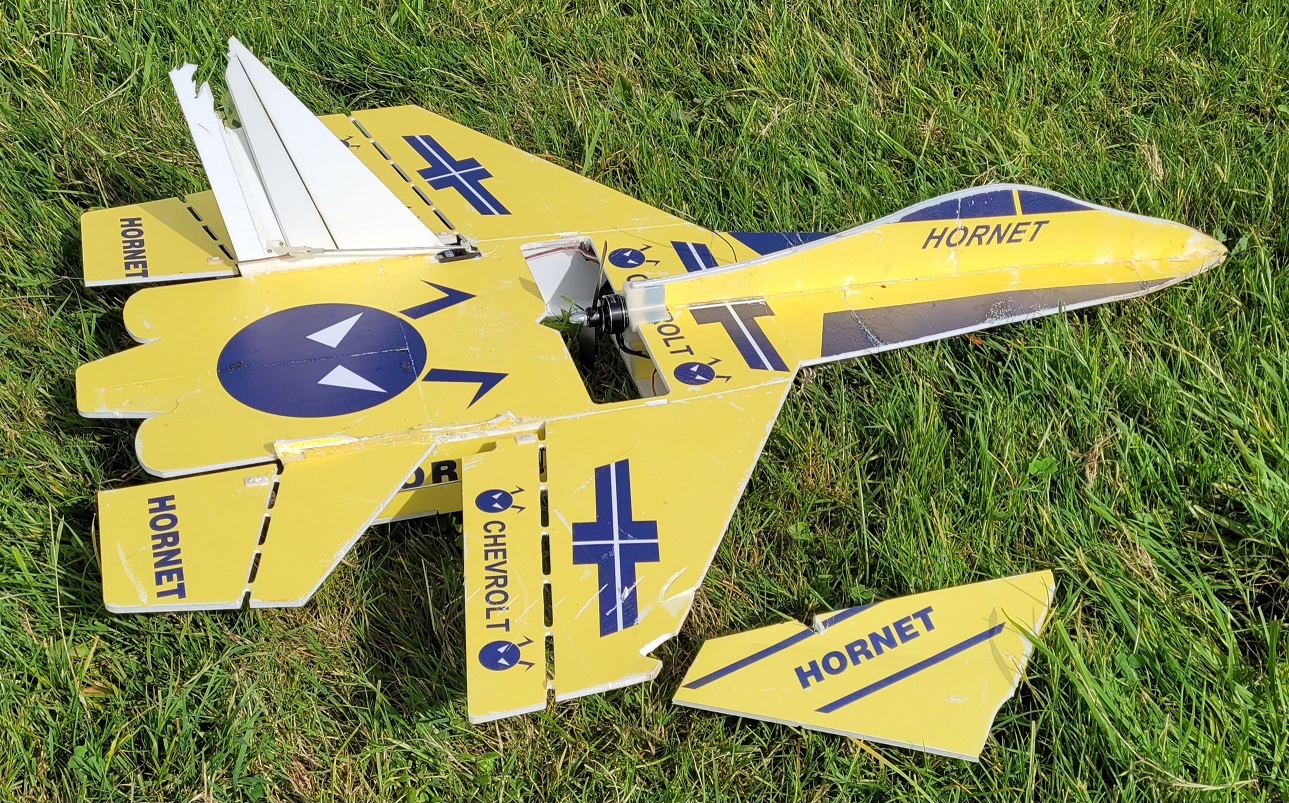
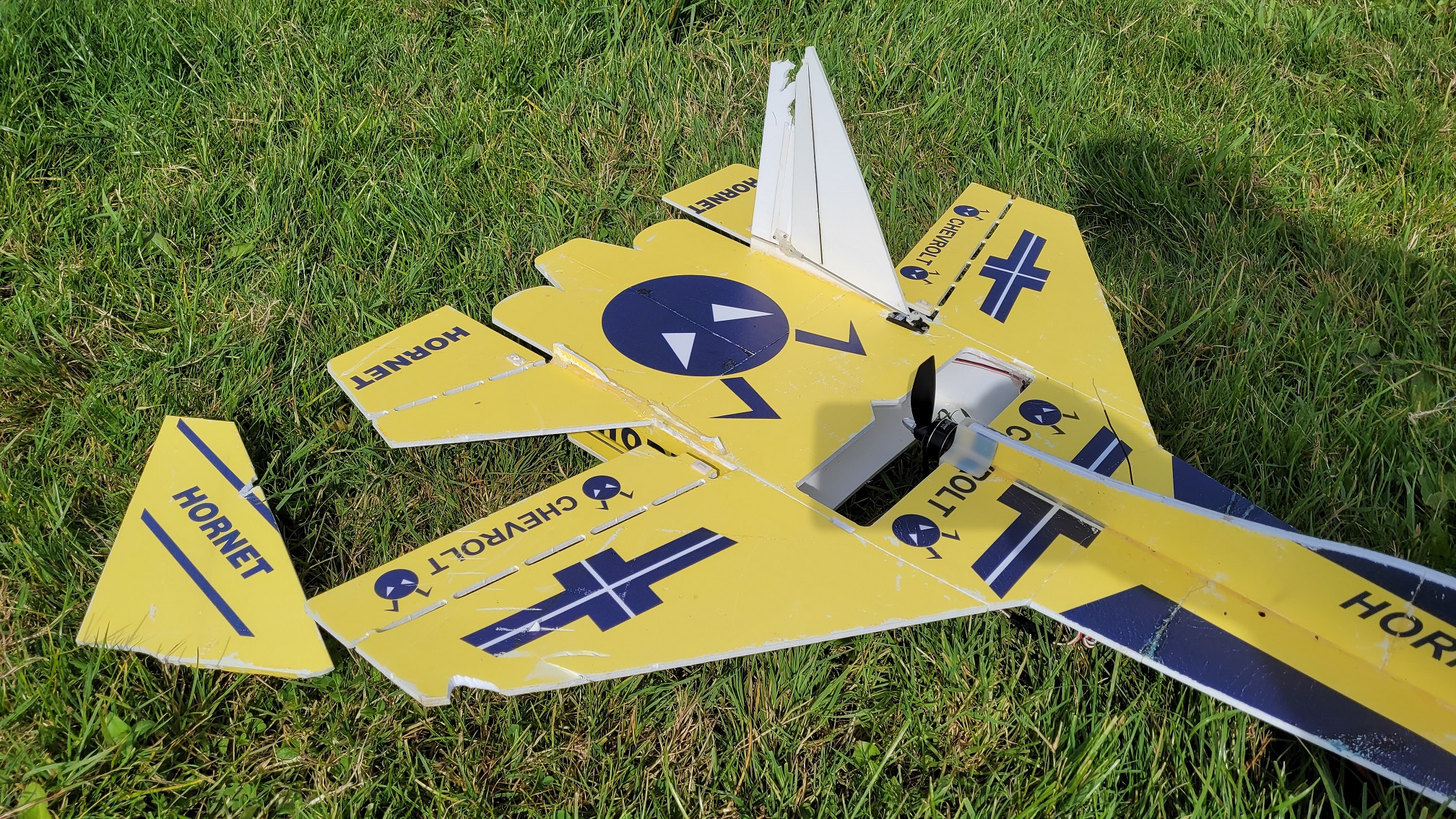 Mind you I found two videos this month which prove beyond doubt that we’re all rubbish at flying these things. I’ve combined them both so take a look, it’s less 40 seconds long:
Mind you I found two videos this month which prove beyond doubt that we’re all rubbish at flying these things. I’ve combined them both so take a look, it’s less 40 seconds long:
As I’ve said above HobbyKing have announced the opening of a new UK warehouse this month after pulling out of the UK back in October 2021. They say the reason is that the guy who started the company many years ago was taking a step back and wasn’t willing to invest in new products etc. but now some new investors have come along and are pushing development of projects that had been shelved and are expanding the whole set-up. Although the UK warehouse is already open there is currently virtually no stock but they are taking back-orders and much of it is at very good sale prices. A container is due to arrive mid-October so they are saying orders will be sent out towards the end of October.
 As soon as I saw the offers I jumped in and quickly ordered 3 x 3 cell 60C 2200mAh lipos and 3 x 4 cell 60C 2200mAh lipos which cost just under £70. HobbyKing work in dollars so although prices are shown in GDP the actual amount you pay will alter slightly with the currency conversion on the day the payment goes through. My order for six lipos showed at £67.93 on the order but was £69.87 on my credit card statement so be aware the price will alter slightly, sometimes up, sometime down. I suppose there is a slight risk with back-ordering from a company that has almost zero stock but at those prices I decided it was a risk worth taking. Hopefully by the time I write the next Patch News I’ll be able to tell you that my order has arrived. Over the years there has been a lot of controversy over HobbyKing, some people hate them and complain constantly about lack of customer service etc. but others (including me) have had few problems and on the rare occasion I’ve needed to deal with their Customer Services I’ve always been sorted out quickly and fairly.
As soon as I saw the offers I jumped in and quickly ordered 3 x 3 cell 60C 2200mAh lipos and 3 x 4 cell 60C 2200mAh lipos which cost just under £70. HobbyKing work in dollars so although prices are shown in GDP the actual amount you pay will alter slightly with the currency conversion on the day the payment goes through. My order for six lipos showed at £67.93 on the order but was £69.87 on my credit card statement so be aware the price will alter slightly, sometimes up, sometime down. I suppose there is a slight risk with back-ordering from a company that has almost zero stock but at those prices I decided it was a risk worth taking. Hopefully by the time I write the next Patch News I’ll be able to tell you that my order has arrived. Over the years there has been a lot of controversy over HobbyKing, some people hate them and complain constantly about lack of customer service etc. but others (including me) have had few problems and on the rare occasion I’ve needed to deal with their Customer Services I’ve always been sorted out quickly and fairly.
In September Mini-Mike treated himself to a very nice L-39 Albatros from Arrows Hobby.
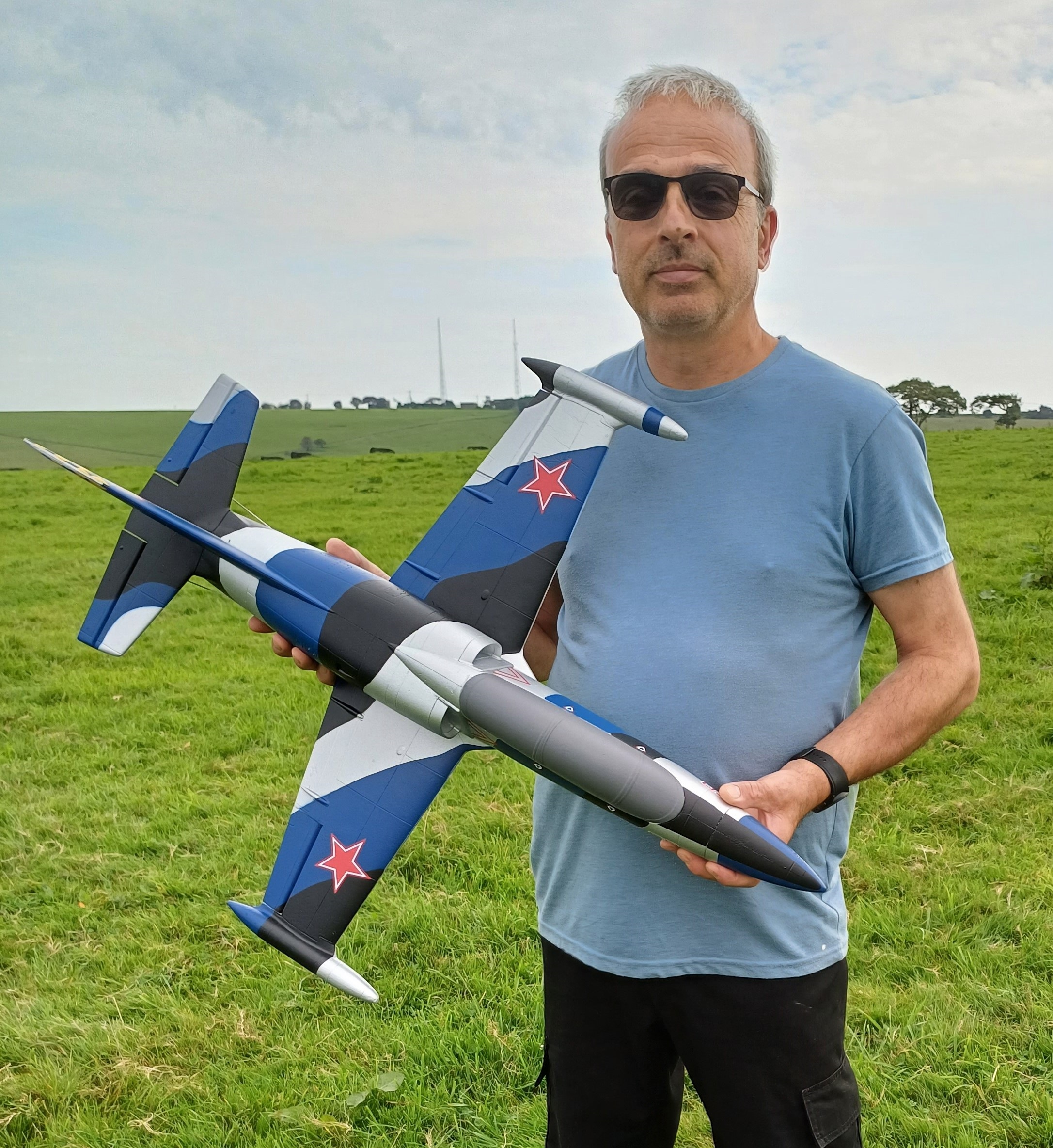 That’s the same company that manufactures the Red Arrows Hawk that Mike already flies and the Vipers that Gordon and 1066 both fly regularly. Arrows Hobby also produce the T-33 Shooting Star that Chas owns although I’ve only seen that fly once so far.
That’s the same company that manufactures the Red Arrows Hawk that Mike already flies and the Vipers that Gordon and 1066 both fly regularly. Arrows Hobby also produce the T-33 Shooting Star that Chas owns although I’ve only seen that fly once so far.
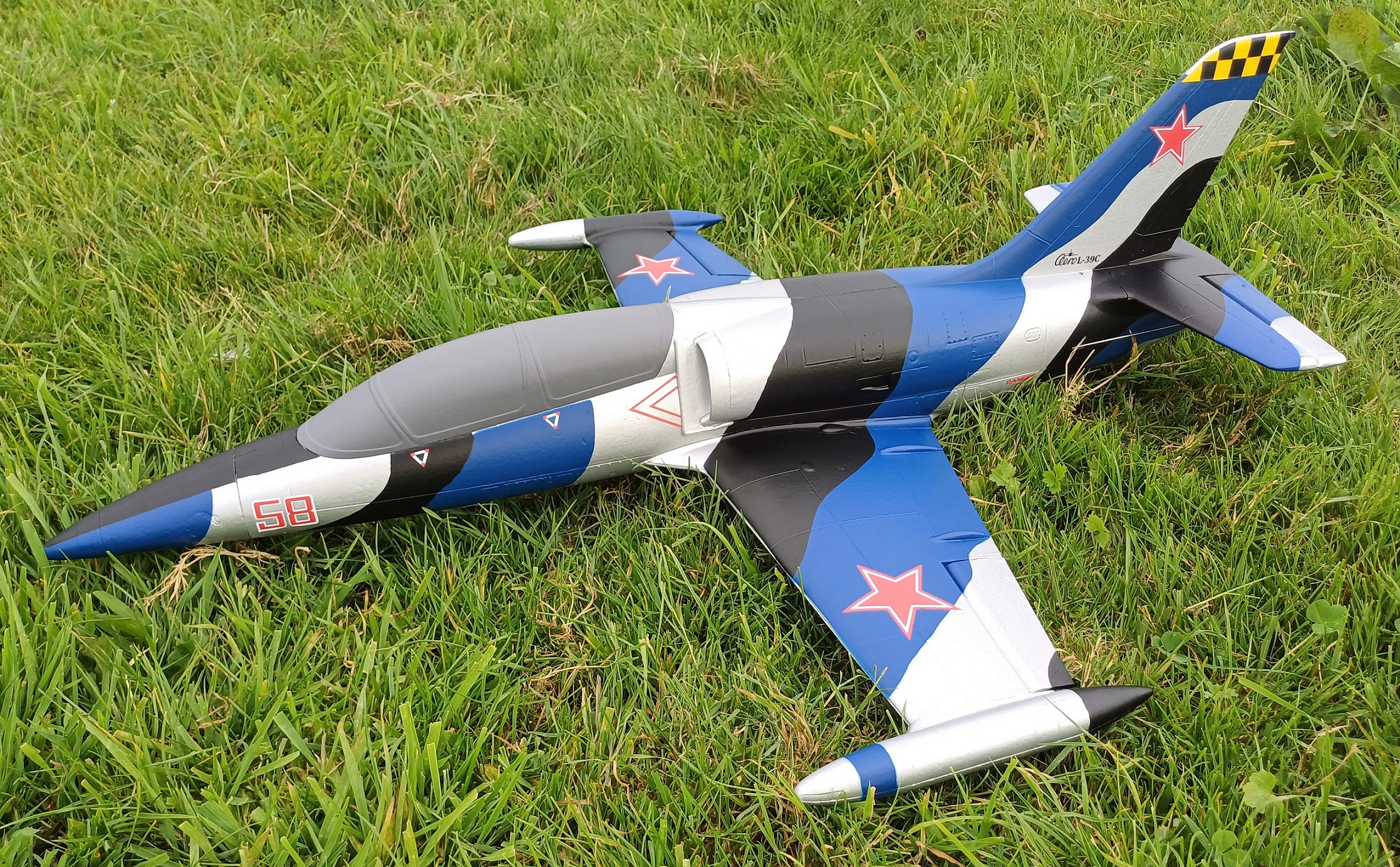 All of these models feature the same 50mm fan and 2627 4500kv motor so should have a similar performance with only the ducting and drag on the airframe making a difference.
All of these models feature the same 50mm fan and 2627 4500kv motor so should have a similar performance with only the ducting and drag on the airframe making a difference. 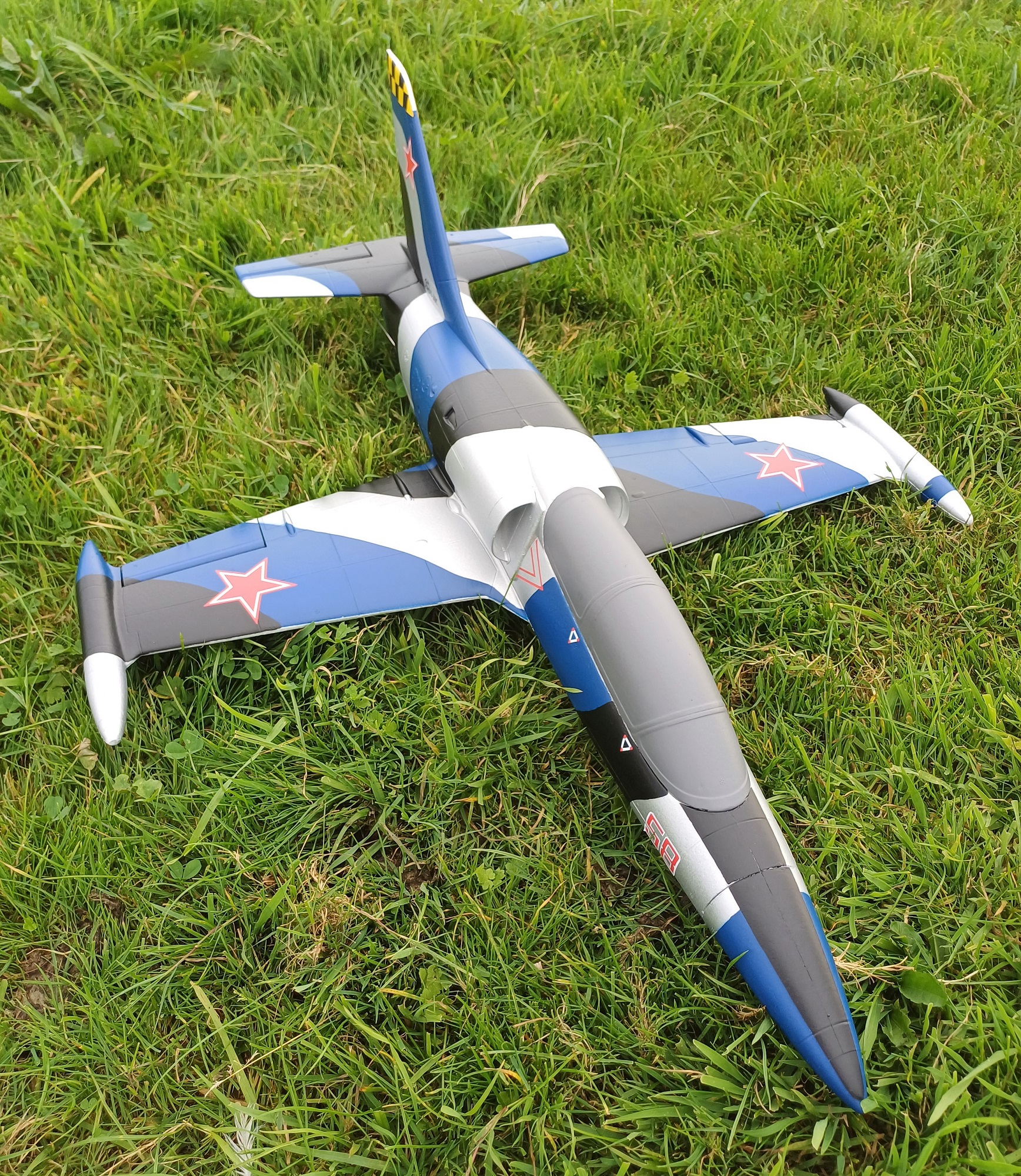 Mini-Mike’s Albatros flies very well although he says it’s not as fast as his Red Arrows Hawk, presumably because the fuselage is not as sleek. It comes fitted with the fan, motor, 30A esc, 3 digital servos and unlike the others in the range, a 6 axis gyro. It looks great in the air, very smooth and scale-like, no doubt helped by the gyro,. You can see it in this month’s video. There is also a 50mm fan Avanti coming from Arrows Hobby…tempting!
Mini-Mike’s Albatros flies very well although he says it’s not as fast as his Red Arrows Hawk, presumably because the fuselage is not as sleek. It comes fitted with the fan, motor, 30A esc, 3 digital servos and unlike the others in the range, a 6 axis gyro. It looks great in the air, very smooth and scale-like, no doubt helped by the gyro,. You can see it in this month’s video. There is also a 50mm fan Avanti coming from Arrows Hobby…tempting!
On 23rd September Dougal and I went down to Lee-on-Solent to watch a flying display along the seafront. It was part of the Lee Victory Festival, a ticketed three day event that took place on Solent Airport, formerly HMS Daedalus. The Saturday morning had perfect flying conditions and we were able to park up easily and find a prime spot to watch the display which began with a Fairey Swordfish, part of the Royal Navy Historic Flight.
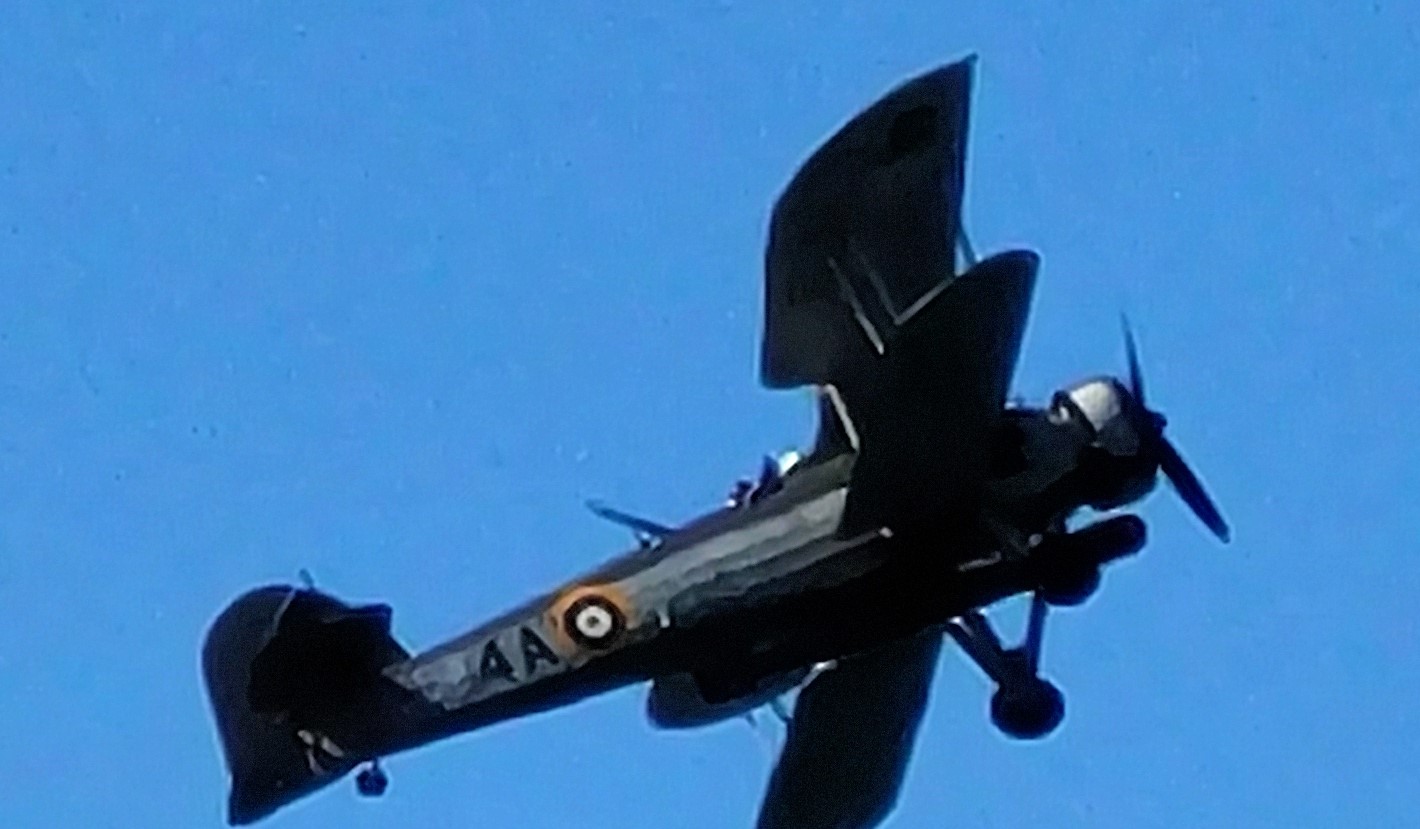 After displaying for a few minutes it was chased off by a Messerschmitt Bf108 which then did its own display. But then a Spitfire roared in and gave chase until the pilot managed to shoot the 108 which then trailed lots of smoke before disappearing over the channel.
After displaying for a few minutes it was chased off by a Messerschmitt Bf108 which then did its own display. But then a Spitfire roared in and gave chase until the pilot managed to shoot the 108 which then trailed lots of smoke before disappearing over the channel.
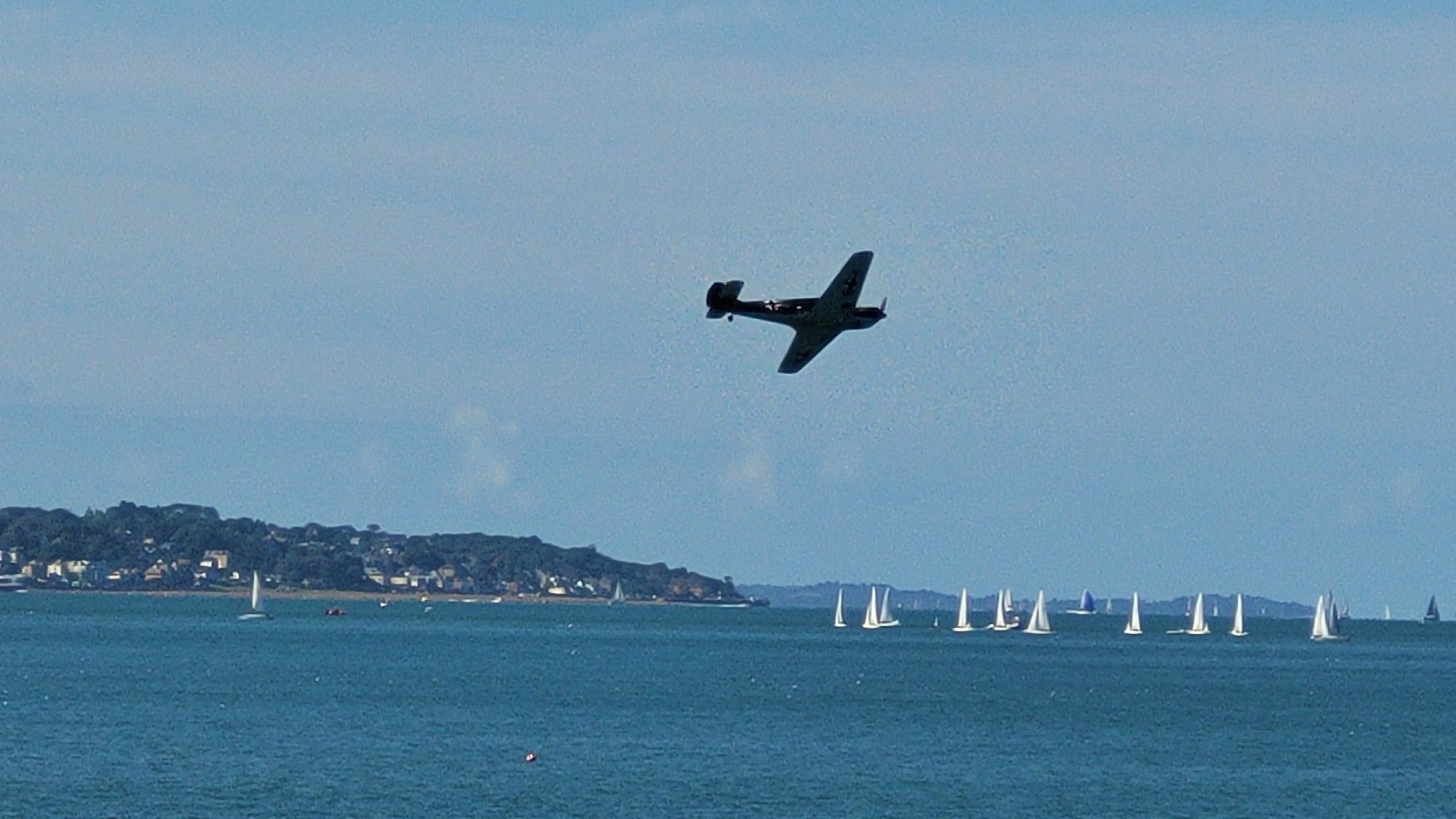
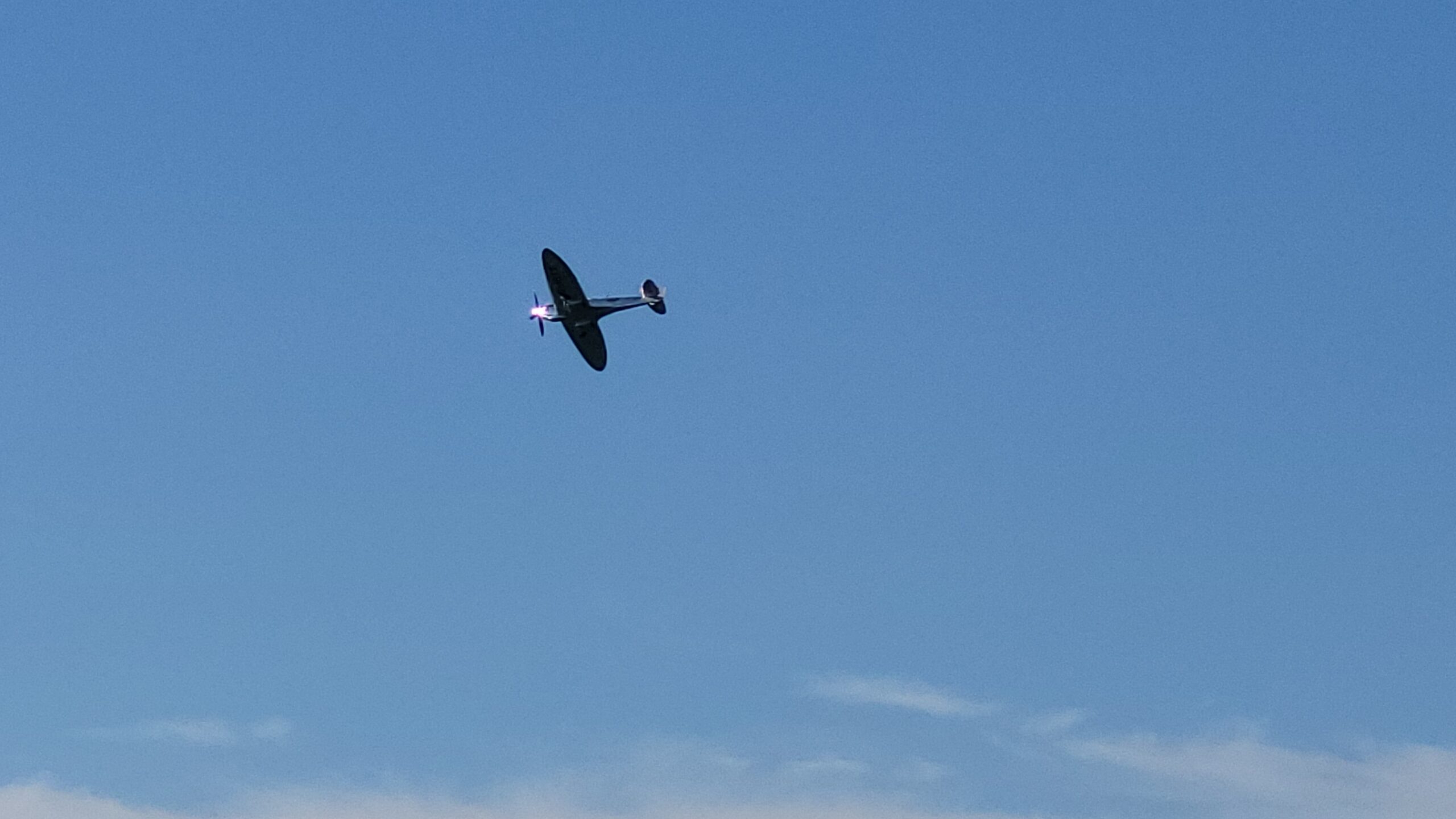 Then a Hurricane joined the victorious Spit and they displayed together for the finale.
Then a Hurricane joined the victorious Spit and they displayed together for the finale.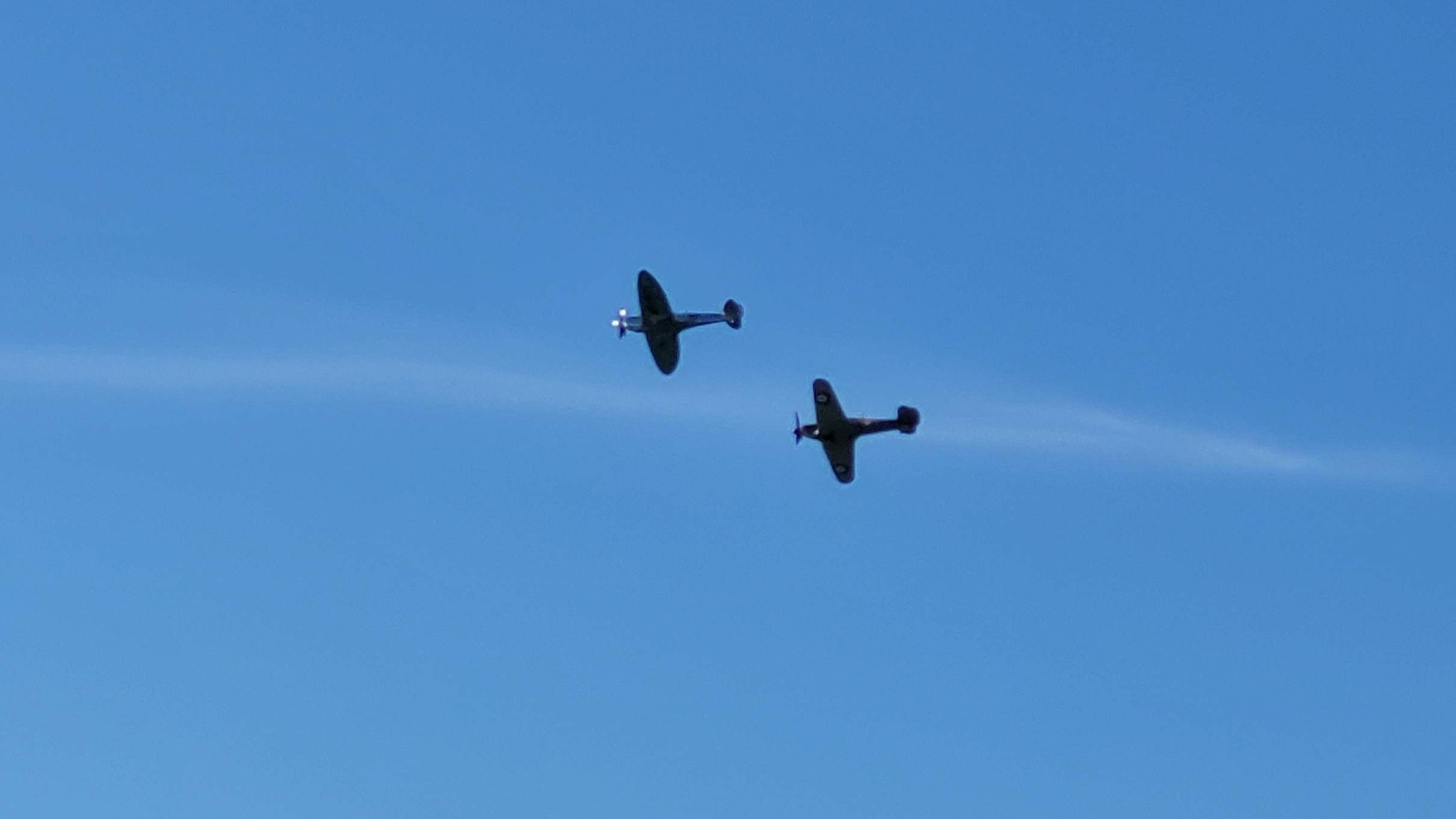
Dougal and I both filmed some of the action and I’ve made the footage into a short video:
As I said earlier young Leo bought himself a second-hand Salto at the Popham Model Show bring and buy. If I remember correctly he paid £80 for it which seems good for a largish electric glider that’s complete and ready to fly. It was built from a Wik kit and I’ve scoured the internet for some information but found very little. Apparently it’s an H-101 Salto (Loop) and Wik produced the kit in about 1975 so it’s pretty old.
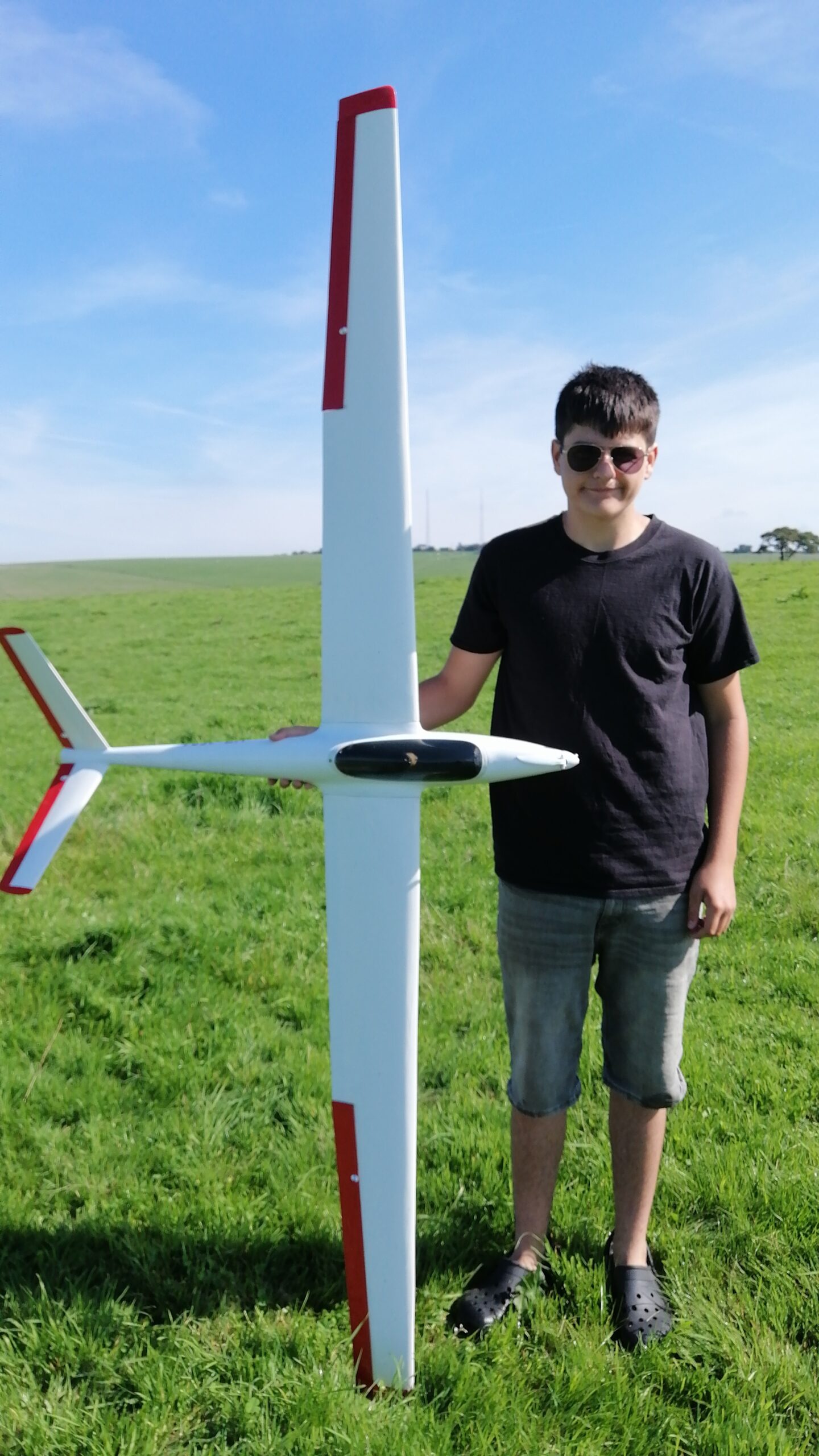 It is 2.3M span and has a fibreglass fuselage and sheeted built-up wings. I don’t think they made an electric version so presumably Leo’s has been converted and it has been fitted with a high Kv motor and a small folding prop. It looks very smart and, as you can see in this month’s video, it flies well so it was definitely a good purchase.
It is 2.3M span and has a fibreglass fuselage and sheeted built-up wings. I don’t think they made an electric version so presumably Leo’s has been converted and it has been fitted with a high Kv motor and a small folding prop. It looks very smart and, as you can see in this month’s video, it flies well so it was definitely a good purchase.
Woody also bought himself an electric glider in September but he bought a new one, a Max Thrust Aggressor Sport. There’s already several of these in the club and they are excellent performers, they are good for aerobatics, will fly in strong winds, and glide pretty well. 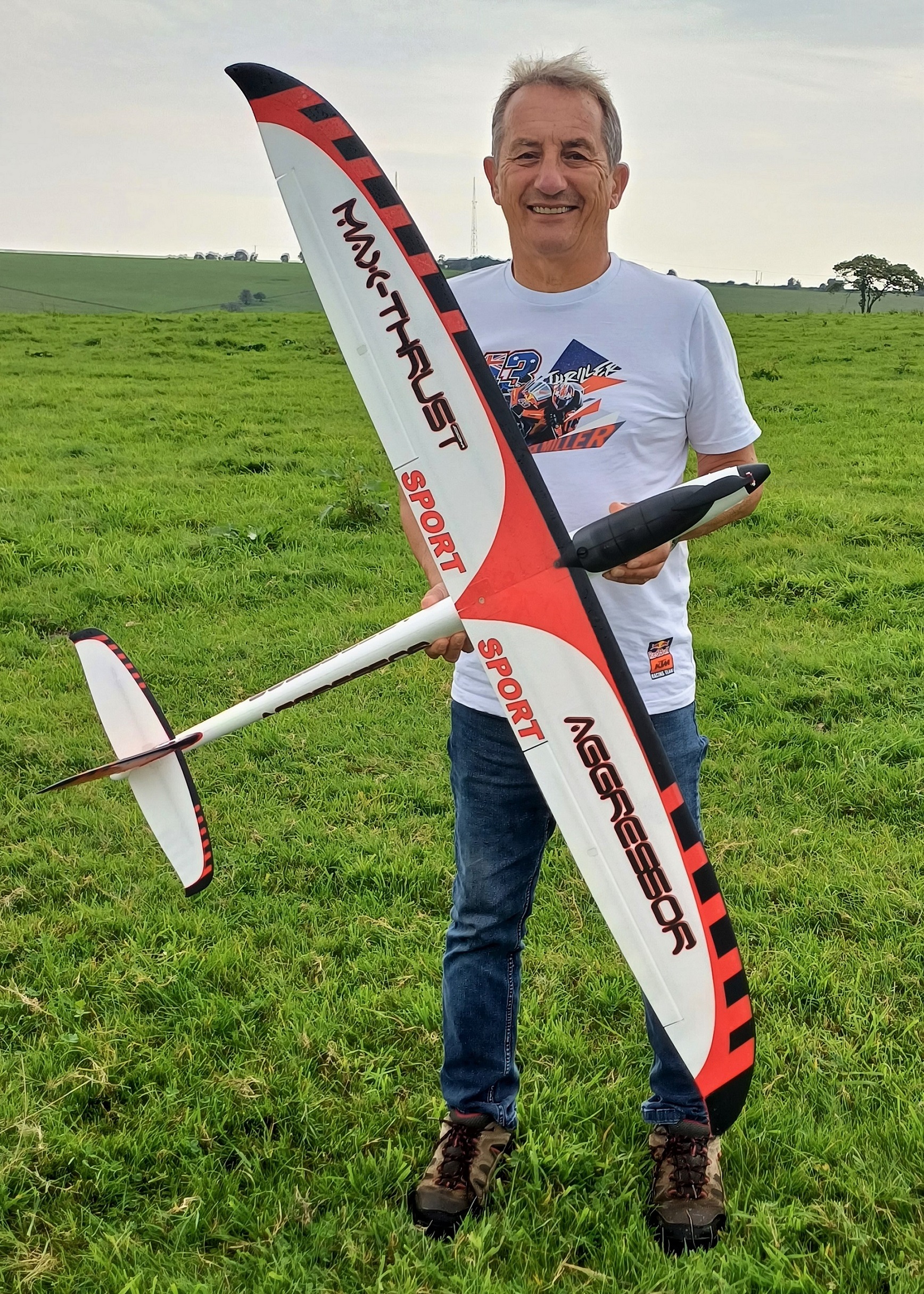 Woody bought his from Model Shop Leeds where their website says this: The Aggressor range of gliders offers high performance in more ways than you think. They have great high-speed stability both under power and also on the glide. Constructed from our new super smooth EPOFLEXY with carbon spars in the wings and fuselage giving a very strong airframe. The Aggressor Sport is at home both on the field or the slope where with the high-performance brushless power system you can either hunt out the lift or power through F3A style aerobatics. The model features high-speed servos throughout and even has a metal geared one on the all-moving tail to give you a very precise and accurate tail. With a 1.5 metre wingspan using a 3 cell 2200mAh pack you will be able to get the model into pretty much any car easily. If you really want to extend the ability of the Sport why not order up the Thermic wing extension to extend the wingspan by an additional 600mm to transform the model into 2.1 metre thermal hunter. Chas bought the Thermic wing extension for his Aggressor but I don’t think I’ve seen it fly with the extension in place. 1066 has a Max Thrust Lightning, the predecessor of the Aggressor so he was ideally suited to do the trimming flight for Woody and he had no problems at all.
Woody bought his from Model Shop Leeds where their website says this: The Aggressor range of gliders offers high performance in more ways than you think. They have great high-speed stability both under power and also on the glide. Constructed from our new super smooth EPOFLEXY with carbon spars in the wings and fuselage giving a very strong airframe. The Aggressor Sport is at home both on the field or the slope where with the high-performance brushless power system you can either hunt out the lift or power through F3A style aerobatics. The model features high-speed servos throughout and even has a metal geared one on the all-moving tail to give you a very precise and accurate tail. With a 1.5 metre wingspan using a 3 cell 2200mAh pack you will be able to get the model into pretty much any car easily. If you really want to extend the ability of the Sport why not order up the Thermic wing extension to extend the wingspan by an additional 600mm to transform the model into 2.1 metre thermal hunter. Chas bought the Thermic wing extension for his Aggressor but I don’t think I’ve seen it fly with the extension in place. 1066 has a Max Thrust Lightning, the predecessor of the Aggressor so he was ideally suited to do the trimming flight for Woody and he had no problems at all.
Bob the Builder was lucky enough to have a flight in a microlight early in September after a visitor to the field turned out to own one and offered Bob a flight that evening.
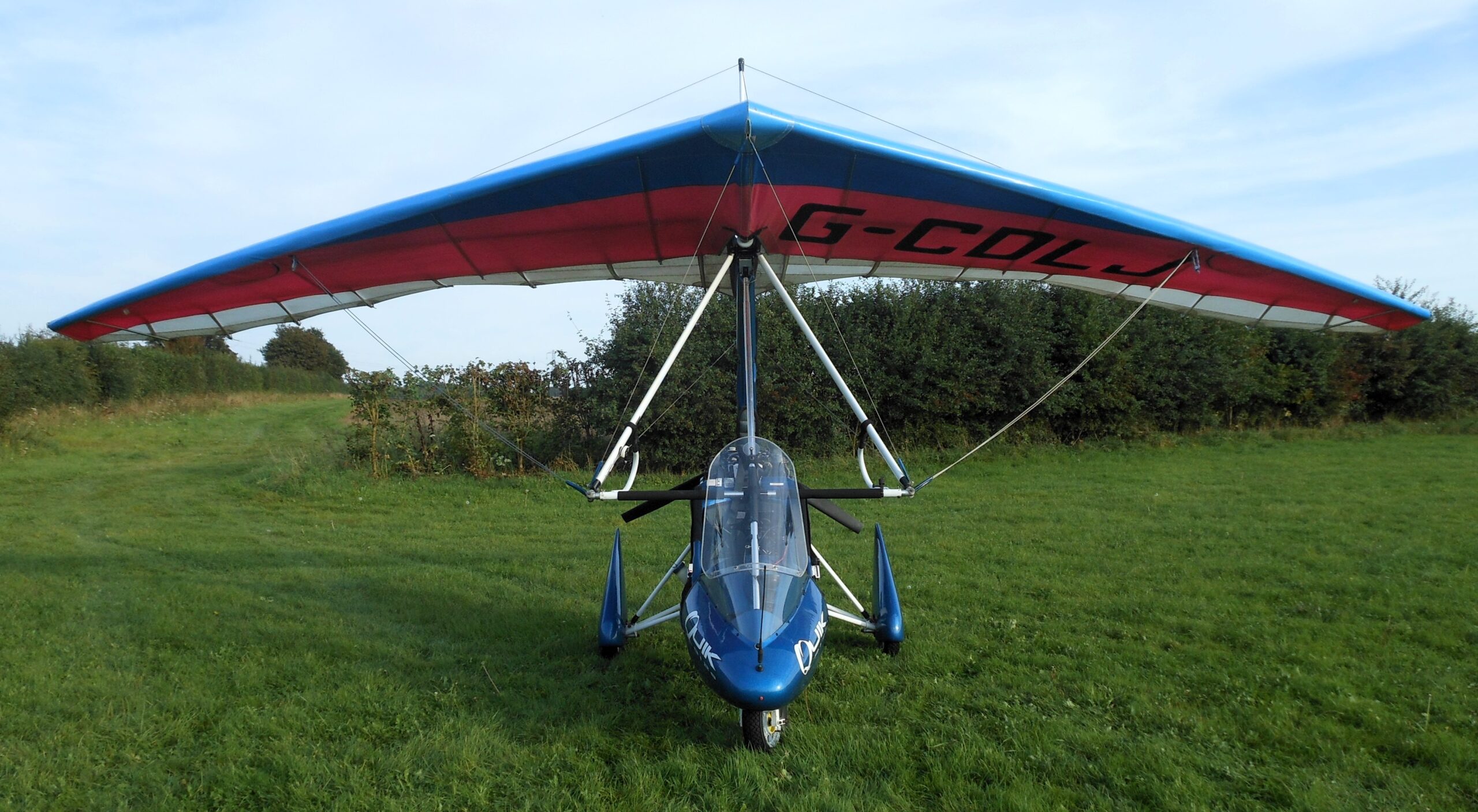 Here’s Bob’s report: Sunday morning I went to fly my models not knowing that 12 hours later I would be in the air myself! I tried hang-gliding 50 years ago and gave up after 2 crashes. It was completely uncontrolled then and quite risky, things have changed a lot since then. Proper flexible wings have been developed along with reliable engines have been used to produce modern Microlights making the whole thing a lot safer.
Here’s Bob’s report: Sunday morning I went to fly my models not knowing that 12 hours later I would be in the air myself! I tried hang-gliding 50 years ago and gave up after 2 crashes. It was completely uncontrolled then and quite risky, things have changed a lot since then. Proper flexible wings have been developed along with reliable engines have been used to produce modern Microlights making the whole thing a lot safer.
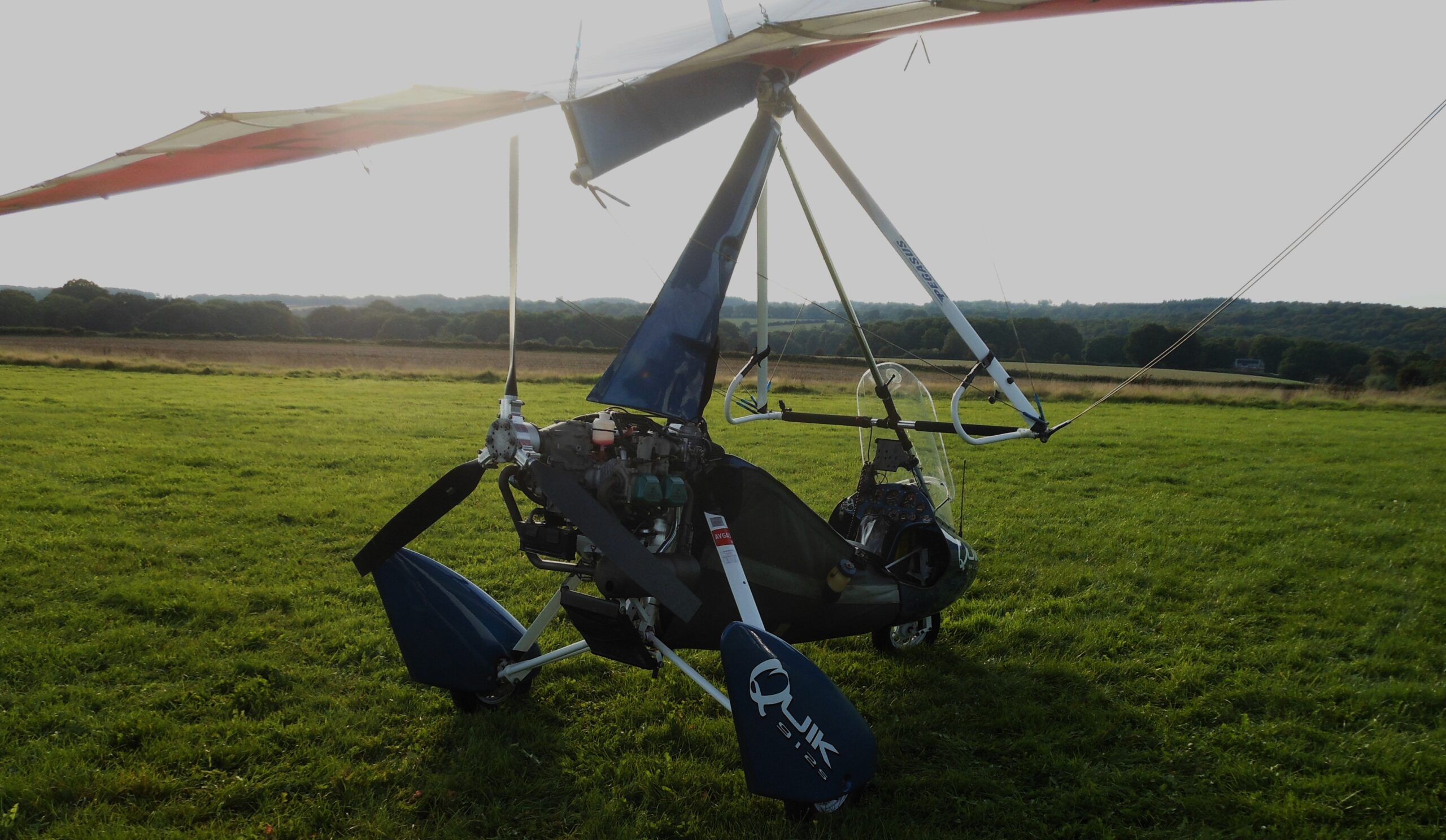 You can see from the pictures that the only flight controls are a control bar in front of the pilot and a throttle control. Moving the bar shifts the weight of the fuselage relative to the wing, side to side for turns, forward and backward for up and down.
You can see from the pictures that the only flight controls are a control bar in front of the pilot and a throttle control. Moving the bar shifts the weight of the fuselage relative to the wing, side to side for turns, forward and backward for up and down.
 Really simple and very little to go wrong. It was perfect conditions, dry, warm and no wind. After a suitable briefing by my excellent pilot, Julian James, I got in the back seat strapped in, put the helmet on and checked the intercom was working. After running the engine to get the temperature and pressure correct we taxied out to the runway opened the throttle and we were away in a south westerly direction for a 54 minute flight. The route look us over Winchester Hill, over the M27, down to the coast, over the Solent to Ryde on the Isle of Wight, back to Portsmouth, up the A3 to Butser, then to Stroud and over my house, before heading north west back to the landing field and a safe landing.
Really simple and very little to go wrong. It was perfect conditions, dry, warm and no wind. After a suitable briefing by my excellent pilot, Julian James, I got in the back seat strapped in, put the helmet on and checked the intercom was working. After running the engine to get the temperature and pressure correct we taxied out to the runway opened the throttle and we were away in a south westerly direction for a 54 minute flight. The route look us over Winchester Hill, over the M27, down to the coast, over the Solent to Ryde on the Isle of Wight, back to Portsmouth, up the A3 to Butser, then to Stroud and over my house, before heading north west back to the landing field and a safe landing.
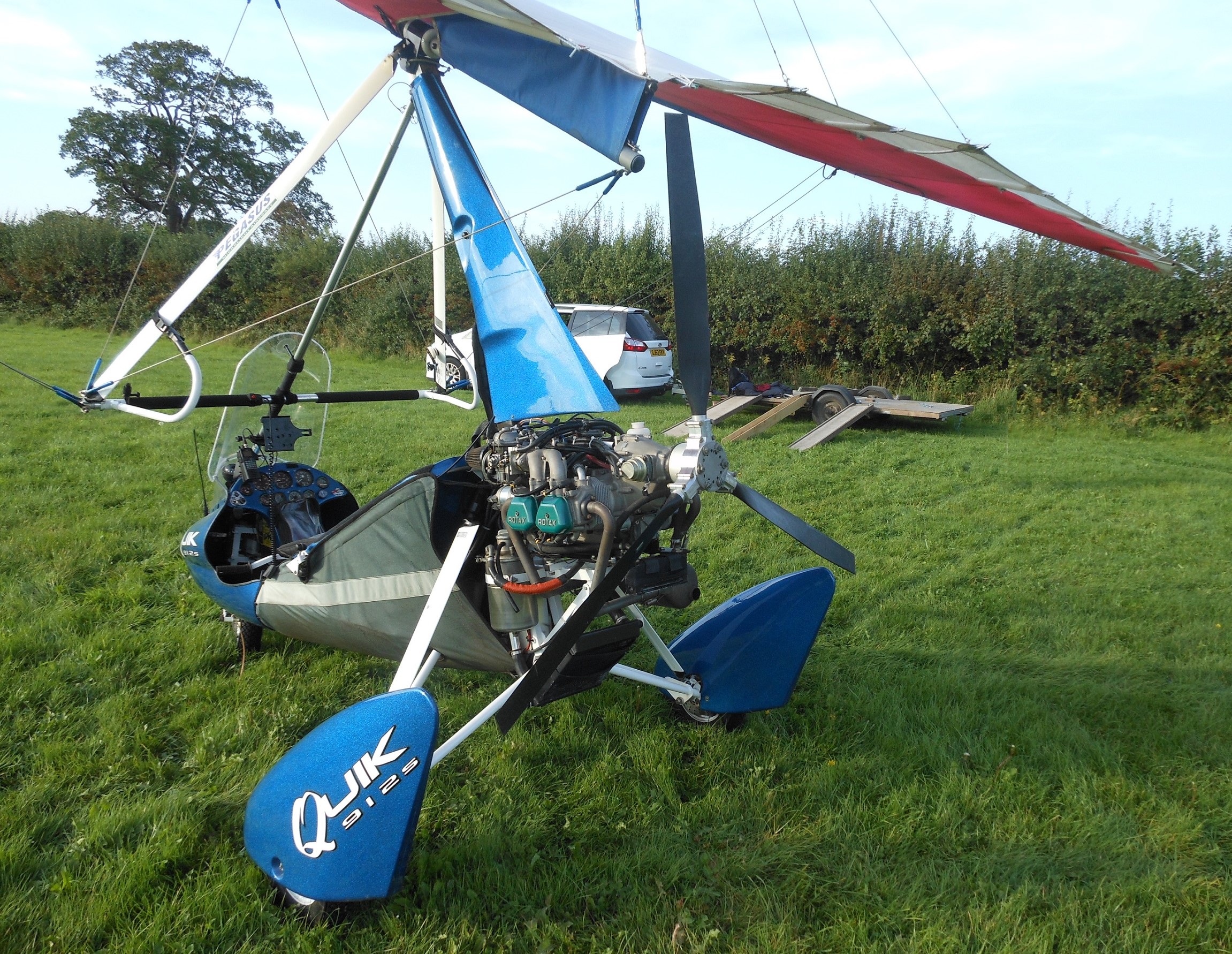 I was amazed at how safe I felt, there was never a moment’s anxiety. Views were magnificent and a wonderful feeling of freedom to move in 3 dimensions, just like a bird. Would I do it again, yes please! So if ever you a chance for a Microlight flight go for it. Bob sent me photos and lots of film so I’ve made an edited highlights version of the video:
I was amazed at how safe I felt, there was never a moment’s anxiety. Views were magnificent and a wonderful feeling of freedom to move in 3 dimensions, just like a bird. Would I do it again, yes please! So if ever you a chance for a Microlight flight go for it. Bob sent me photos and lots of film so I’ve made an edited highlights version of the video:
If you want to see the whole flight filmed by Julian’s on-board camera you’ll find it HERE
Now for some action photos, this month with a few of Kryten’s great photos from August:
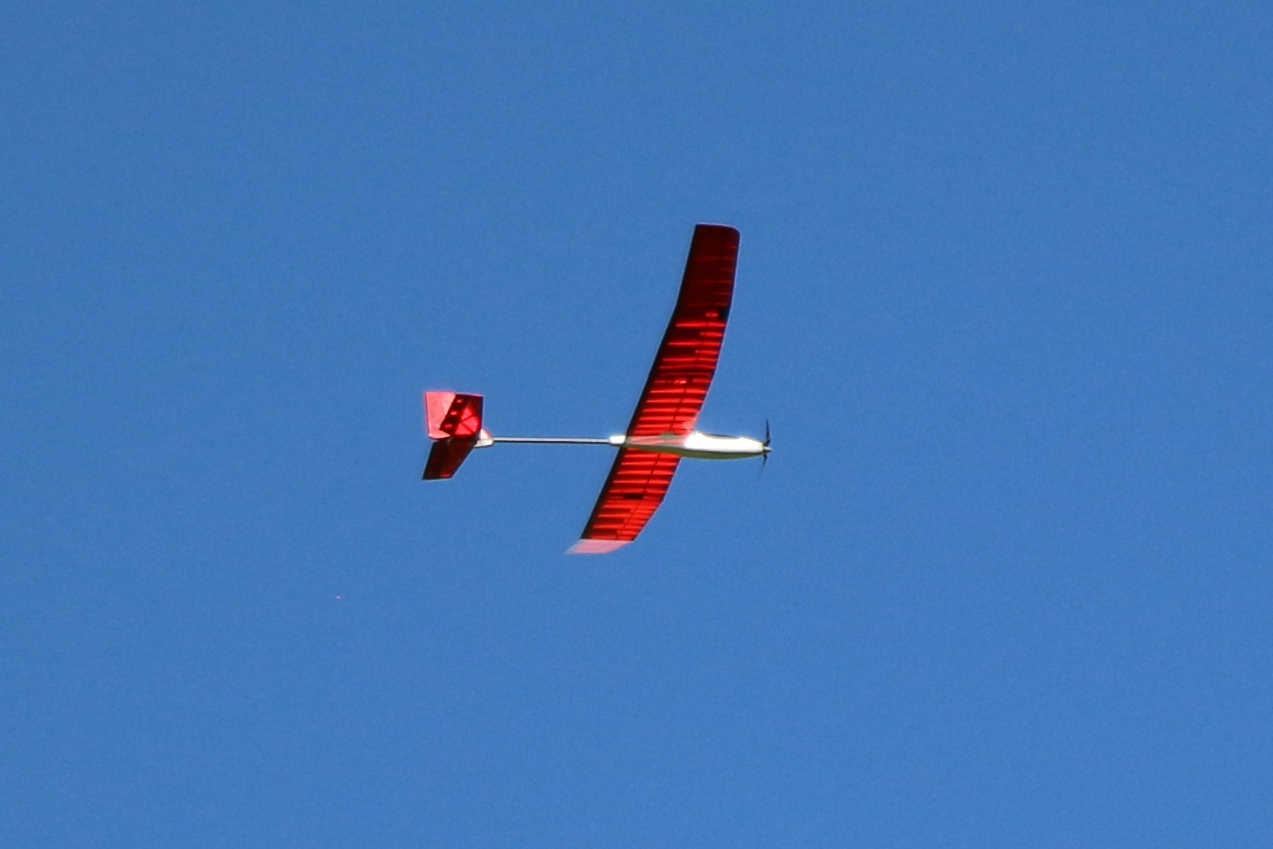
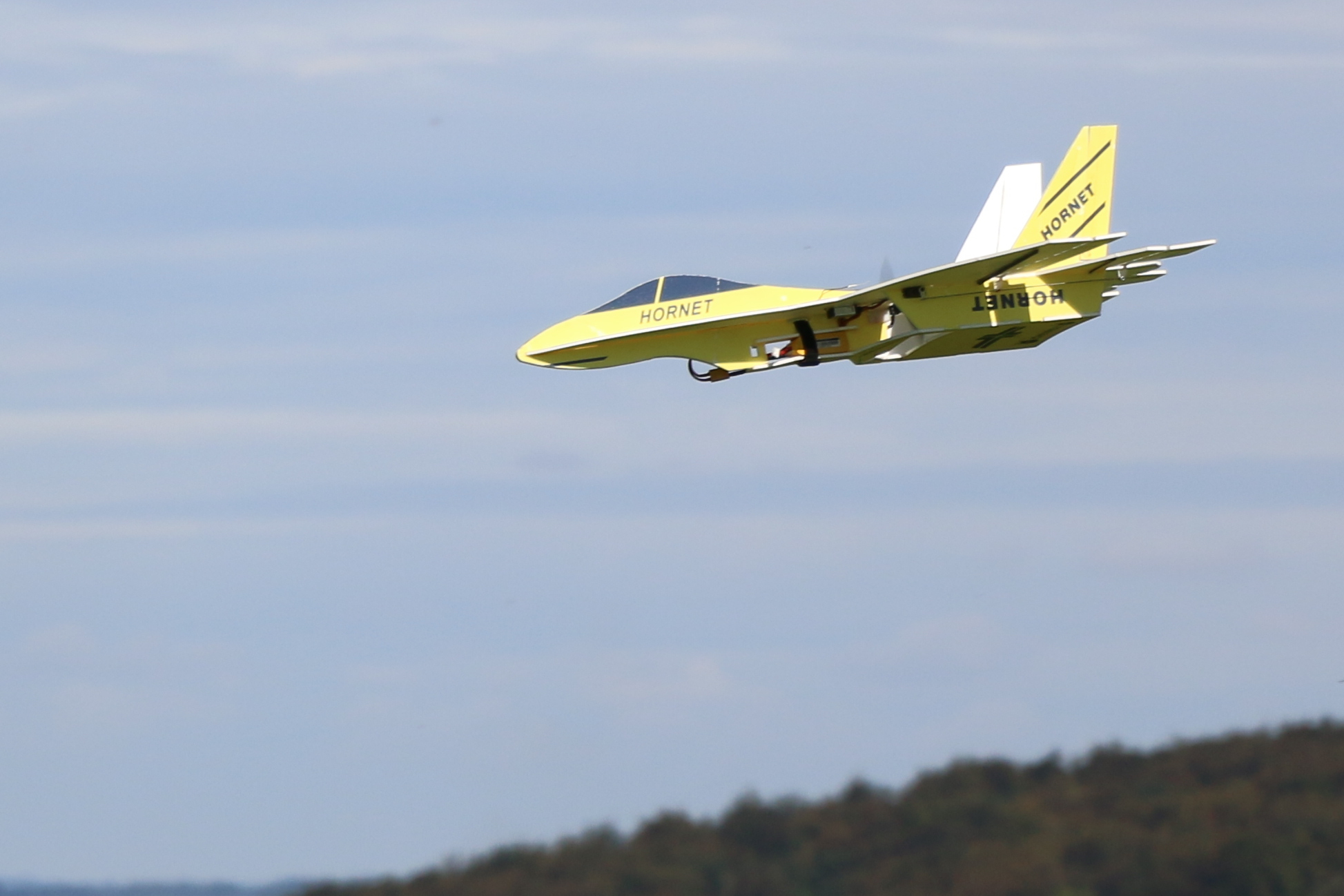
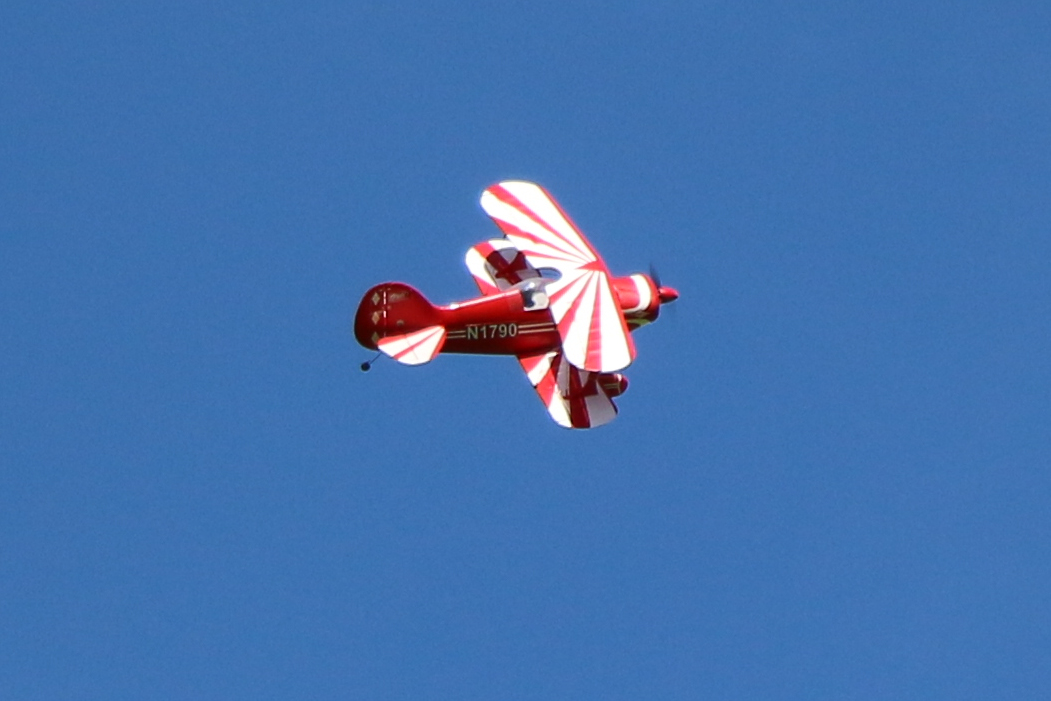
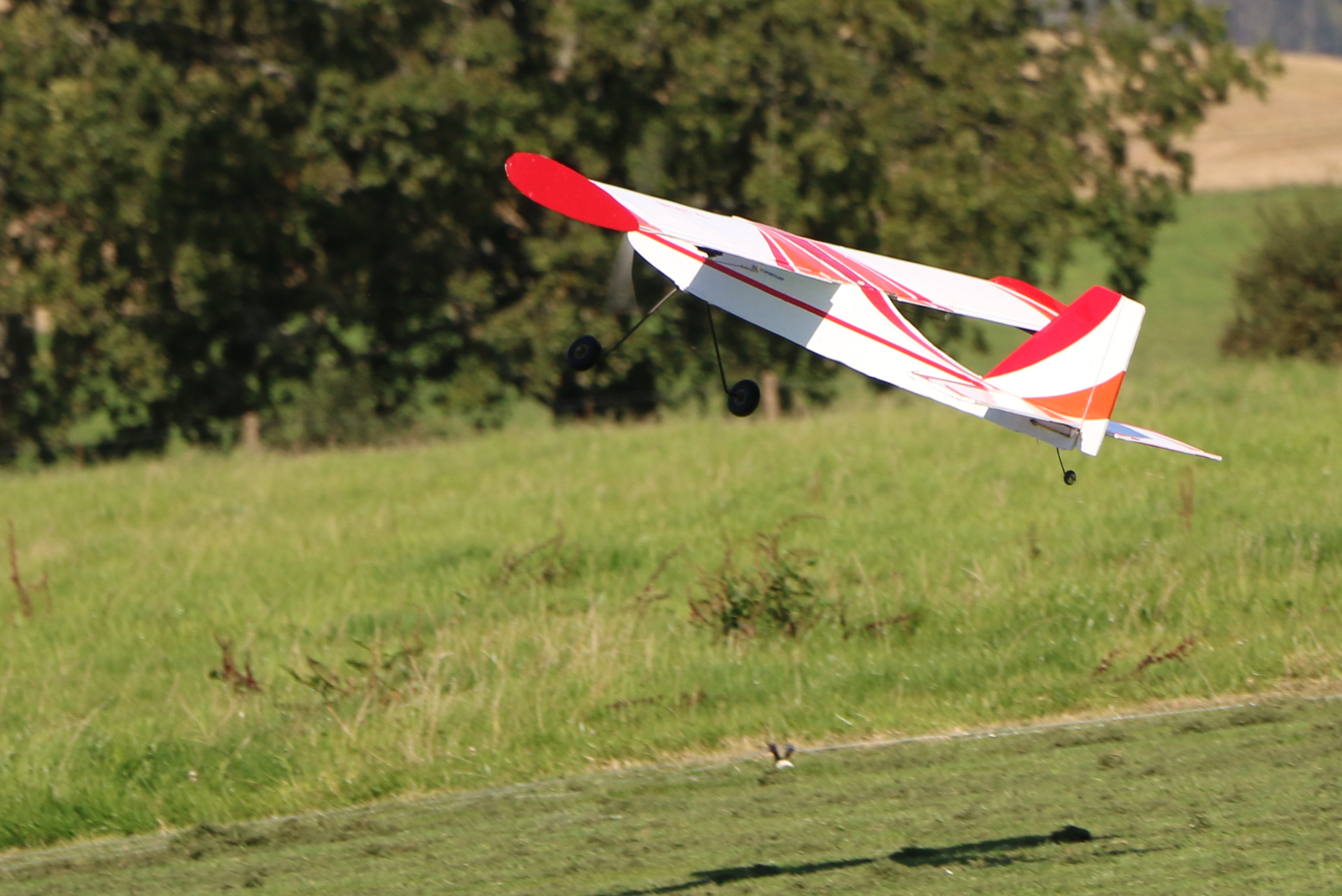
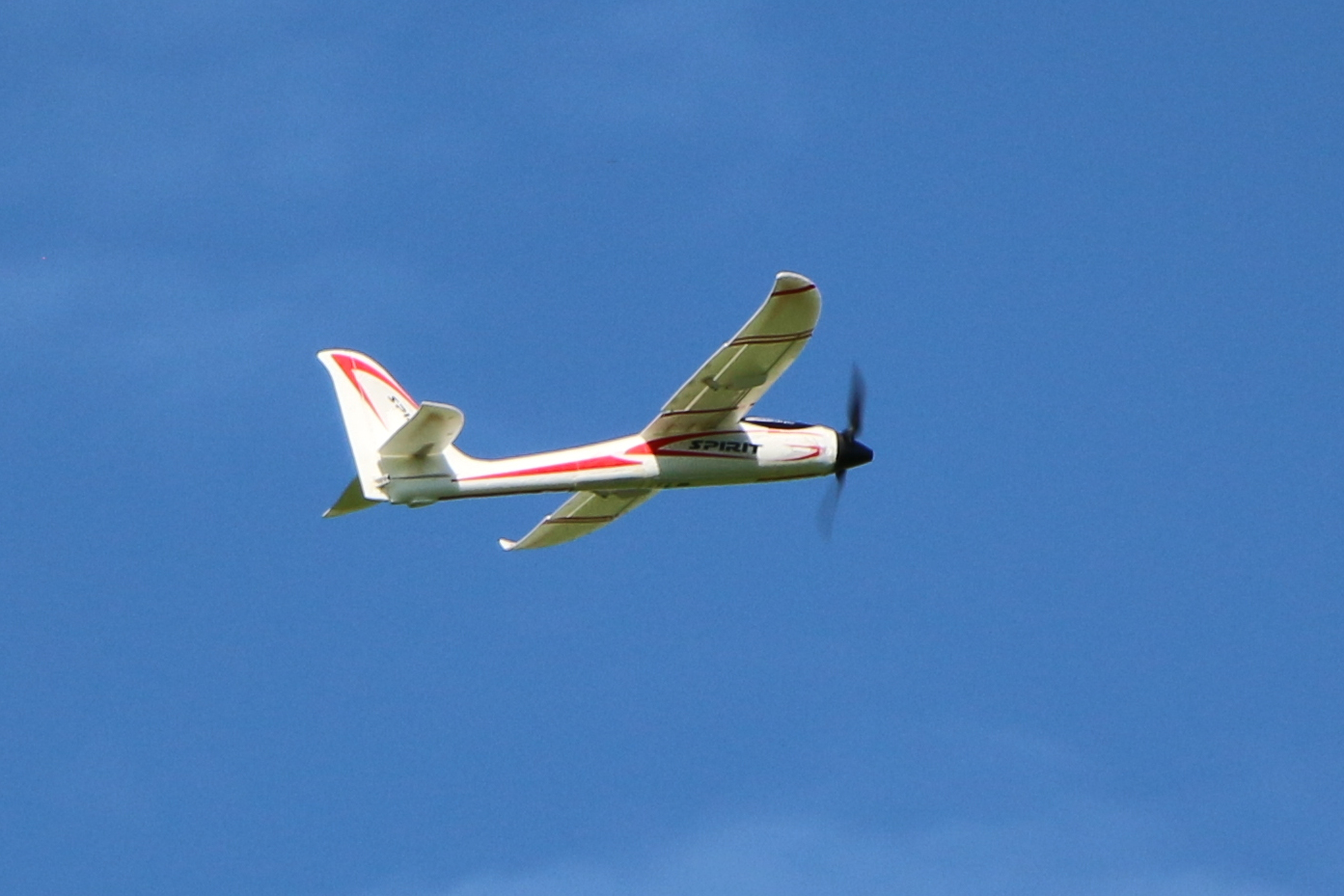
Video time now, this month with footage by myself, MacFly, and Dougal. Please watch the video full screen, it’s so much better with small models flying around:
If the video won’t play for you please click HERE
I was sick on my flight to Munich with Lufthansa last week, I blame the airline food.
It was the wurst…
Colin Cowplain
Patch News – August 2023
The rather strange summer weather continued in August when it could best be described as variable. We lost a few flying days to wet weather but at other times it was perfect.
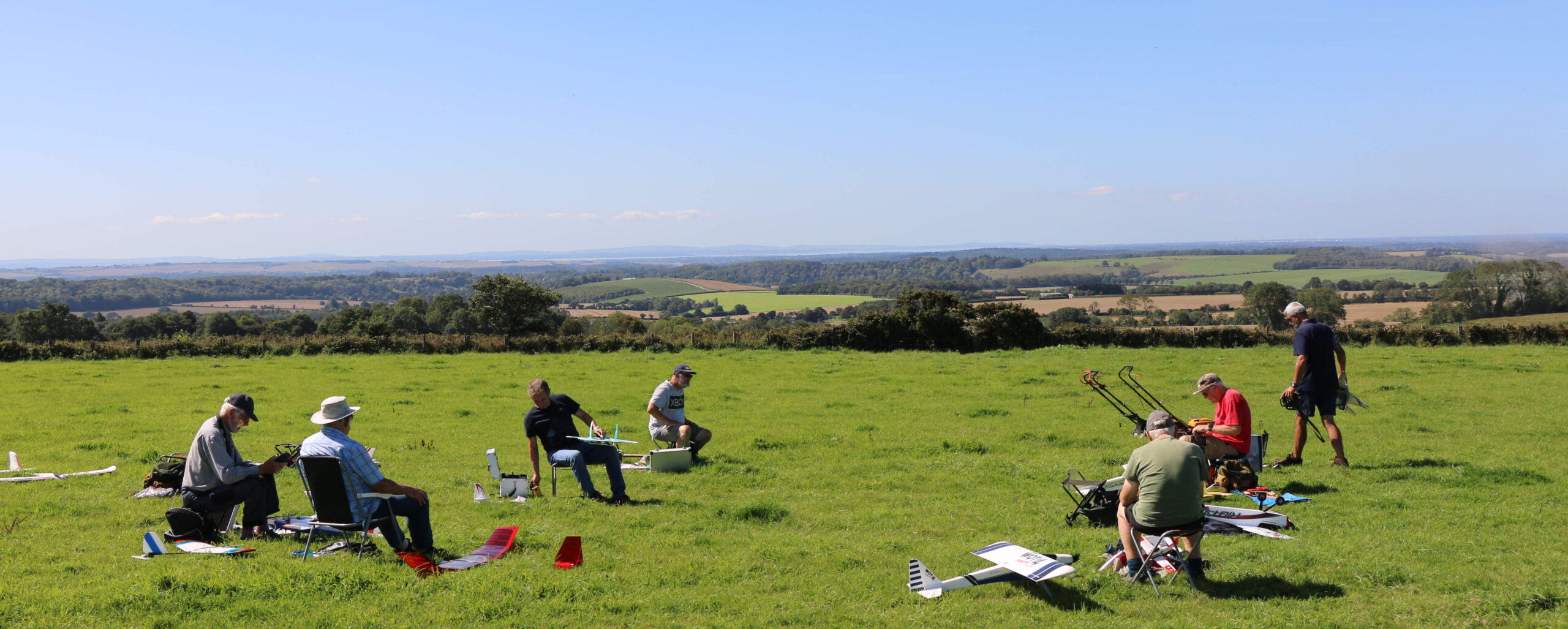 The mixture of rain and sunshine meant the patch grass grew a lot and several mowing sessions were required, we even mowed twice one week There were some bullocks in the field for some of the month but they paid little attention to us and were rarely any bother.
The mixture of rain and sunshine meant the patch grass grew a lot and several mowing sessions were required, we even mowed twice one week There were some bullocks in the field for some of the month but they paid little attention to us and were rarely any bother.
 I rather like this photo of bullocks, Bob the Builder, and Dwayne Pipe. Perhaps we should explain to Dwayne that the mower cuts better when all four wheels are on the ground!
I rather like this photo of bullocks, Bob the Builder, and Dwayne Pipe. Perhaps we should explain to Dwayne that the mower cuts better when all four wheels are on the ground!
The bullocks seem to enjoy standing on the box and the lid was rather battered and was leaking so Chairman Gordon Bennett and 1066 strengthened it with a layer of chequer plate. At the same time Woody and I replaced the electric fence wire which was starting to deteriorate. Gordon and Woody also did some mower running repairs and servicing but later we found that the older mower refused to run at anything above idling speed.
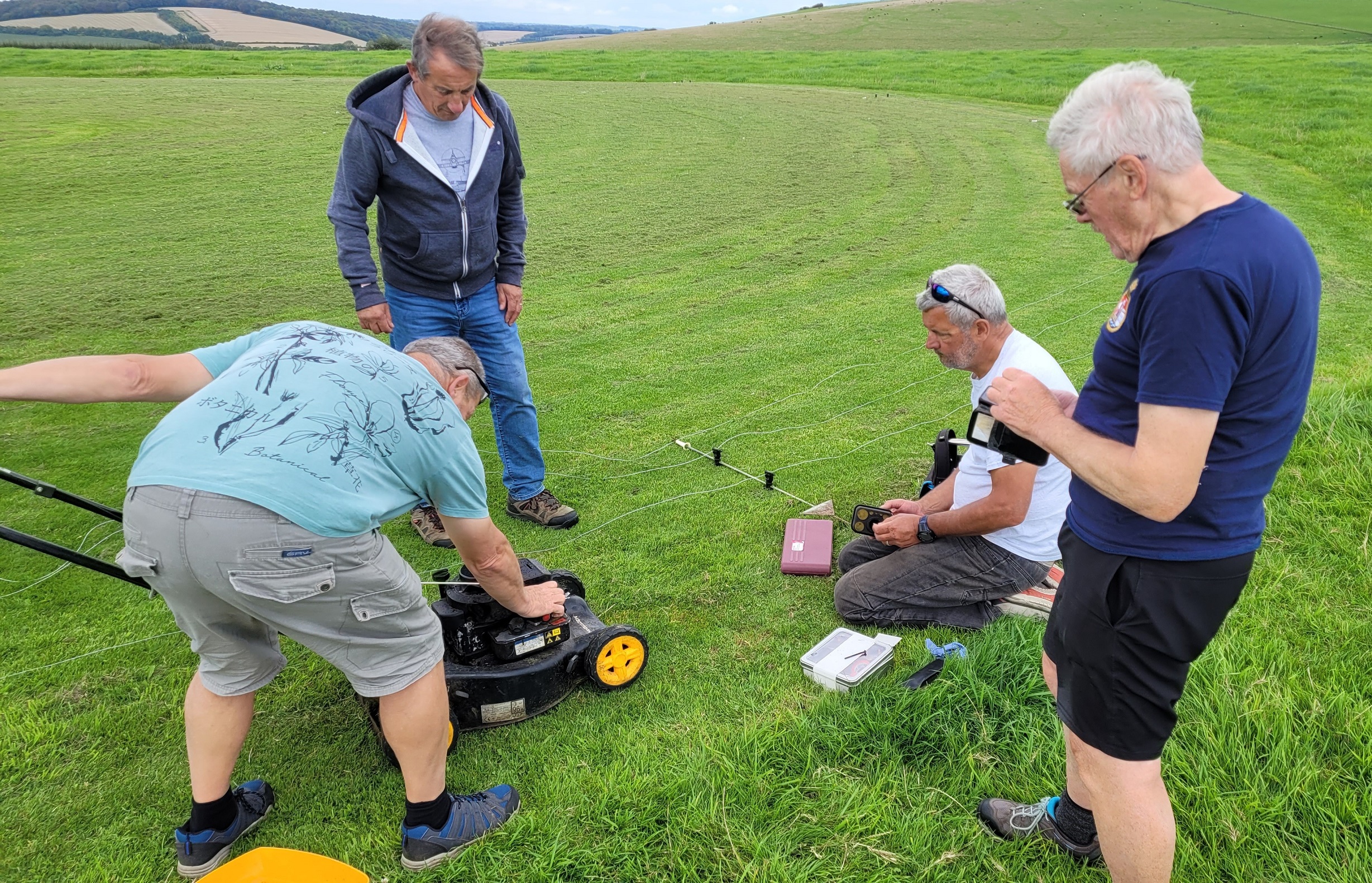 Several of us failed to fix it but Chas volunteered to take a look and he’s now got it sorted.
Several of us failed to fix it but Chas volunteered to take a look and he’s now got it sorted.
Quite a few new models were flown in August, the first being the Wasp E2K belonging to Page Boy who has recently returned to the club. The Wasp is primarily designed as an electric powered pylon racer to compete in the E2K class but it also makes a good sport model, 1066 has been flying one regularly for quite a while now. It’s available in kit form and has a built up fuselage and veneered foam wing of 900mm span. This Wasp is actually Page Boy’s second one, the first one had the wing rip off which terminated the flight suddenly and permanently! But it had already had a good few flights so Page Boy wasn’t too upset and decided he’d enjoyed it enough to put another one together.
 The motor is a 1500kv Tornado Thumper 3536 which swings an 8×6 APC prop. He’s fitted an 80A Hobbywing speed controller and uses 2600mAh 50C 4 cell lipos to power it all. The Wasp only uses three servos, the two aileron ones are Hitec HS65MGs (metal gears) and the elevator servo is a Hitec HS85MG, these are small and light but powerful enough to take the loads achieved in pylon racing. Page Boy used HobbyKing covering film and the completed model weighs in at 2.4lbs. So how does it go? Very quickly! To me it looked a bit faster than 1066’s but maybe that’s just because I’ve got used to 1066’s having seen it fly lots of times. So what we need now is for both of them to be flown together so we can compare. Come on chaps, get it together and have a proper race, you know you want to!
The motor is a 1500kv Tornado Thumper 3536 which swings an 8×6 APC prop. He’s fitted an 80A Hobbywing speed controller and uses 2600mAh 50C 4 cell lipos to power it all. The Wasp only uses three servos, the two aileron ones are Hitec HS65MGs (metal gears) and the elevator servo is a Hitec HS85MG, these are small and light but powerful enough to take the loads achieved in pylon racing. Page Boy used HobbyKing covering film and the completed model weighs in at 2.4lbs. So how does it go? Very quickly! To me it looked a bit faster than 1066’s but maybe that’s just because I’ve got used to 1066’s having seen it fly lots of times. So what we need now is for both of them to be flown together so we can compare. Come on chaps, get it together and have a proper race, you know you want to!
Next up is another foamboard special from Dwayne Pipe who has written all about it:
F35 foam board- what could possibly go wrong? One of the joys of model aircraft modelling for me is making a new model. I know you can go and buy a ready to fly model and get it to work first time (If you are lucky) but making a new model from scratch and flying it beats the out of the box item every time. Having demolished my Sea Vixen, I fancied a different challenge. A model no one else had in the club.
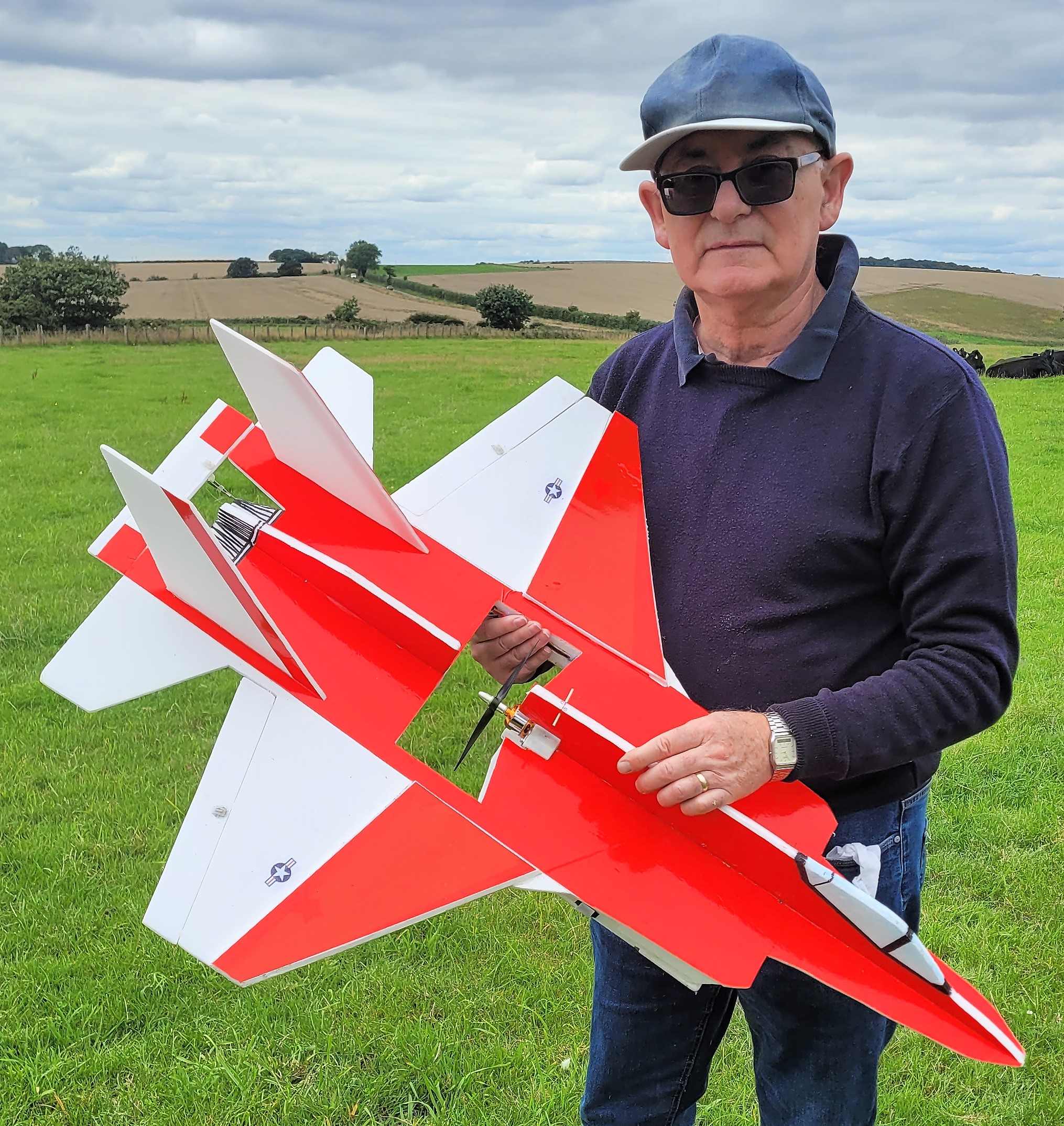 I chose the F35 multipurpose fighter because I had seen a pair doing a low pass over the Lake District while on holiday last year and they looked great in the air. The design was a variation on the foam board fighters we have been flying for some time, but I thought I would make it in Correx as it was stronger than the foam board we normally use and because I had a couple of sheets spare. I drew out the plans, cut the board and glued it together with hot melt. (Hot melt sticks really well to Correx). It was covered in Fablon (remember that stuff from the 1960s). With it ready to fly Andy launched it into space.
I chose the F35 multipurpose fighter because I had seen a pair doing a low pass over the Lake District while on holiday last year and they looked great in the air. The design was a variation on the foam board fighters we have been flying for some time, but I thought I would make it in Correx as it was stronger than the foam board we normally use and because I had a couple of sheets spare. I drew out the plans, cut the board and glued it together with hot melt. (Hot melt sticks really well to Correx). It was covered in Fablon (remember that stuff from the 1960s). With it ready to fly Andy launched it into space. 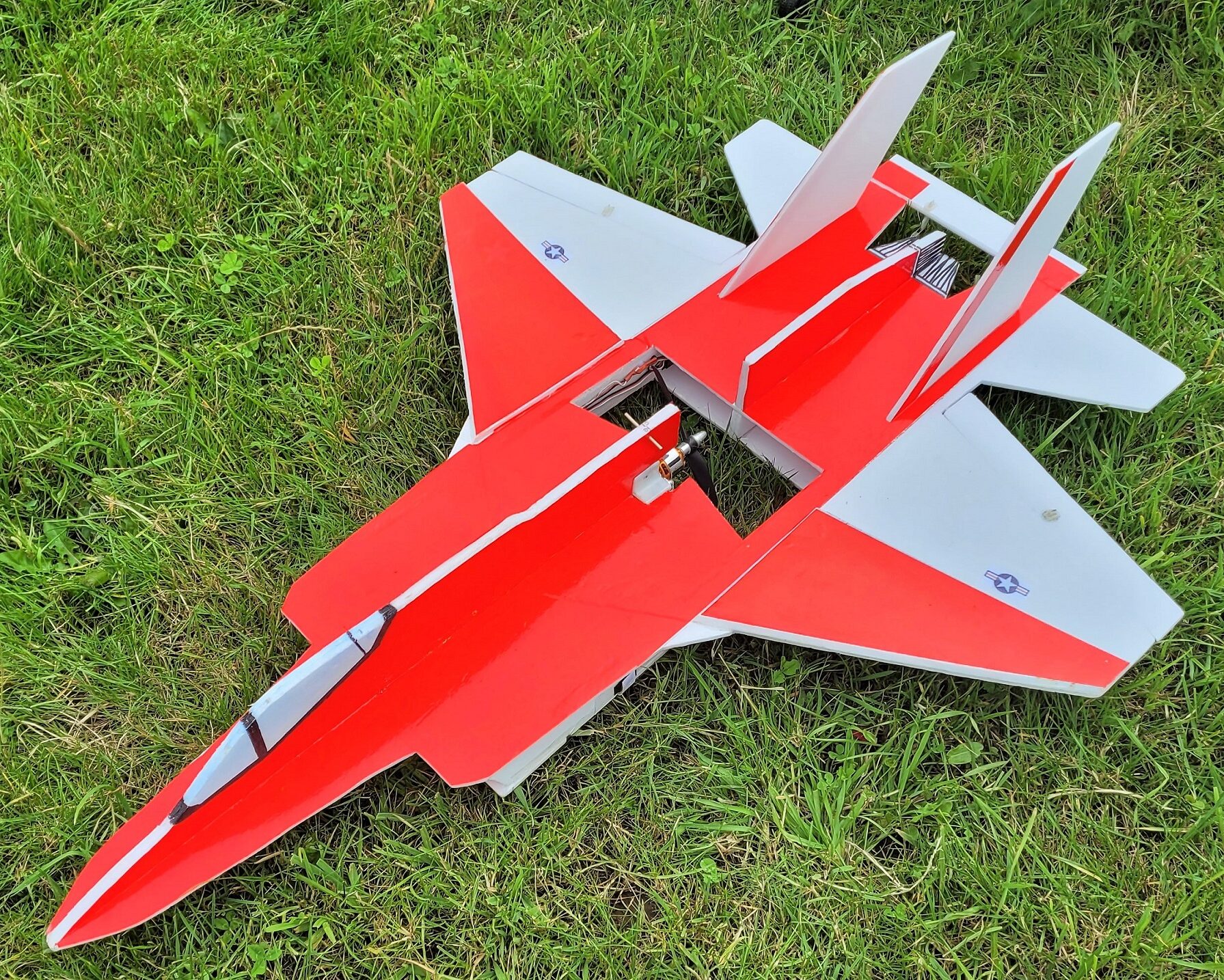 The result was disastrous. The plane was overweight, underpowered, the C of G was miles too far back and the servo on the elevator refused to work while flying but was great on the ground. A few more attempts tinkering around with the motor, propeller, and C of G, all I succeeded in doing was destroying the airframe.
The result was disastrous. The plane was overweight, underpowered, the C of G was miles too far back and the servo on the elevator refused to work while flying but was great on the ground. A few more attempts tinkering around with the motor, propeller, and C of G, all I succeeded in doing was destroying the airframe.
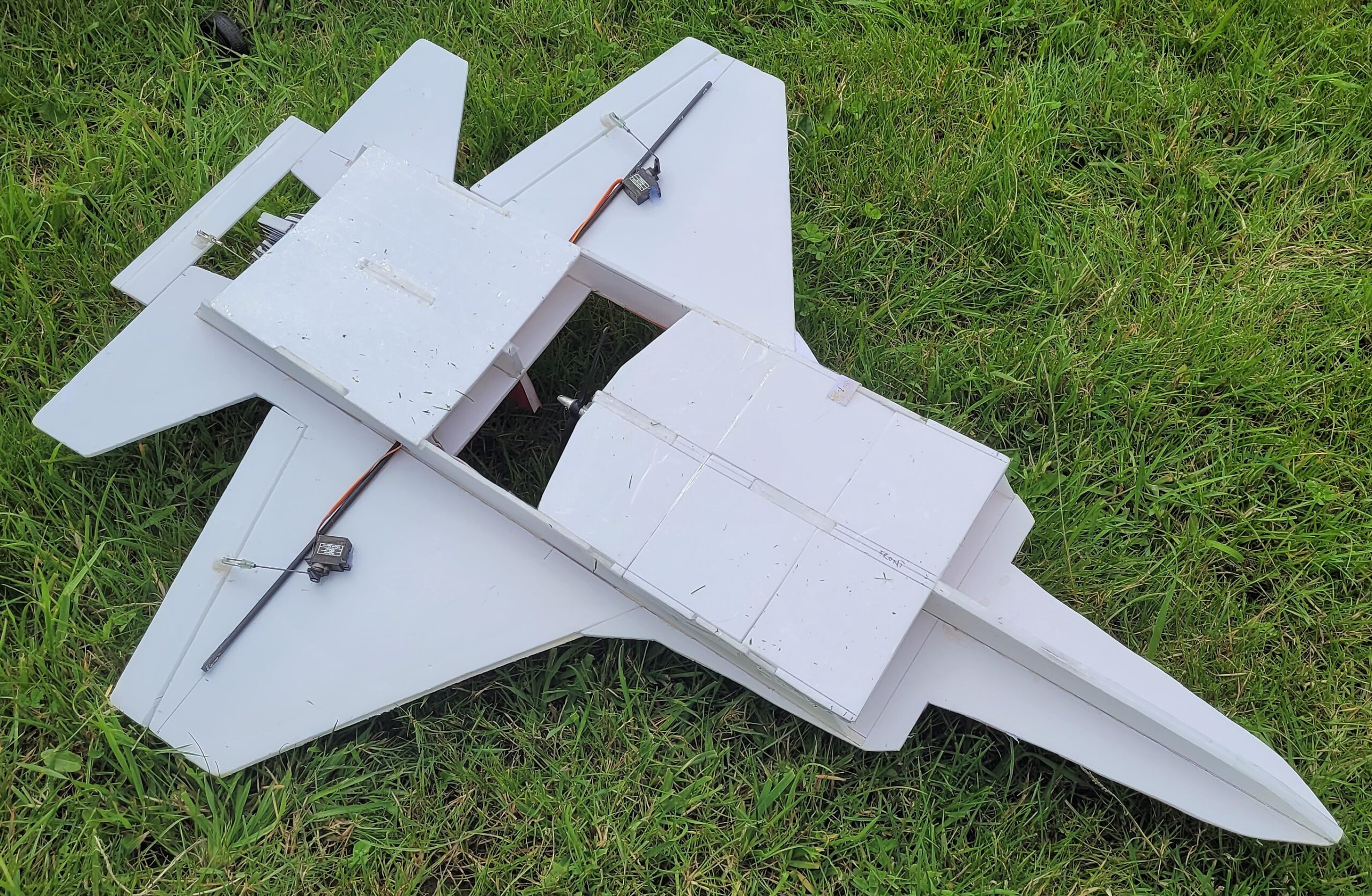 As they say “back to the drawing board”. I had already made the plans so this time I went back to good old Hobbycraft foam board. The model was kitted out the same, although I bought three new servos this time. Andy launched it again and surprise, surprise, the model was way too tail heavy. The old saying is “if you keep on doing what you’re doing you will keep on getting what you’re getting”.
As they say “back to the drawing board”. I had already made the plans so this time I went back to good old Hobbycraft foam board. The model was kitted out the same, although I bought three new servos this time. Andy launched it again and surprise, surprise, the model was way too tail heavy. The old saying is “if you keep on doing what you’re doing you will keep on getting what you’re getting”.
I use an online computer program “Aircraft centre of gravity calculator” from RC Planes online. Over the years it has worked really well with all my home-built models. The foam board models don’t have an airfoil and as the wings are flat the angle of attack provides the lift. The program uses the wing and tail area to calculate the C of G. The F35 is a unique shape as the wing and tail virtually morph together and there is a large amount of lift generated by the front of the plane forward of the wing, which is unusual. 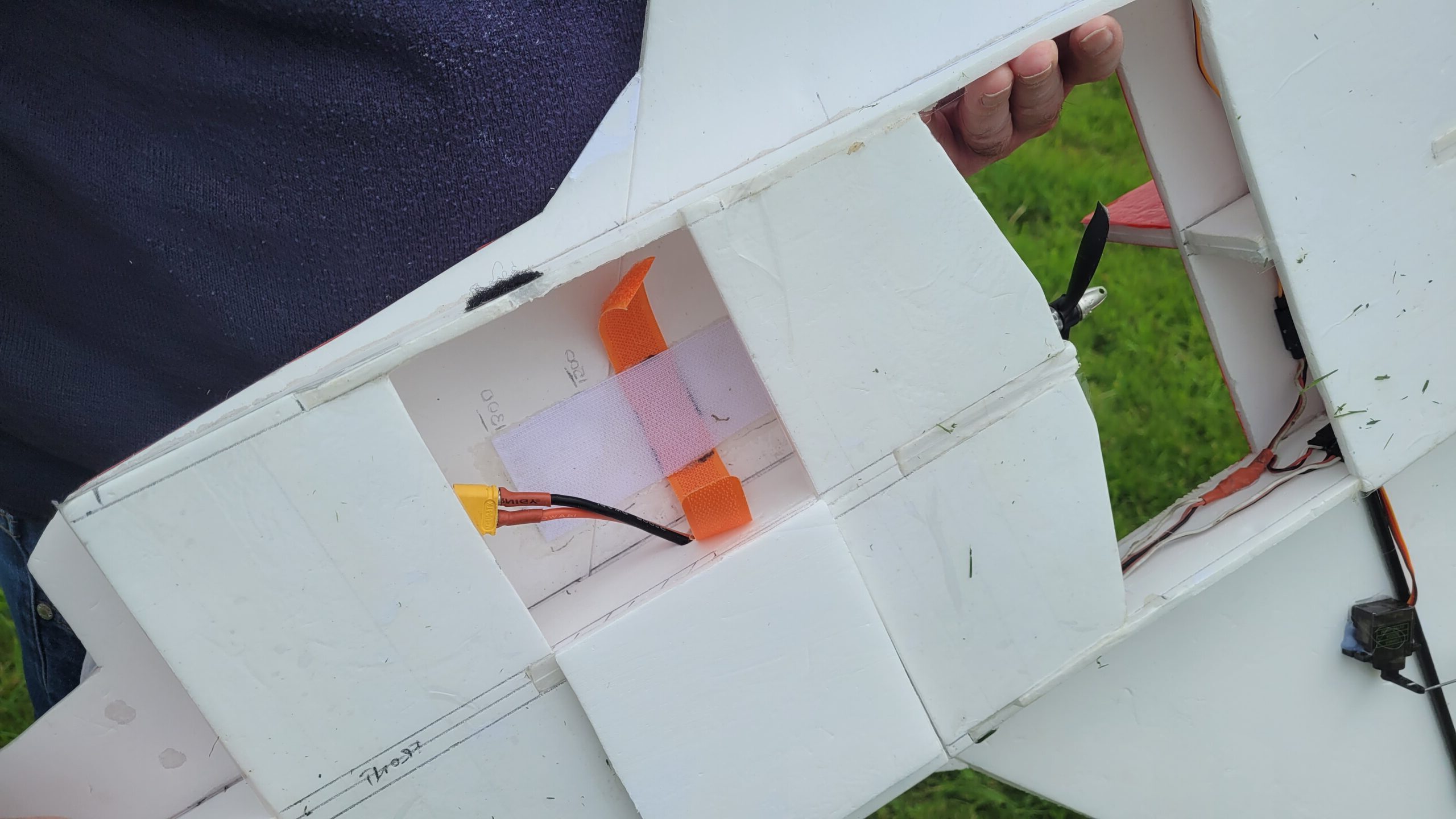 Adding the area in front of the wing into the program shifted the C of G forward over 2 inches. I moved the battery position to achieve this. This time she flew beautifully, the only problem now is the pilot. The hassle is part of the process but there is a real buzz when it works out at last. For those who like the technical stuff, the model has a wingspan of 30 inches, a 2200 Kv motor pulling a 6×4 prop and a 25 A Esc. The Correx version had a flying weight of 800 grams, the foam board a flying weight of 550 grams. Thanks for the excellent report Dwayne. It looks great in the air as you can see in this month’s video.
Adding the area in front of the wing into the program shifted the C of G forward over 2 inches. I moved the battery position to achieve this. This time she flew beautifully, the only problem now is the pilot. The hassle is part of the process but there is a real buzz when it works out at last. For those who like the technical stuff, the model has a wingspan of 30 inches, a 2200 Kv motor pulling a 6×4 prop and a 25 A Esc. The Correx version had a flying weight of 800 grams, the foam board a flying weight of 550 grams. Thanks for the excellent report Dwayne. It looks great in the air as you can see in this month’s video.
I finally got around to putting together one of the four foamboard models that I’ve bought and then ignored for months. I bought it back in January when I was browsing the AliExpess website and spotted it for just £11.12 plus £2.23 VAT, too cheap to ignore!
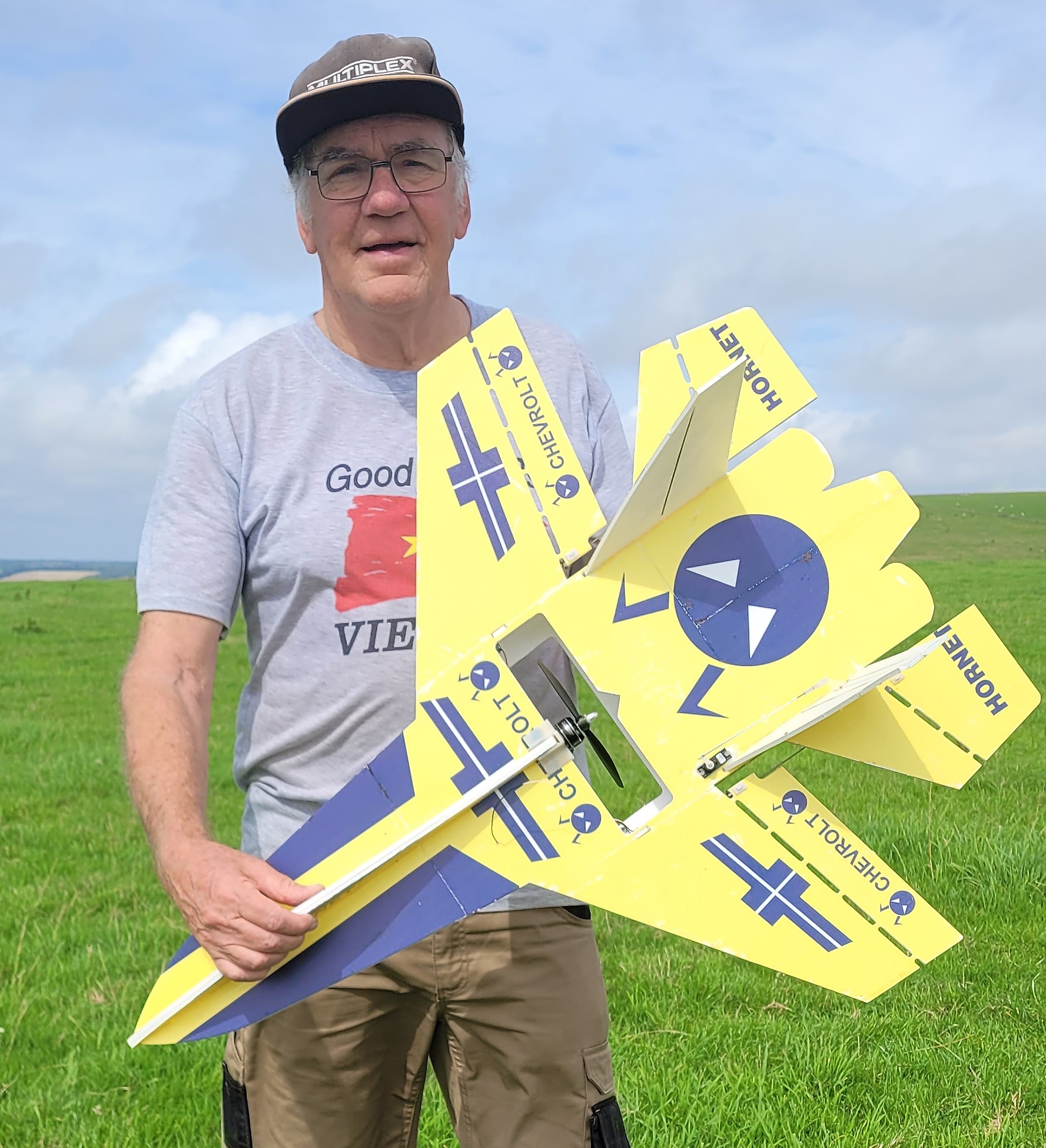 How bad could it be for that price? The kit only contains the foam parts, no carbon stiffening rods, no control linkages, and no instructions. I was rather surprised when it turned up in jiffy bag with no protection at all but all the parts had survived the trip from China without being damaged. It’s available in several colour schemes and is sold as an SU-27 but the yellow and black one that I chose says Hornet on it, presumably named after the insect rather than the F-18 Hornet as it also has what I guess are Hornet head outlines.
How bad could it be for that price? The kit only contains the foam parts, no carbon stiffening rods, no control linkages, and no instructions. I was rather surprised when it turned up in jiffy bag with no protection at all but all the parts had survived the trip from China without being damaged. It’s available in several colour schemes and is sold as an SU-27 but the yellow and black one that I chose says Hornet on it, presumably named after the insect rather than the F-18 Hornet as it also has what I guess are Hornet head outlines.
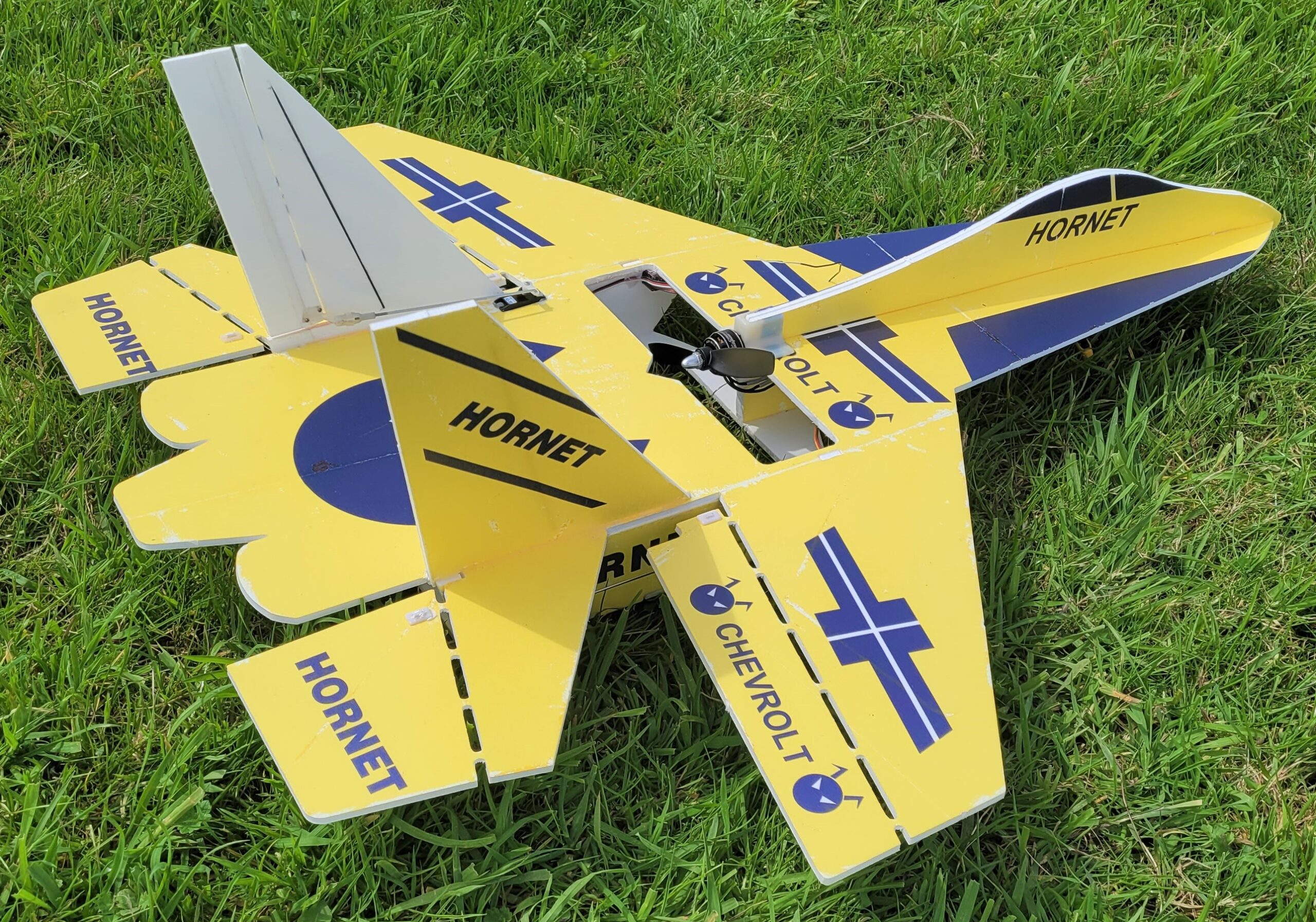 It also says Chevrolt (not Chevrolet) so it’s all rather confusing. The outline shape probably matches an SU-27 slightly more closely than an F-18 but I decided that mine was going to be an F-18 so I angled both fins out slightly. It went together easily using both hot-melt glue and cyano and I used some carbon rods for spars that I’d salvaged from the wreck of my SU-27 and I also added some carbon strips to the fins after I had glued them in place as they seemed a bit floppy. I added a rudder as all the foamboards seem to need one for high alpha manoeuvres. I fitted a 2306-2200kv motor and a very cheap 30A speed controller which lasted three flights before it burnt out and was replaced by a better one.
It also says Chevrolt (not Chevrolet) so it’s all rather confusing. The outline shape probably matches an SU-27 slightly more closely than an F-18 but I decided that mine was going to be an F-18 so I angled both fins out slightly. It went together easily using both hot-melt glue and cyano and I used some carbon rods for spars that I’d salvaged from the wreck of my SU-27 and I also added some carbon strips to the fins after I had glued them in place as they seemed a bit floppy. I added a rudder as all the foamboards seem to need one for high alpha manoeuvres. I fitted a 2306-2200kv motor and a very cheap 30A speed controller which lasted three flights before it burnt out and was replaced by a better one.
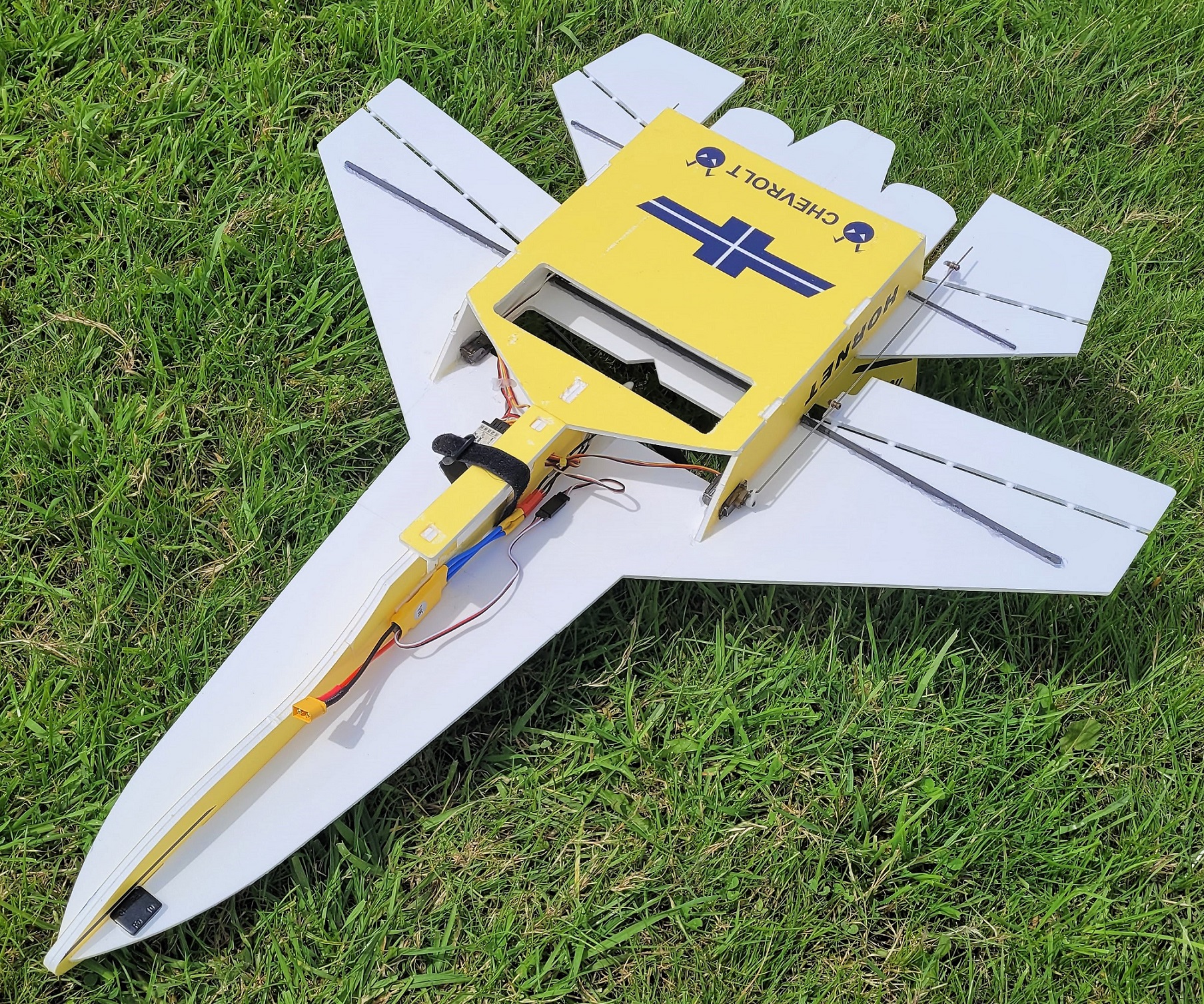 I wasn’t sure where the centre of gravity should be so I made a guesstimate and added a little nose-weight. For the first flight I fitted a three cell 1400mAh lipo and it flew perfectly, barely needing any trim at all and it handled very nicely. I have since opened up the slot where the battery fits so I can also use 2200mAh packs and I’ve also removed the nose-weight and glued it to the tail instead. It is still available on the AliExpress website but at the time of writing the price has risen to £23.86 with free postage but it will add 20% VAT to the total making it £28.63. I’m very happy with the Hornet, it really is much nicer to fly than my Yak-130. You can see some of the first flight in the video.
I wasn’t sure where the centre of gravity should be so I made a guesstimate and added a little nose-weight. For the first flight I fitted a three cell 1400mAh lipo and it flew perfectly, barely needing any trim at all and it handled very nicely. I have since opened up the slot where the battery fits so I can also use 2200mAh packs and I’ve also removed the nose-weight and glued it to the tail instead. It is still available on the AliExpress website but at the time of writing the price has risen to £23.86 with free postage but it will add 20% VAT to the total making it £28.63. I’m very happy with the Hornet, it really is much nicer to fly than my Yak-130. You can see some of the first flight in the video.
Peter F has been a member for a while now and his flying has come on in leaps and bounds since passing his ‘A’ cert back in December. He’s definitely earned himself a Patch News pseudonym so from now on Peter is MacFly, the Mac being taken from his middle name.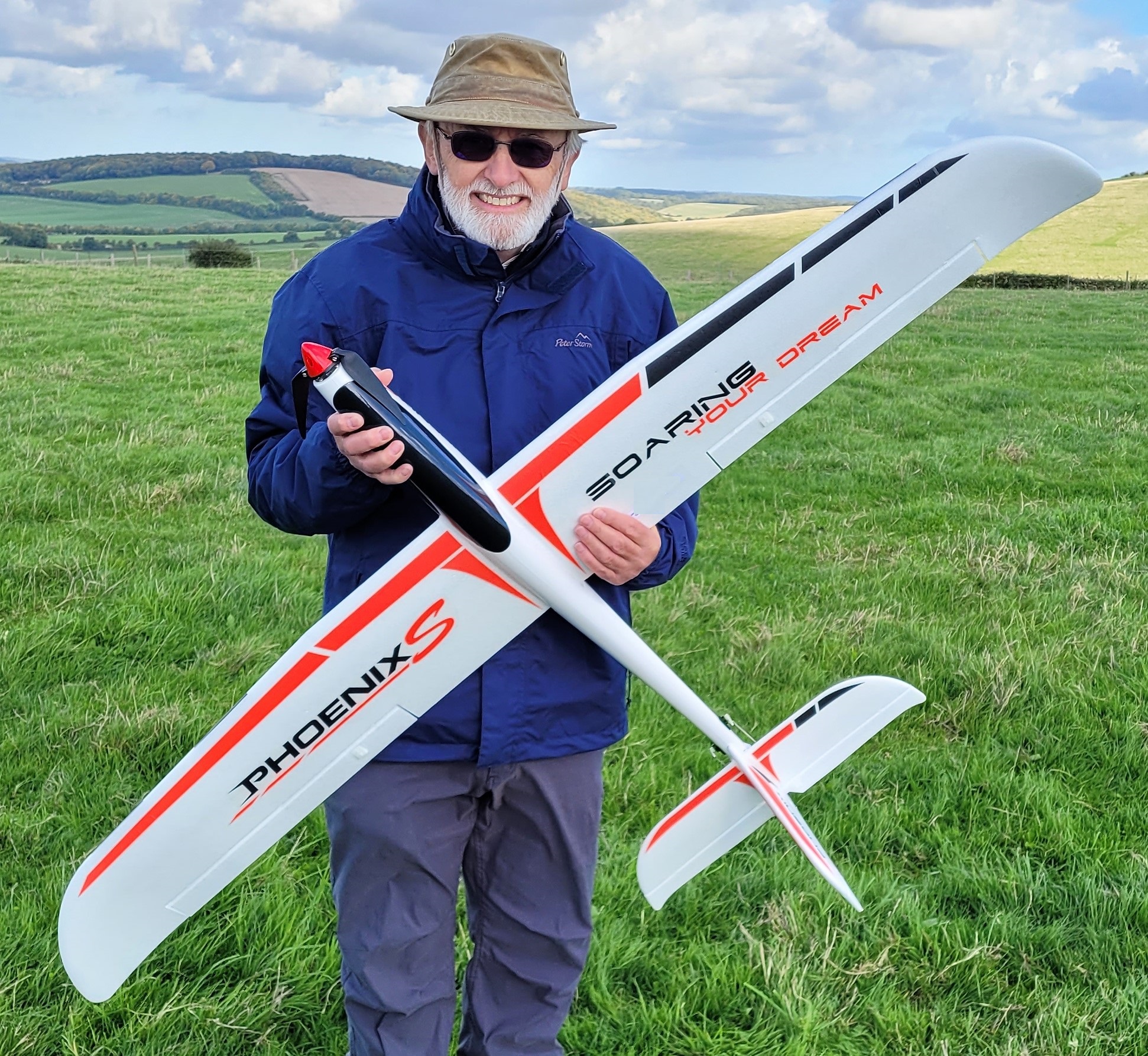
I spotted this little grasshopper trying to hitch a ride on my Yak-130 one nice August day:
On the subject of my Yak-130, that nasty Bennett bloke attacked it with his Mig-29 but came off worse and we later found part of Gordon’s leading edge on the edge of the patch. 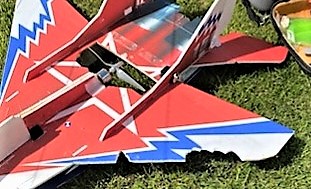
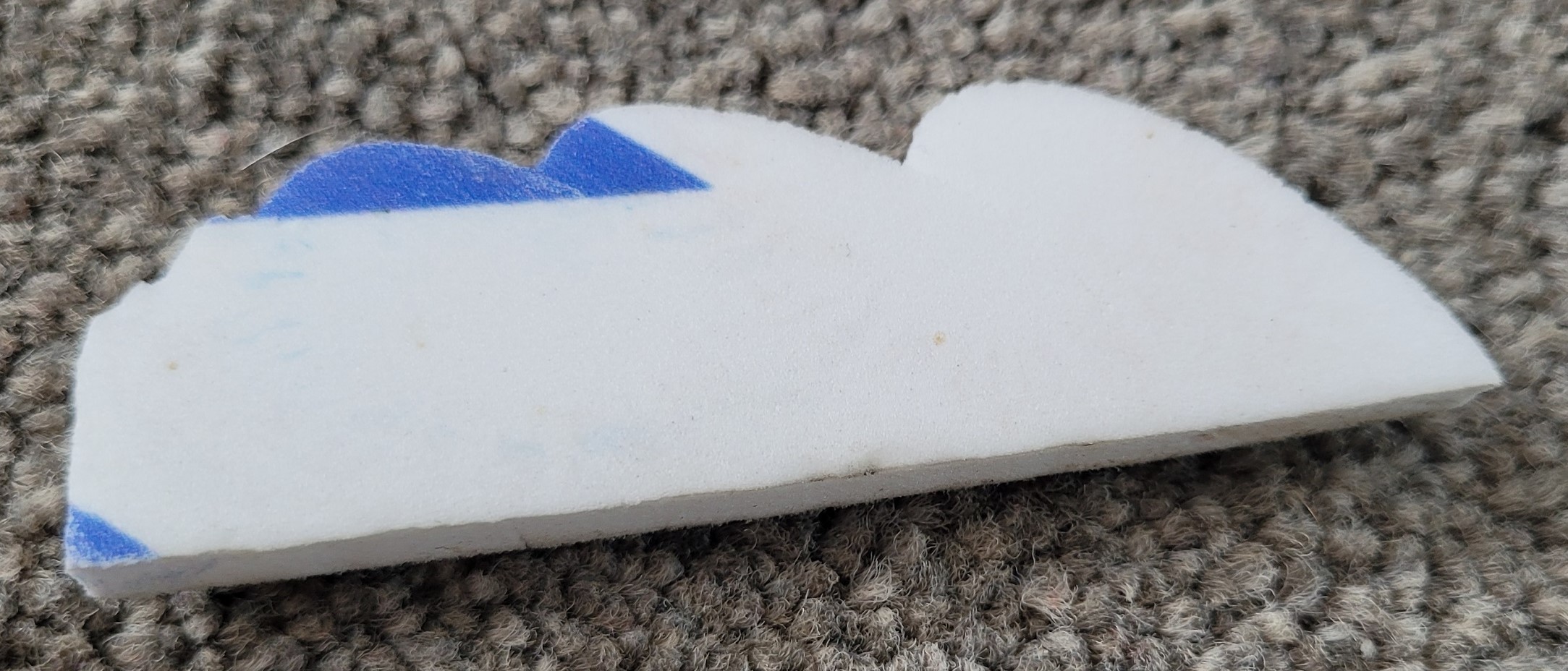 Later in the month Woody’s Raptor decided to have a go at my Yak and chewed a bit off the fuselage without getting any damage to his Raptor. I’ll remember that one Woody!
Later in the month Woody’s Raptor decided to have a go at my Yak and chewed a bit off the fuselage without getting any damage to his Raptor. I’ll remember that one Woody!
Bob the Builder has been at it again, building I mean. He calls his new model Bob’s Twin Bitsa, so called because 95% of it is from bits he already had in his workshop. The Bitsa uses the 1200mm span wings from his late lamented Sonic Modell Binary twin (the same model that Dougal uses for FPV) complete with the two 1100kv motors spinning contra-rotating 8×6 propellers. The wings are fitted with ailerons and also two position flaps.
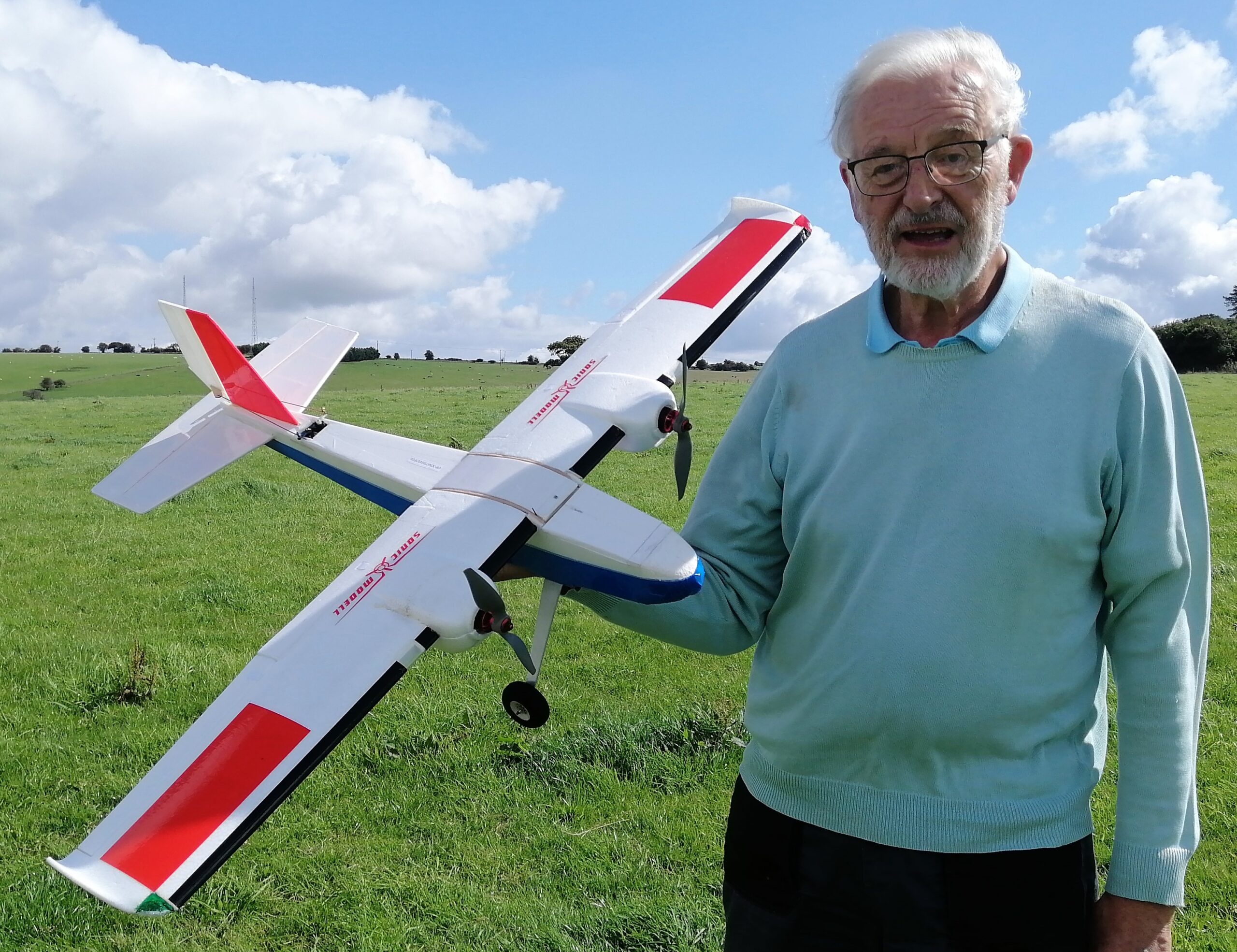 The fuselage is Bob’s own design and is made from foamboard and plywood and he’s covered it with packing tape. It houses two 30A speed controllers, one for each motor, which he has arranged to give differential thrust via the rudder stick. The tailplane is made of balsa and the fin is foam, they look very much like Splot parts to me so maybe they are also salvaged parts. The receiver is an FR Sky S8R that has a built-in gyro and Bob can adjust the gyro gain from his transmitter. The Bitsa can fly on either 3 or 4 cell 2200mAh lipo packs and on 3 cells the motors produce 400W and that rises to 700W on 4 cells. With an all up weight of just 38oz and a wing loading of 17oz per sq. ft. that’s plenty of power.
The fuselage is Bob’s own design and is made from foamboard and plywood and he’s covered it with packing tape. It houses two 30A speed controllers, one for each motor, which he has arranged to give differential thrust via the rudder stick. The tailplane is made of balsa and the fin is foam, they look very much like Splot parts to me so maybe they are also salvaged parts. The receiver is an FR Sky S8R that has a built-in gyro and Bob can adjust the gyro gain from his transmitter. The Bitsa can fly on either 3 or 4 cell 2200mAh lipo packs and on 3 cells the motors produce 400W and that rises to 700W on 4 cells. With an all up weight of just 38oz and a wing loading of 17oz per sq. ft. that’s plenty of power.
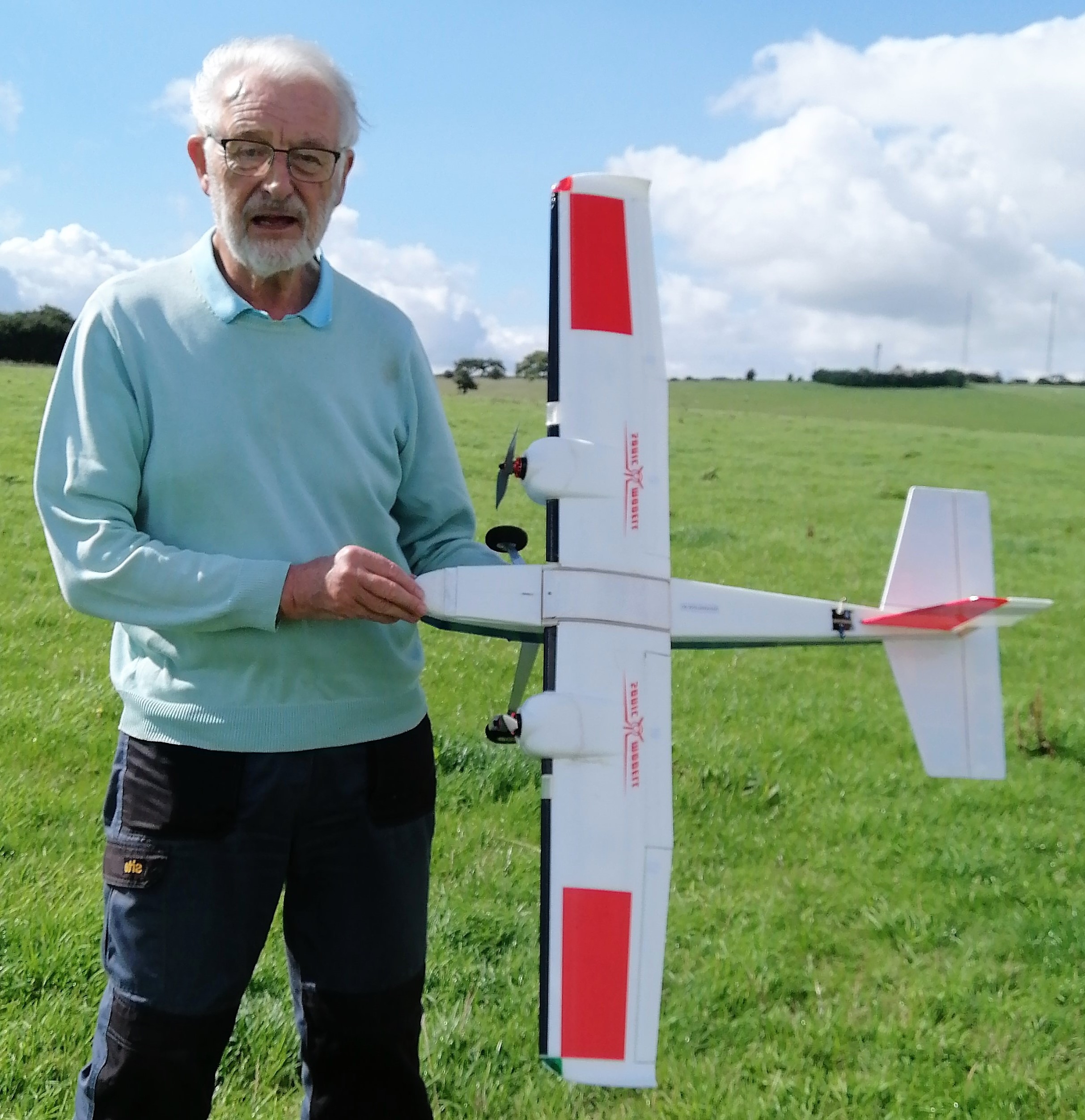 Dougal did the test flight and trimmed the Bitsa on a day with strong winds and reports that it will climb vertically on 3 cells and after five minute flights it still landed with 75% left in the battery. Bob is very pleased with the Bitsa and is now experimenting with the settings on the gyro, differential thrust, and flaps. Well done Bob, please don’t break it! The Bitsa can be seen being test flown on it’s first flight by Dougal in this months’ video.
Dougal did the test flight and trimmed the Bitsa on a day with strong winds and reports that it will climb vertically on 3 cells and after five minute flights it still landed with 75% left in the battery. Bob is very pleased with the Bitsa and is now experimenting with the settings on the gyro, differential thrust, and flaps. Well done Bob, please don’t break it! The Bitsa can be seen being test flown on it’s first flight by Dougal in this months’ video.
We were pleased to welcome Simon Patrick as a prospective new member in August.
Simon is already an RC flier has several models but hadn’t flown for several years.
 On his second visit to our patch Simon flew a Precision Aerobatic Katana MD.
On his second visit to our patch Simon flew a Precision Aerobatic Katana MD.
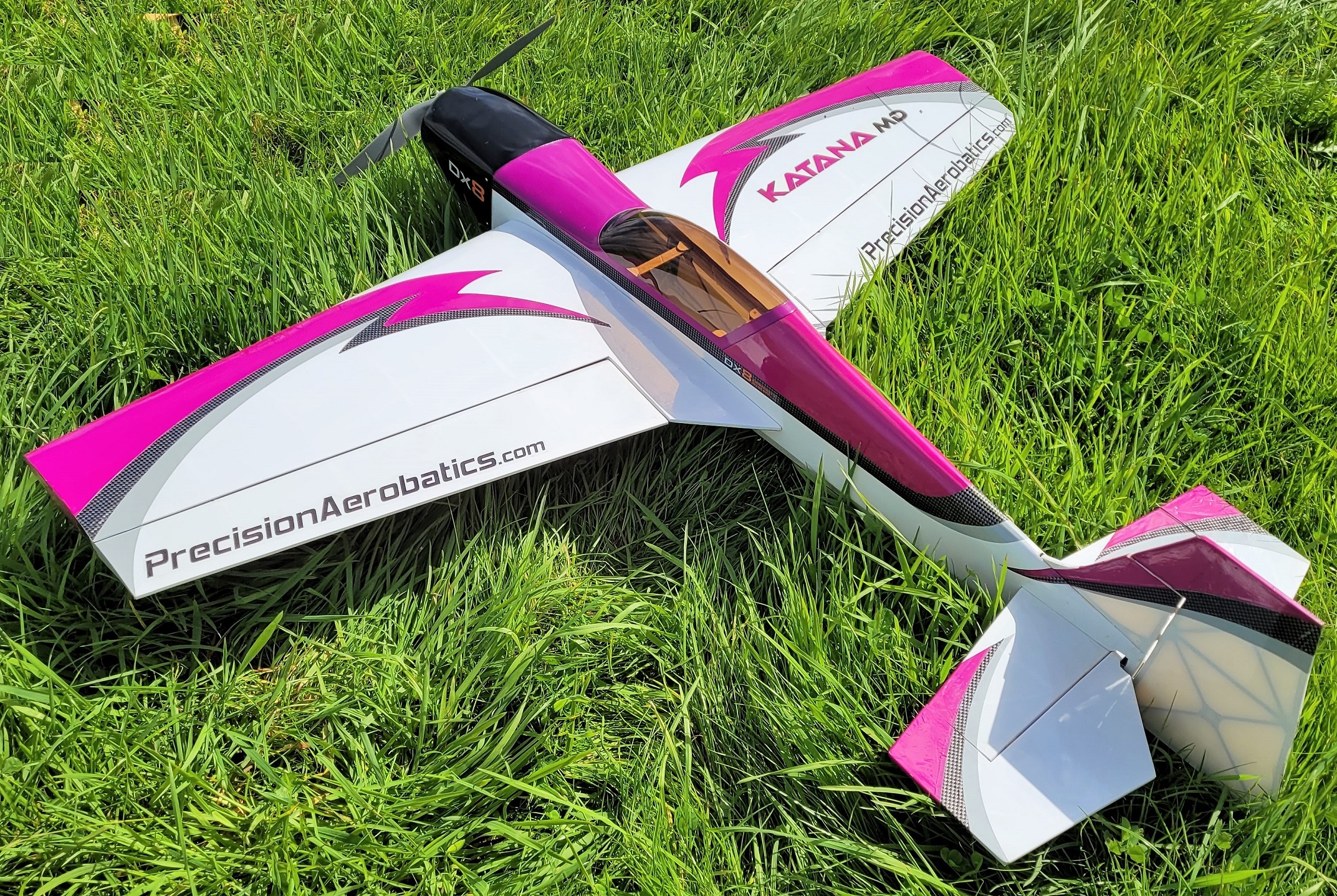 Despite having not flown for a long time Simon was fine and soon back in the swing of it.
Despite having not flown for a long time Simon was fine and soon back in the swing of it.
Kryten made it to the field several times in August and as well as enjoying flying his E-Flite Apprentice and Max-Thrust Riot he managed to snap some excellent action shots for us:
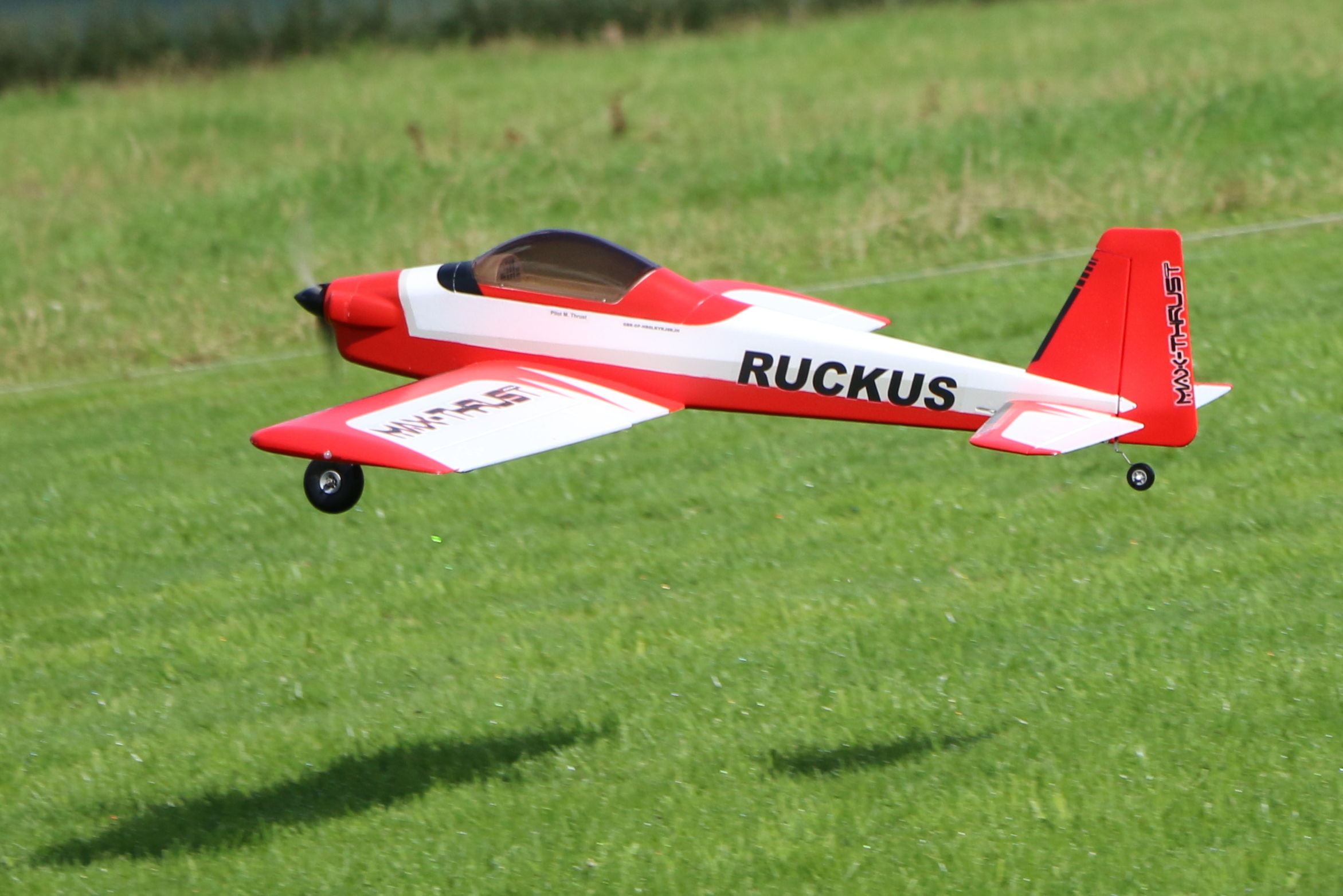
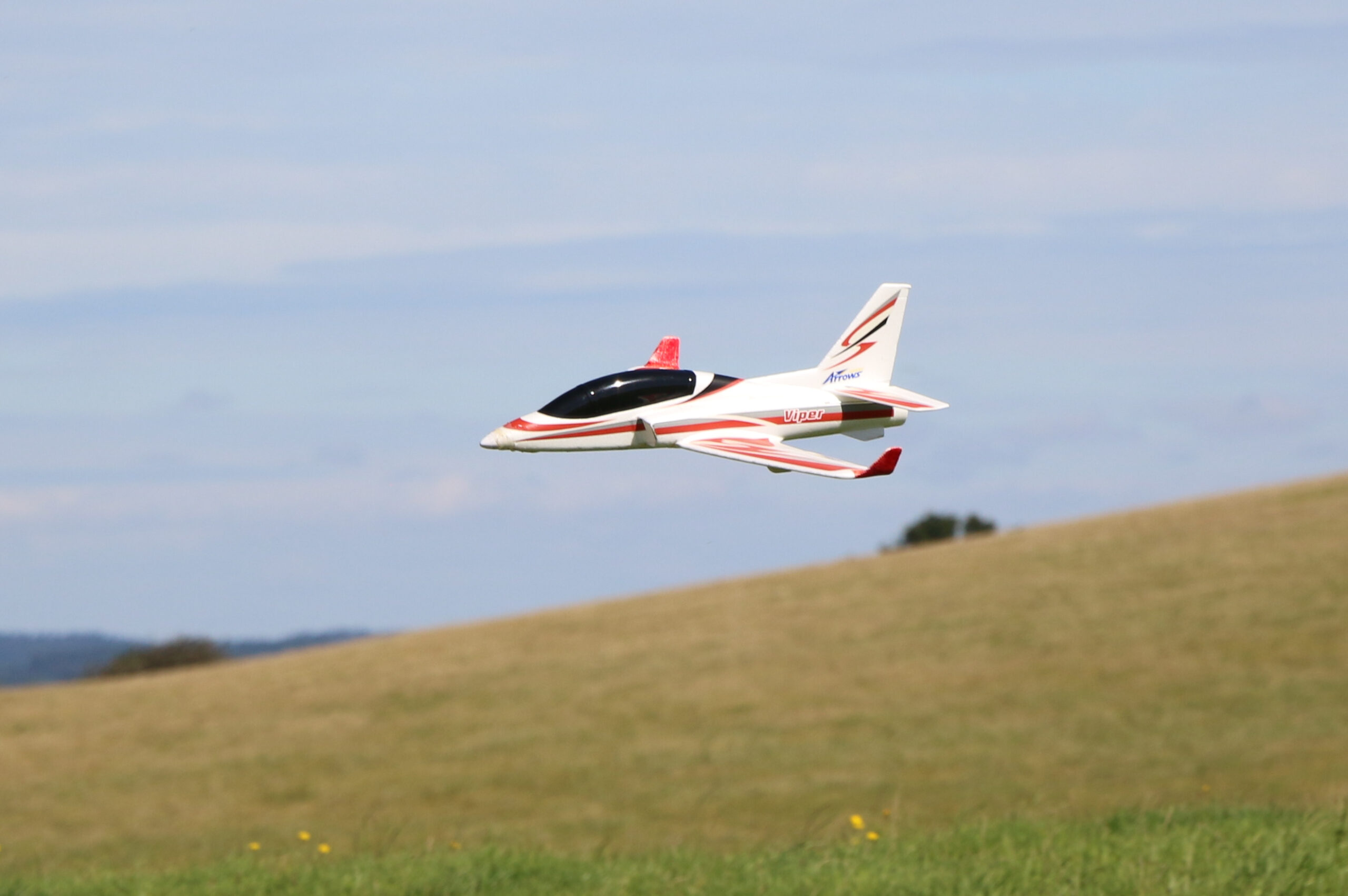
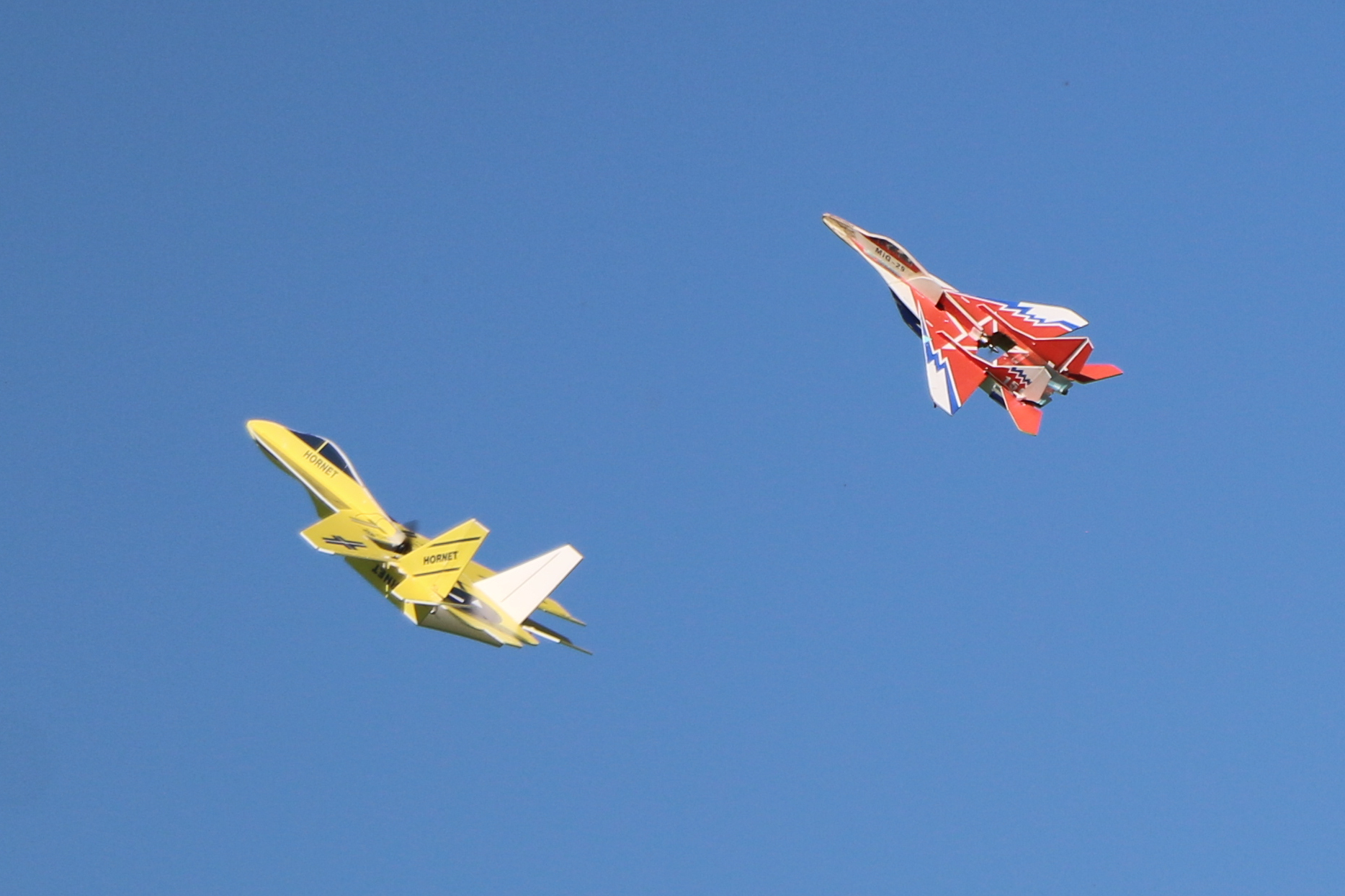
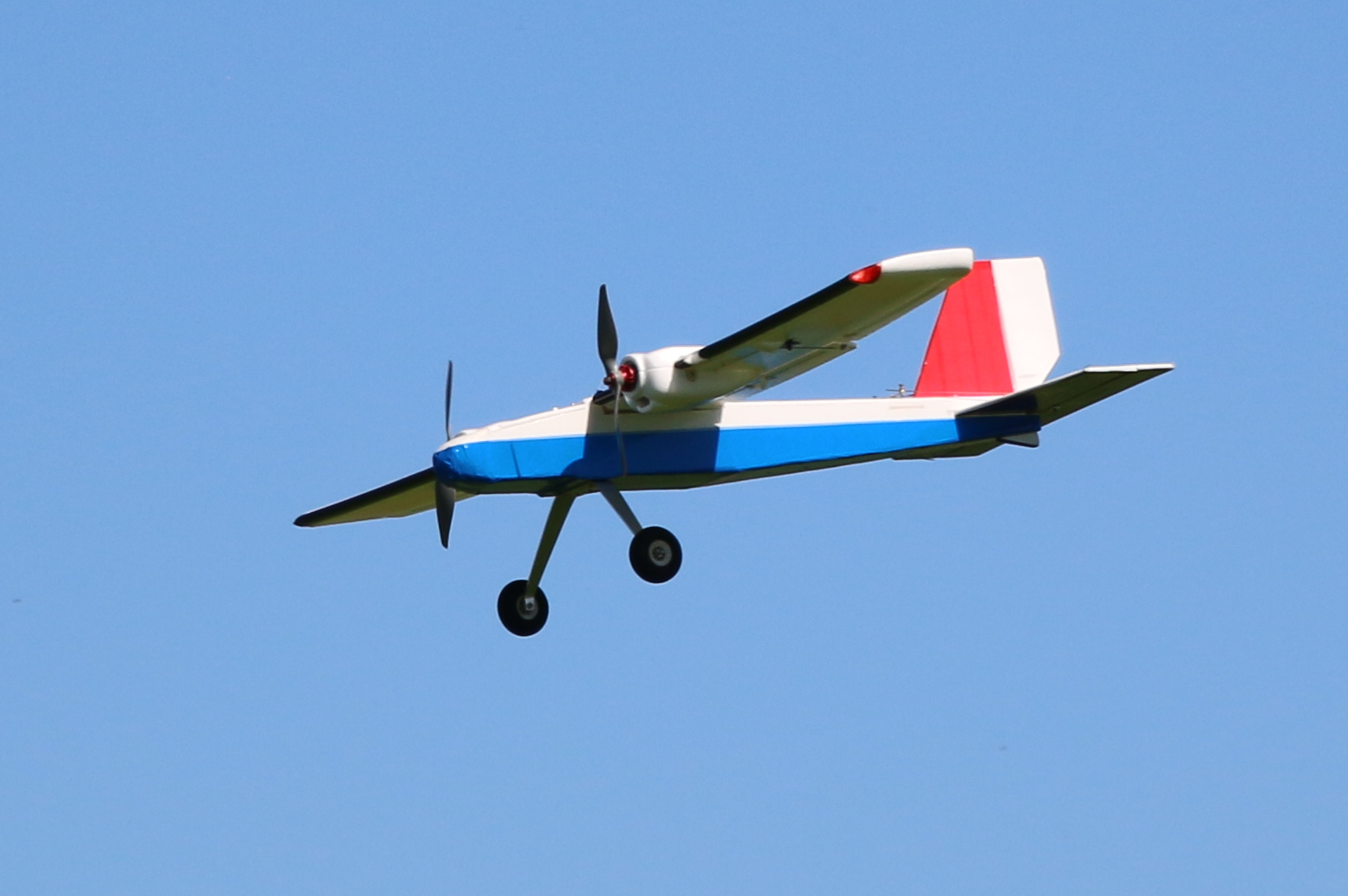
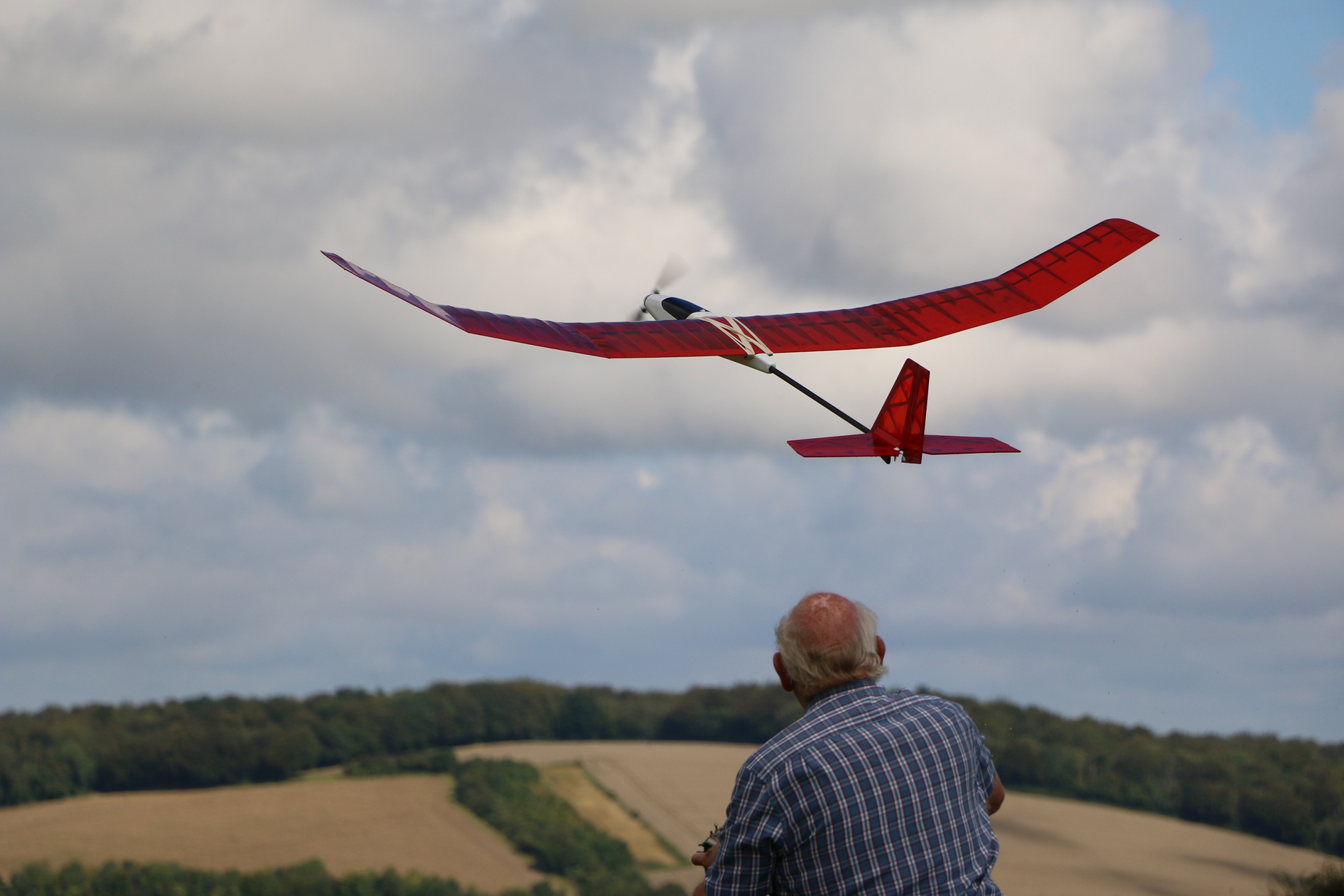
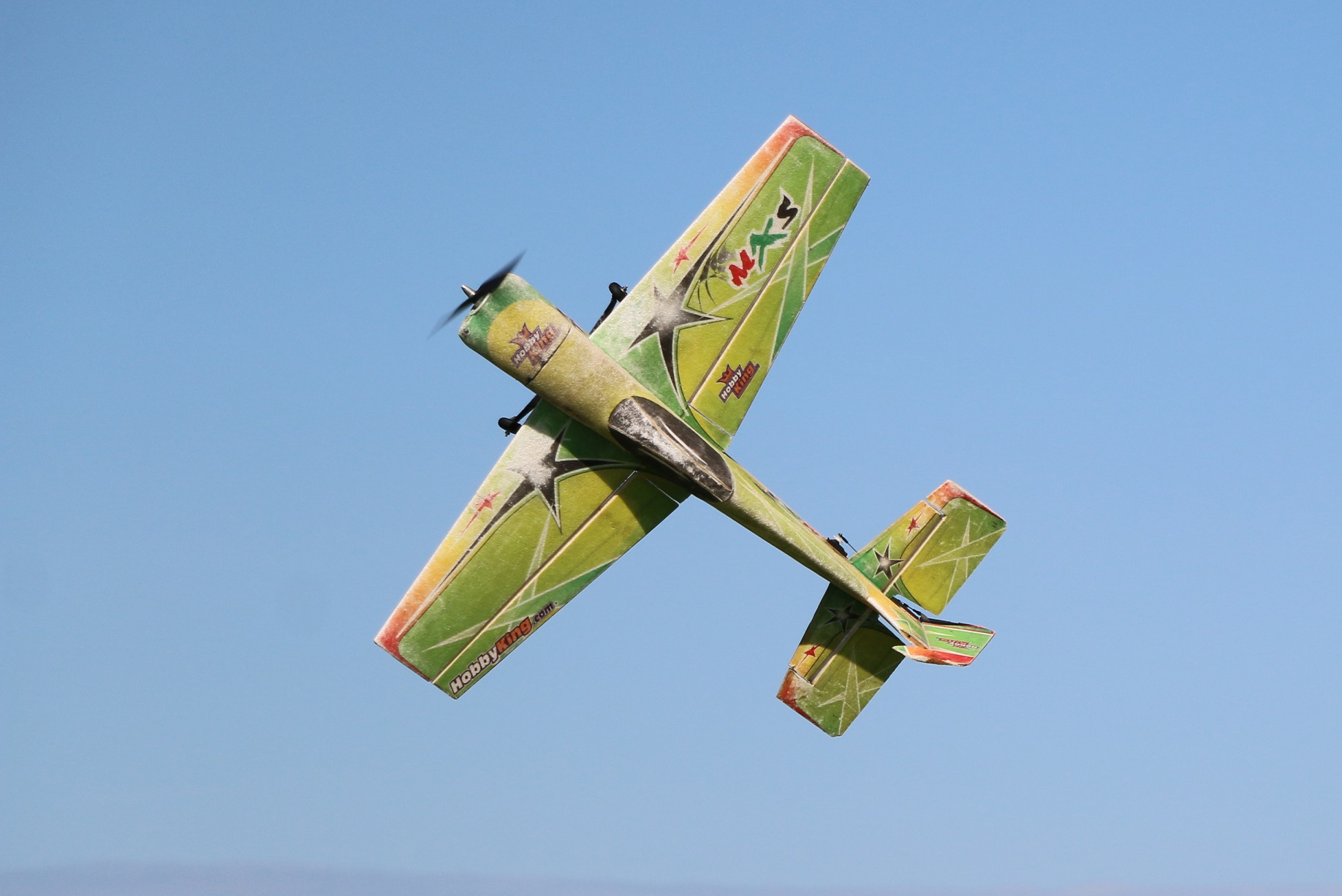
It’s video time now, this month with some footage shot by myself and Dougal Entendre but mostly by MacFly. He must have a very steady hand as he takes great video with his phone. Please watch the video full-screen, it’s so much better with small models flying around:If the video won’t play for you please click HERE
This is supposedly a true story:
On a flight from Alaska to Tokyo, the flight engineer went back into the passenger cabin.
An elderly woman passenger stopped him and asked him what the temperature was.
‘It’s 70 degrees, madam,’ he replied, adding, ‘But outside it’s 30 degrees below zero.’
‘Young man,’ the woman demanded, ‘What were you doing outside?’
Colin Cowplain
Patch News – July 2023
Following on from the hottest June since records began July turned out to be one of the wettest Julys on record. There were a few reasonable days but for most of the month if it wasn’t raining there was a strong wind or both. Chairman Gordon Bennett sourced a nice new mower for us to replace the old green one which has since been condemned. Dougal Entendre gave 1066 some helpful instructions “That’s called a handle, hold it just there.” 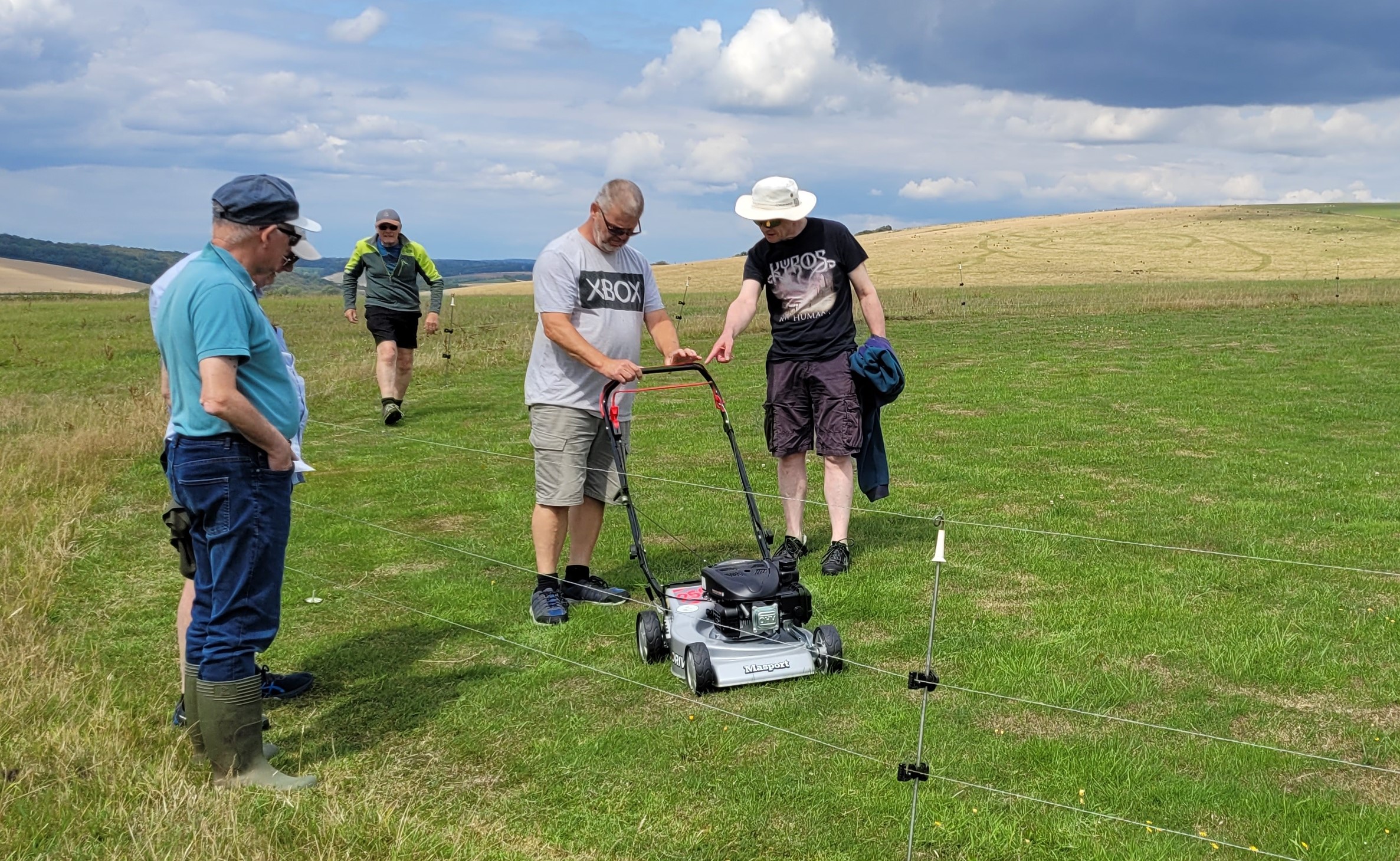 We’ve kept the old yellow one as it serves as a useful second machine to speed things up.
We’ve kept the old yellow one as it serves as a useful second machine to speed things up. 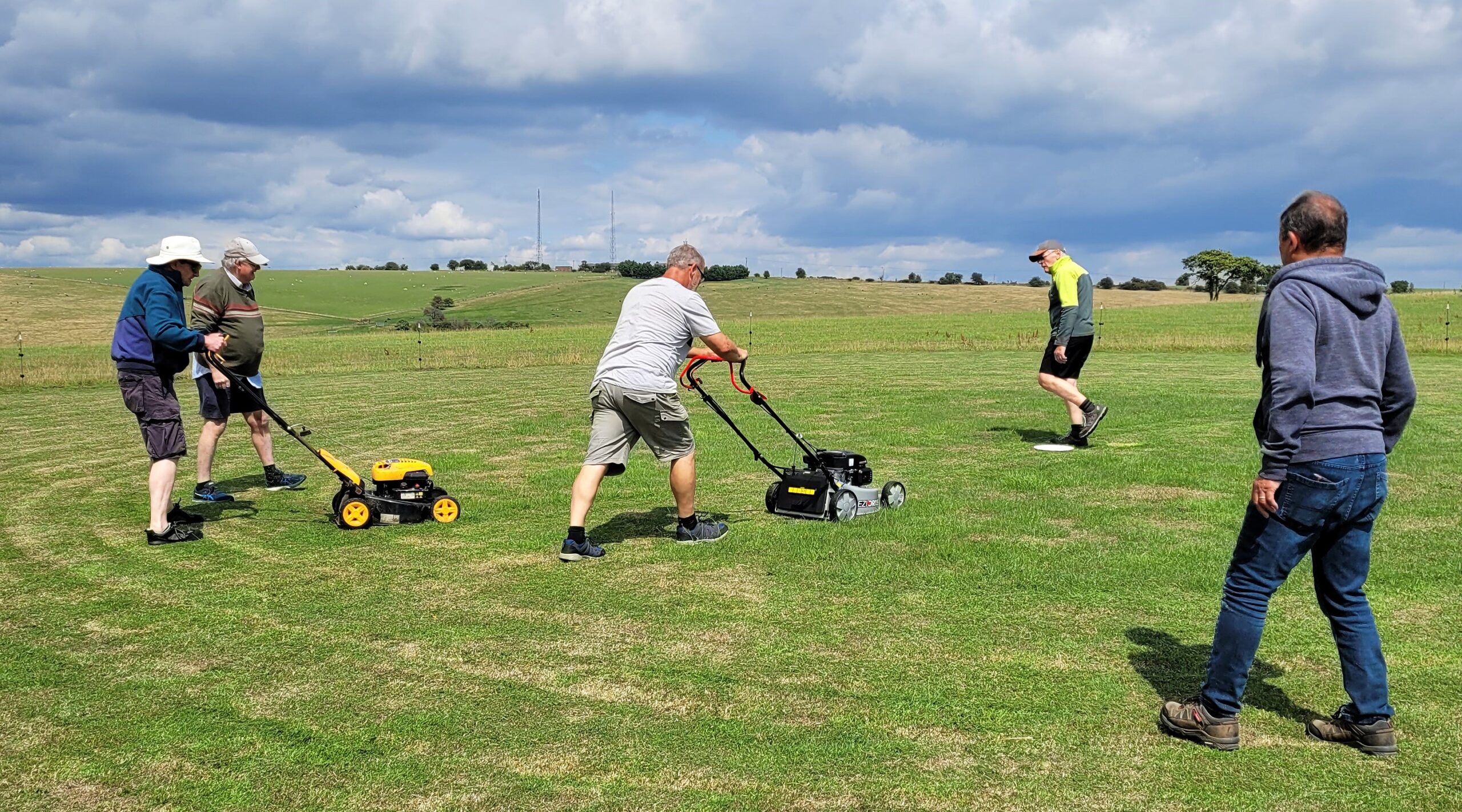 As expected the bullocks returned to the field once all the rain had made the grass grow long enough for them to feed. The usual herd appeared briefly early in the month but a couple of weeks later some more arrived. This herd was a different breed to the usual ones and we were pleasantly surprised that they didn’t appear to be nearly as inquisitive as the others. The young ones are normally quite a problem for a few weeks until they get used to us but these barely bothered us at all and were gone again after just a few days anyway.
As expected the bullocks returned to the field once all the rain had made the grass grow long enough for them to feed. The usual herd appeared briefly early in the month but a couple of weeks later some more arrived. This herd was a different breed to the usual ones and we were pleasantly surprised that they didn’t appear to be nearly as inquisitive as the others. The young ones are normally quite a problem for a few weeks until they get used to us but these barely bothered us at all and were gone again after just a few days anyway.
After a rather smashing June Peter F has treated himself to a Max-Thrust Ruckus to replace his Max-Thrust Riot. He chose the Ruckus partly because many of the parts are interchangeable with the Riot so he already has a stock of spares should the need arise.
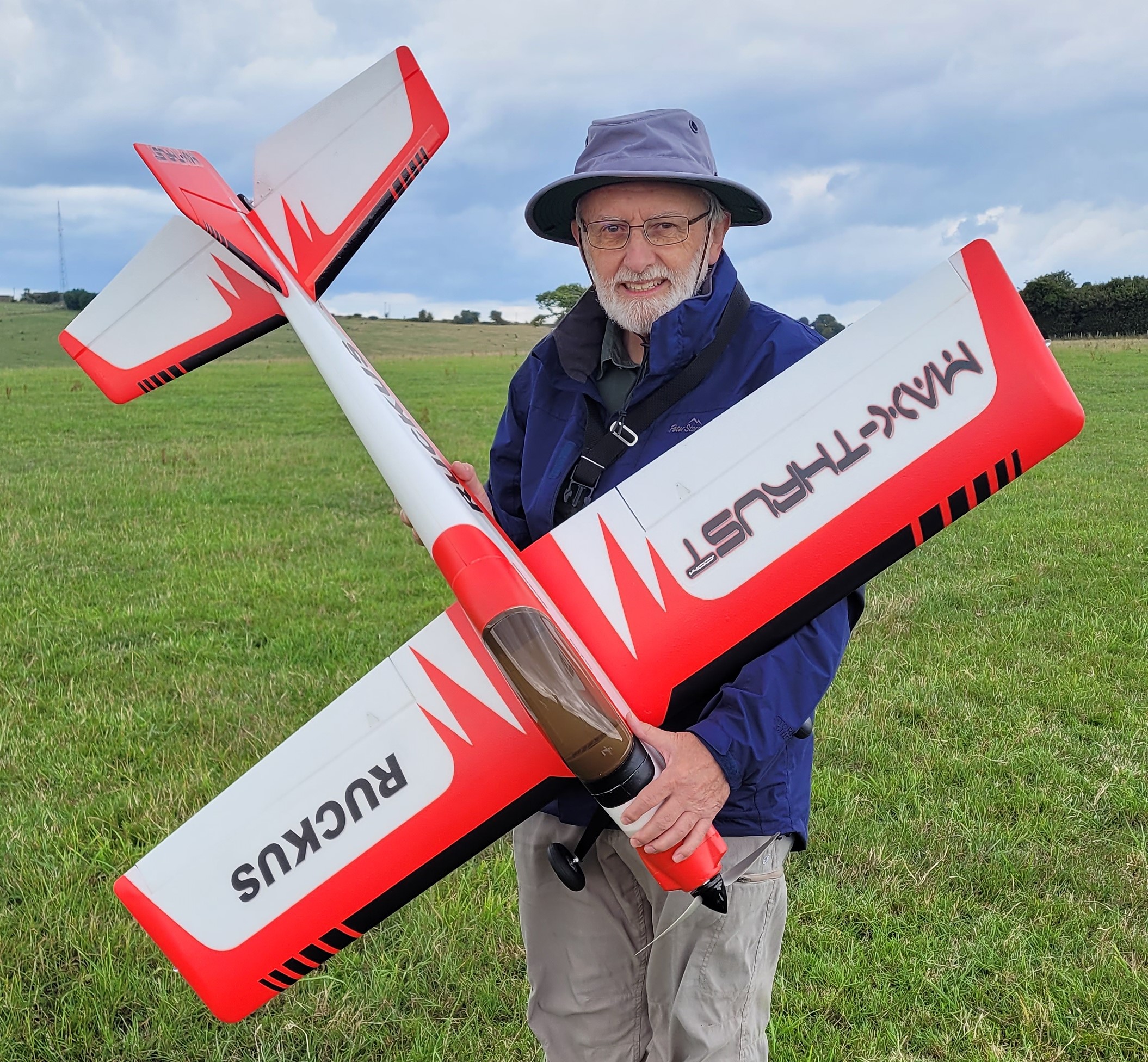 The Ruckus has a wingspan of 1380mm, comes with two 9g and two 17g servos, and weighs around 1500g without the battery. This is what Max-Thrust say about it: After the success of the Riot, we have been constantly asked for a follow-up model that builds on all the best attributes of the Riot but in a low-wing model. We think we’ve nailed it! Not only does the Ruckus fly superbly it looks gorgeous too. Capable of flying on either a 3 or 4-cell Li-Po the Ruckus can be set up to be a tame first low-wing plane or turn the control throws up and fly every aerobatic move you can think of, it will even prop hang! With a wingspan of 1380mm the Ruckus is happy flying in all conditions and will handle the wind with ease and will quickly become your model for all occasions.
The Ruckus has a wingspan of 1380mm, comes with two 9g and two 17g servos, and weighs around 1500g without the battery. This is what Max-Thrust say about it: After the success of the Riot, we have been constantly asked for a follow-up model that builds on all the best attributes of the Riot but in a low-wing model. We think we’ve nailed it! Not only does the Ruckus fly superbly it looks gorgeous too. Capable of flying on either a 3 or 4-cell Li-Po the Ruckus can be set up to be a tame first low-wing plane or turn the control throws up and fly every aerobatic move you can think of, it will even prop hang! With a wingspan of 1380mm the Ruckus is happy flying in all conditions and will handle the wind with ease and will quickly become your model for all occasions.
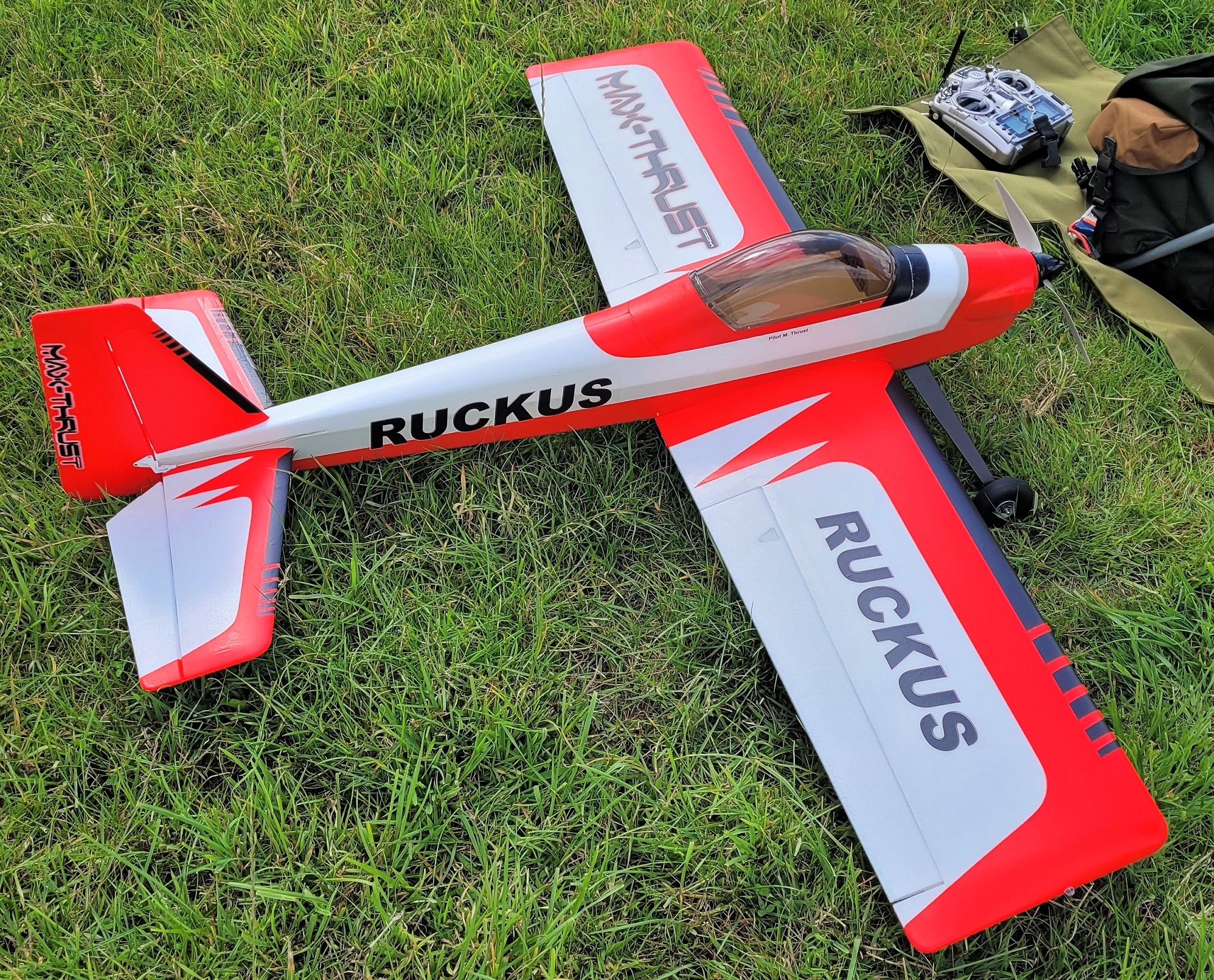 We worked hard on the design to make sure the model was tough and could put up with the abuse you will throw at it but without adding too much weight, thanks in part to the tough EPOFLEXY construction and clever build structure featuring an internal ply skeleton in the fuselage for added strength, just like the Riot.
We worked hard on the design to make sure the model was tough and could put up with the abuse you will throw at it but without adding too much weight, thanks in part to the tough EPOFLEXY construction and clever build structure featuring an internal ply skeleton in the fuselage for added strength, just like the Riot.
1066 did the initial trimming flight for Peter which went perfectly and Peter is now happily flying it without the need of further help. Peter is using a receiver with a built in stabiliser and is gradually adjusting the settings to get the ideal balance for his level of flying.
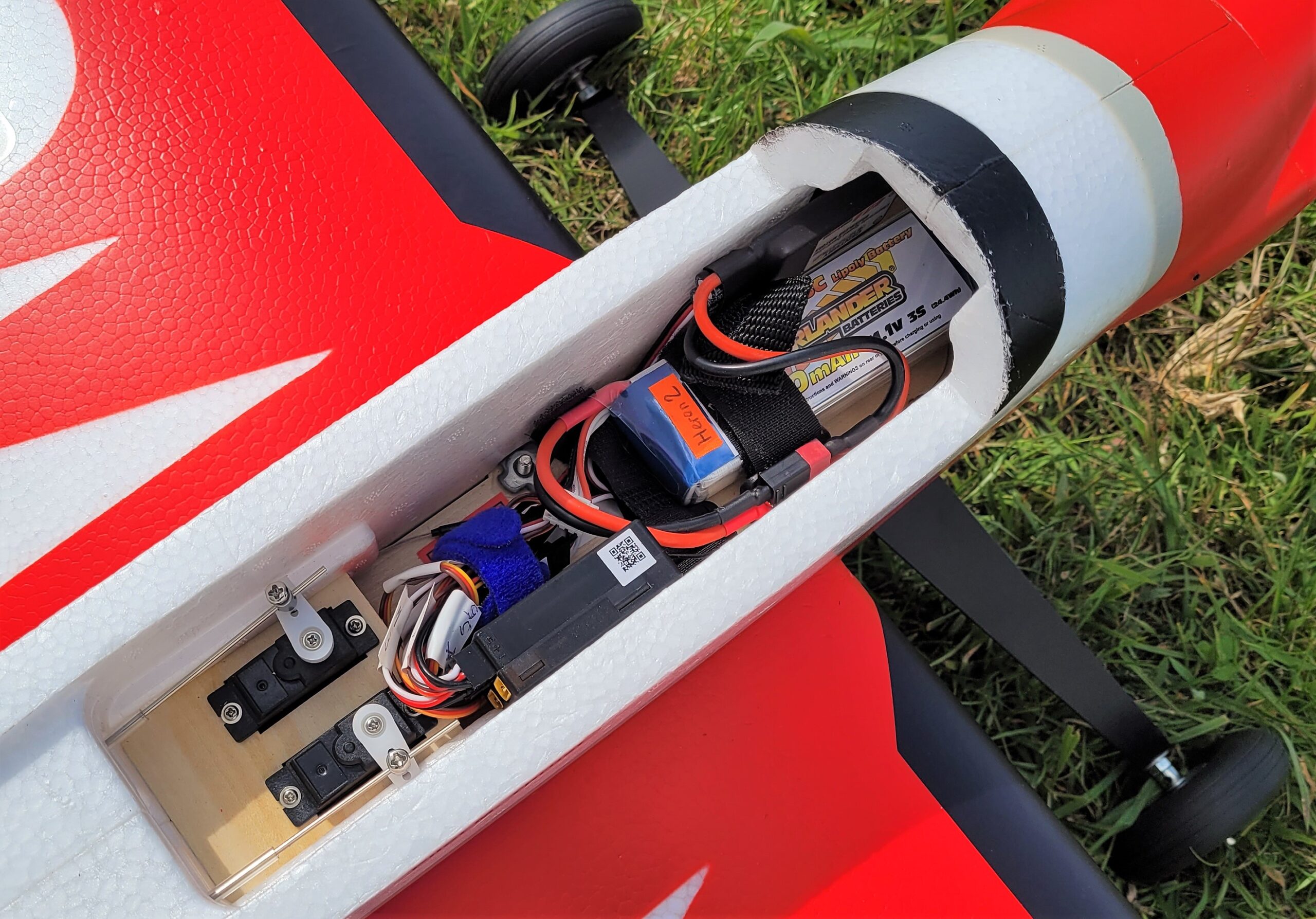 He let me have a go and I found with the stabiliser in full stability mode the Ruckus would only fly large circuits around the field, it didn’t allow any tight turns, but that’s ideal for beginners. Peter is well passed that stage so is using the stabiliser in the intermediate mode which smooths out the bumps but still allows a bit of fun when he wants it. As you’ll see in this month’s video the Ruckus looks good in the air and Peter is flying it well.
He let me have a go and I found with the stabiliser in full stability mode the Ruckus would only fly large circuits around the field, it didn’t allow any tight turns, but that’s ideal for beginners. Peter is well passed that stage so is using the stabiliser in the intermediate mode which smooths out the bumps but still allows a bit of fun when he wants it. As you’ll see in this month’s video the Ruckus looks good in the air and Peter is flying it well.
I know I shouldn’t laugh but someone sent me this recently and it did make me smile:
 This was a NATO E-3 AWACS in Greece in July 1996. Apparently on the take-off run the crew thought they heard a thud (possible bird strike?) and decided to abort the take-off, Unfortunately they soon discovered that there wasn’t enough runway left to stop. Luckily all aboard survived although the Canadian Flight Engineer had a few broken ribs.
This was a NATO E-3 AWACS in Greece in July 1996. Apparently on the take-off run the crew thought they heard a thud (possible bird strike?) and decided to abort the take-off, Unfortunately they soon discovered that there wasn’t enough runway left to stop. Luckily all aboard survived although the Canadian Flight Engineer had a few broken ribs.
Early in the month Norwegian Nick flew a second-hand electric glider that he’d bought at the Wings & Wheels show in June. He said lots of other prospective buyers looked at the model but rejected it because it doesn’t have any ailerons, just rudder and elevator.
 Nick was told it’s a Red Devil which was built from an RCM&E plan but he can’t find any trace of a plan called that. I’ve just done a quick internet search and I can’t find any sign of it either so if anyone has any knowledge of what it might be please let Nick know.
Nick was told it’s a Red Devil which was built from an RCM&E plan but he can’t find any trace of a plan called that. I’ve just done a quick internet search and I can’t find any sign of it either so if anyone has any knowledge of what it might be please let Nick know.
 The fuselage is a pod and boom type and the wings, tailplane and fin are all of built up balsa rib construction. The model is covered in red transparent Solarfilm which was patched up with Sellotape when Nick bought it. He has done quite a lot of tidying up of it already but says he’s probably completely re-cover it once he’s happy that it flies well. He isn’t sure what the motor it is but runs fine on a 2200mAh three cell pack.
The fuselage is a pod and boom type and the wings, tailplane and fin are all of built up balsa rib construction. The model is covered in red transparent Solarfilm which was patched up with Sellotape when Nick bought it. He has done quite a lot of tidying up of it already but says he’s probably completely re-cover it once he’s happy that it flies well. He isn’t sure what the motor it is but runs fine on a 2200mAh three cell pack.
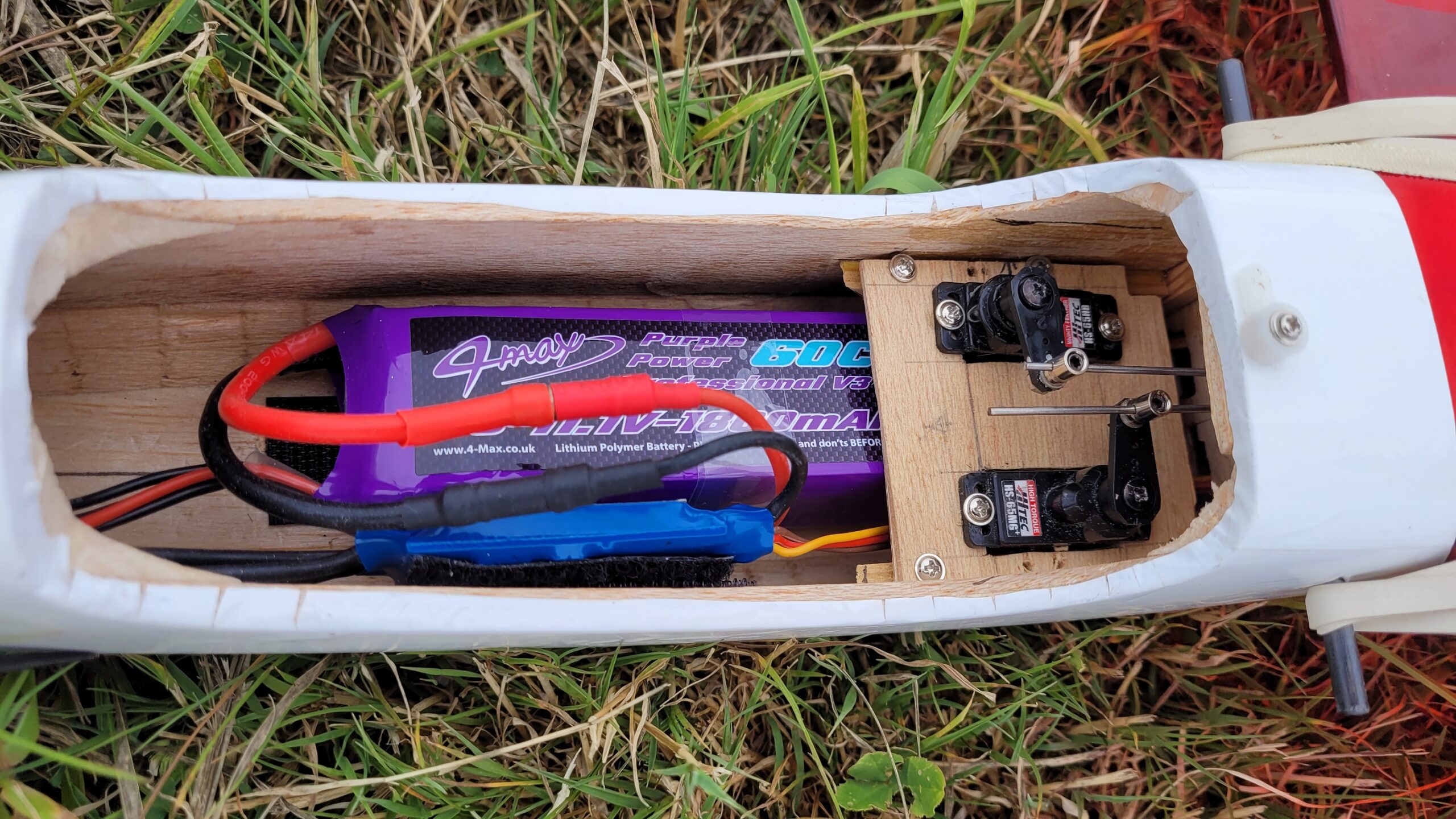 On the day that Nick flew it there were moderate winds and it was fine but he thinks it would do really well in calmer cloudy weather. It looks to be a good all rounder to me.
On the day that Nick flew it there were moderate winds and it was fine but he thinks it would do really well in calmer cloudy weather. It looks to be a good all rounder to me.
Many members have pen names that are used in Patch News and many (but not all) have some sort of logic behind them, such as Mr S Hastings being known s 1066, it’s obvious really. I always thought the S stood for Steve but in July it turns out it’s actually Smasher! Poor 1066 didn’t have a good July, starting with his foamie HobbyKing MX2 which buried itself fairly comprehensively. He’s not sure what happened, everything was working ok after the crash so maybe it was pilot error but he doesn’t think so. It was pretty bad but 1066 should be able to repair it. Then later the same morning he did a heavy landing with his HobbyKing MXS and ripped the undercarriage out. It’ll be repaired fairly easily but it was annoying. But then at the next flying session he was doing a fast low level downwind pass with his ST Models Blaze when he got a couple of inches too low. The damage was pretty bad and as the model is a bit old and tatty 1066 might not bother repairing it. So that’s the proverbial three in a row, surely nothing else would go wrong. Or could it!
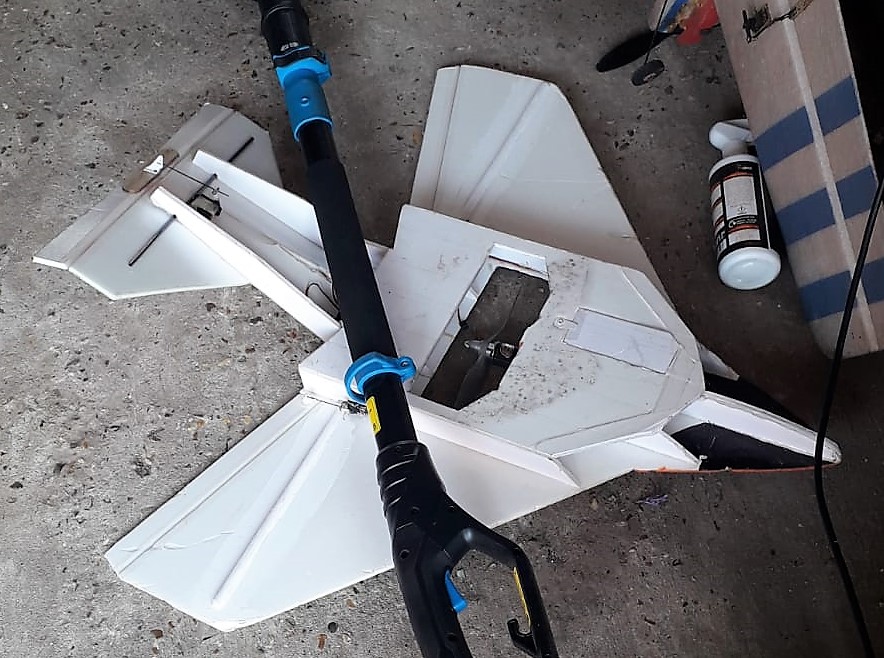 Just a few days later, when he wasn’t even present, he suffered a severe case of hangar rash when his extended reach hedge trimmer fell on his Cirrus from a great height.
Just a few days later, when he wasn’t even present, he suffered a severe case of hangar rash when his extended reach hedge trimmer fell on his Cirrus from a great height.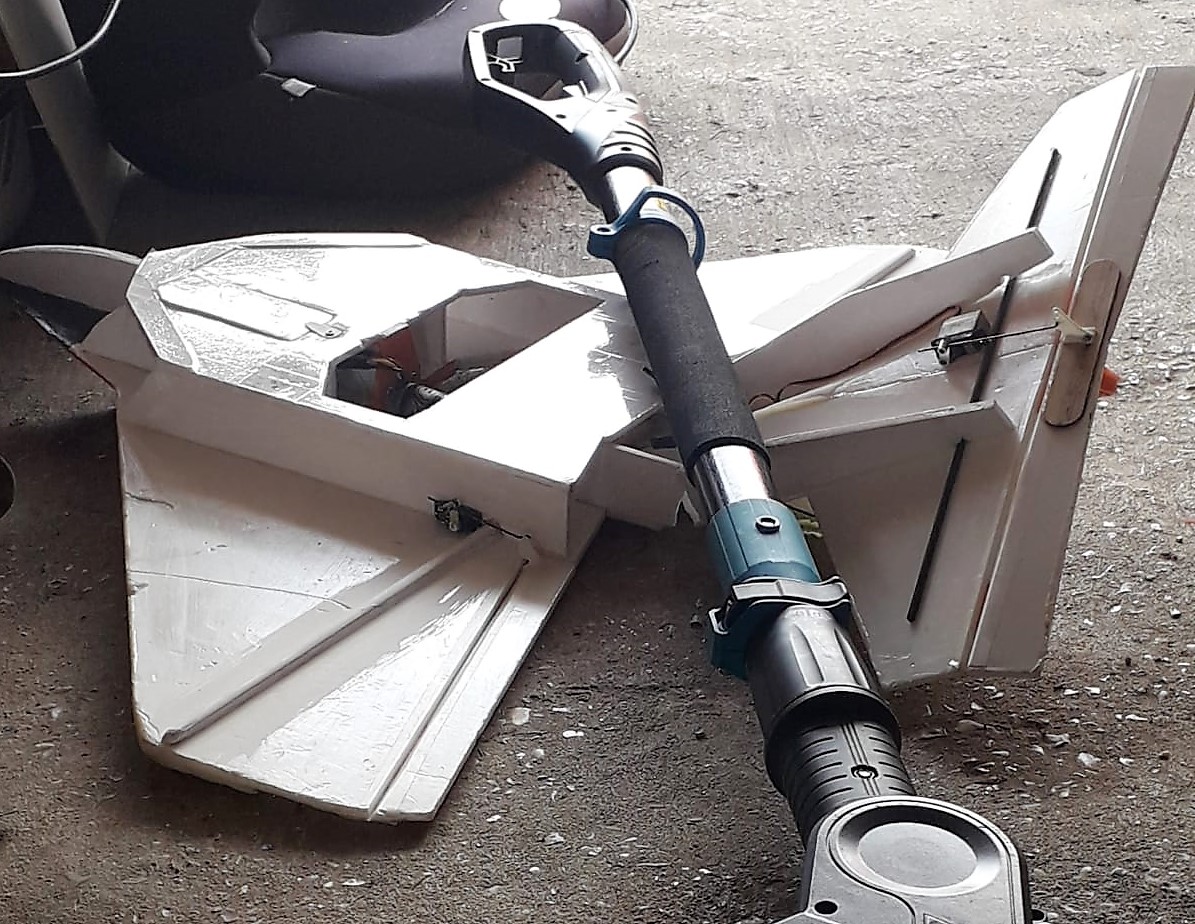
The Cirrus is a great flier so hopefully he’ll be able to repair it ok. Somebody is trying to tell you something 1066, roll on August when normal service will be resumed…hopefully!
During the evening of Wednesday 12th July we had the annual Chuck Glider competition which was ably run by the club Competition Secretary Dwayne Pipe.
 Earlier in the day the weather had been wet and windy and I was unsure the comp would go ahead but the rain stopped, the wind gradually decreased and the evening ended with a glorious sunset. I snapped Peter F as he launched his catapult glider in the evening sun.
Earlier in the day the weather had been wet and windy and I was unsure the comp would go ahead but the rain stopped, the wind gradually decreased and the evening ended with a glorious sunset. I snapped Peter F as he launched his catapult glider in the evening sun.
 There were two classes to enter, the normal hand launch and a catapult launch using a catapult supplied by Dwayne to keep everything equal. Most people entered both classes, often using the same glider for both. Pretty much any model is allowed in the competition, it’s all just a bit of fun, and there were several stock bought foam ones entered.
There were two classes to enter, the normal hand launch and a catapult launch using a catapult supplied by Dwayne to keep everything equal. Most people entered both classes, often using the same glider for both. Pretty much any model is allowed in the competition, it’s all just a bit of fun, and there were several stock bought foam ones entered.
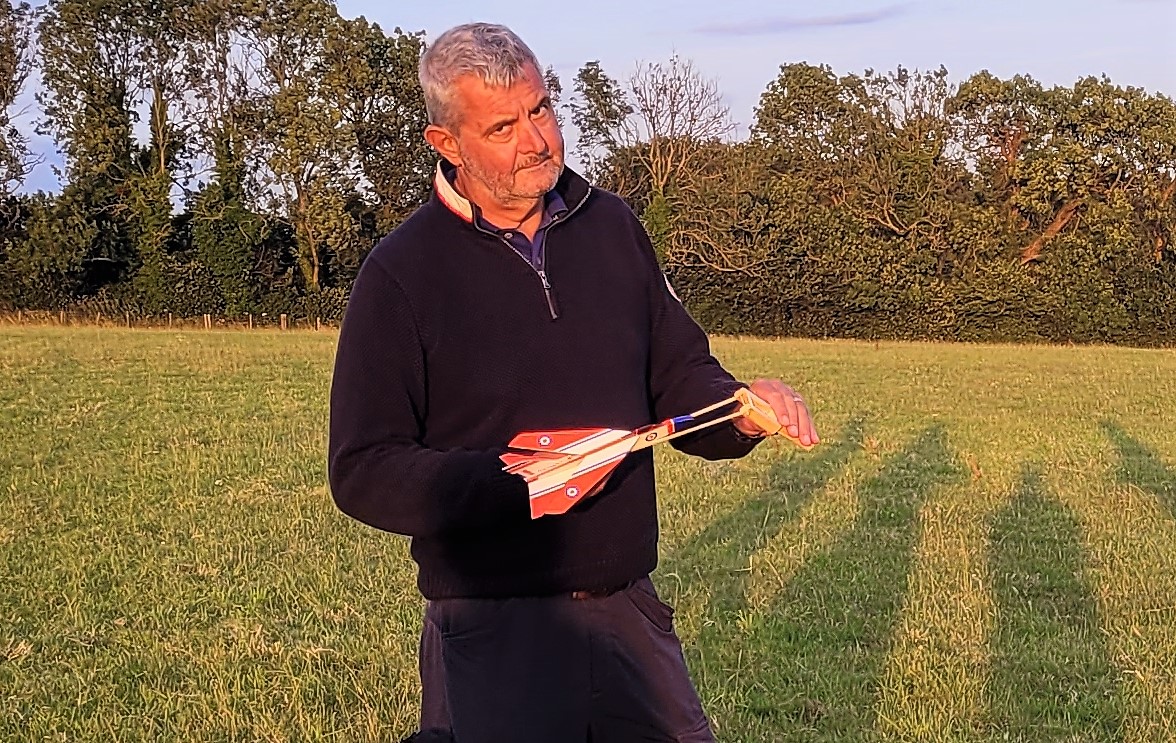 Gordon Bennett felt the need for speed and had bought a Tornado which flew ok but I think it would have been better if the wings weren’t fixed in the fully swept position!
Gordon Bennett felt the need for speed and had bought a Tornado which flew ok but I think it would have been better if the wings weren’t fixed in the fully swept position!
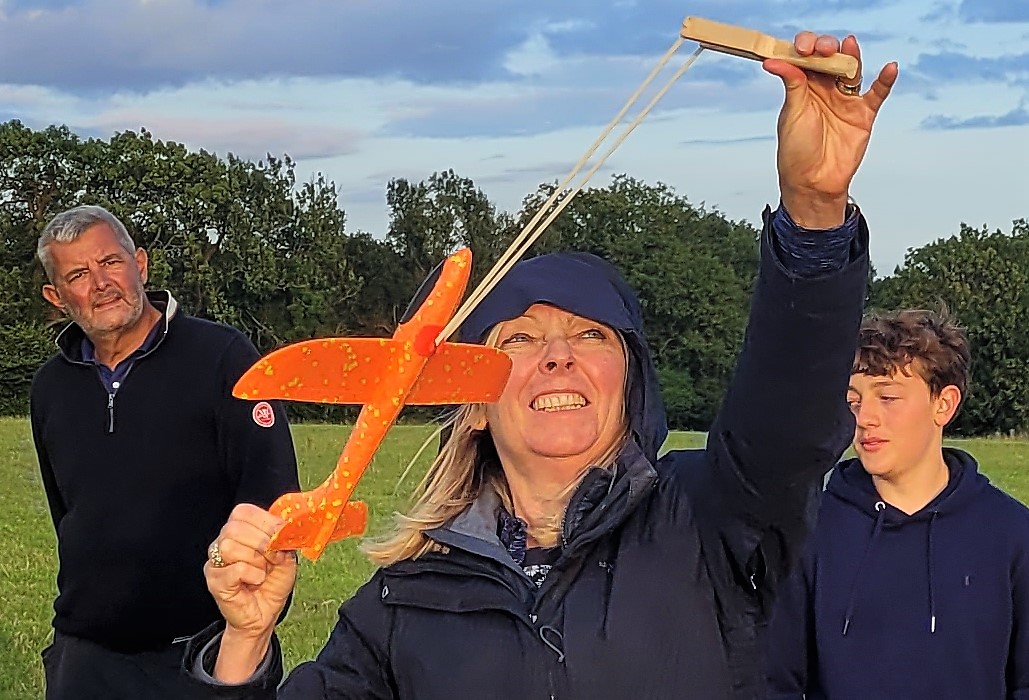 I really like this photo of Nadine with a look of steely determination on her face while Gordon looks intrigued but her son Charlie looks half asleep. It’s a teenager thing!
I really like this photo of Nadine with a look of steely determination on her face while Gordon looks intrigued but her son Charlie looks half asleep. It’s a teenager thing!
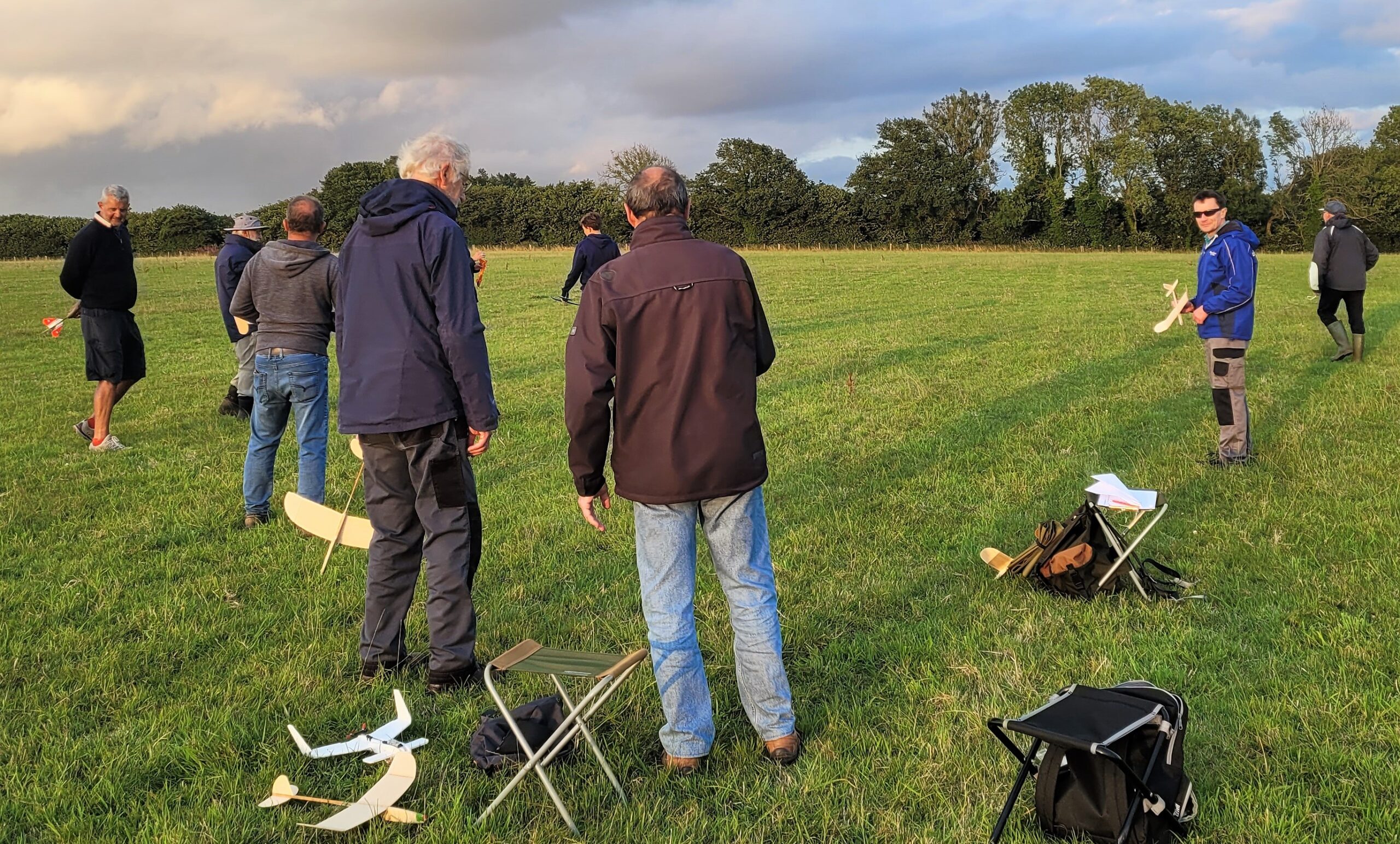 I think I can safely say that we all enjoyed the evening and our thanks go to Dwayne for keeping everything running smoothly. The Hand Launch section was won by Colin Cowplain with Dougal Entendre a close second and Chas third. In the Catapult Launch competition Dwayne Pipe was first by a large margin, Peter F second, and Woody third.
I think I can safely say that we all enjoyed the evening and our thanks go to Dwayne for keeping everything running smoothly. The Hand Launch section was won by Colin Cowplain with Dougal Entendre a close second and Chas third. In the Catapult Launch competition Dwayne Pipe was first by a large margin, Peter F second, and Woody third.
I’ll include some more action photos of the event later in this Patch News.
Towards the end of the month Dougal Entendre dug out one of his old models, a Skyartec Mini Skyfun, and got it flying again: Looking back through old editions of Patch New I found that I last tried the Mini Skyfun in November 2021 (yikes! was it that long ago??).
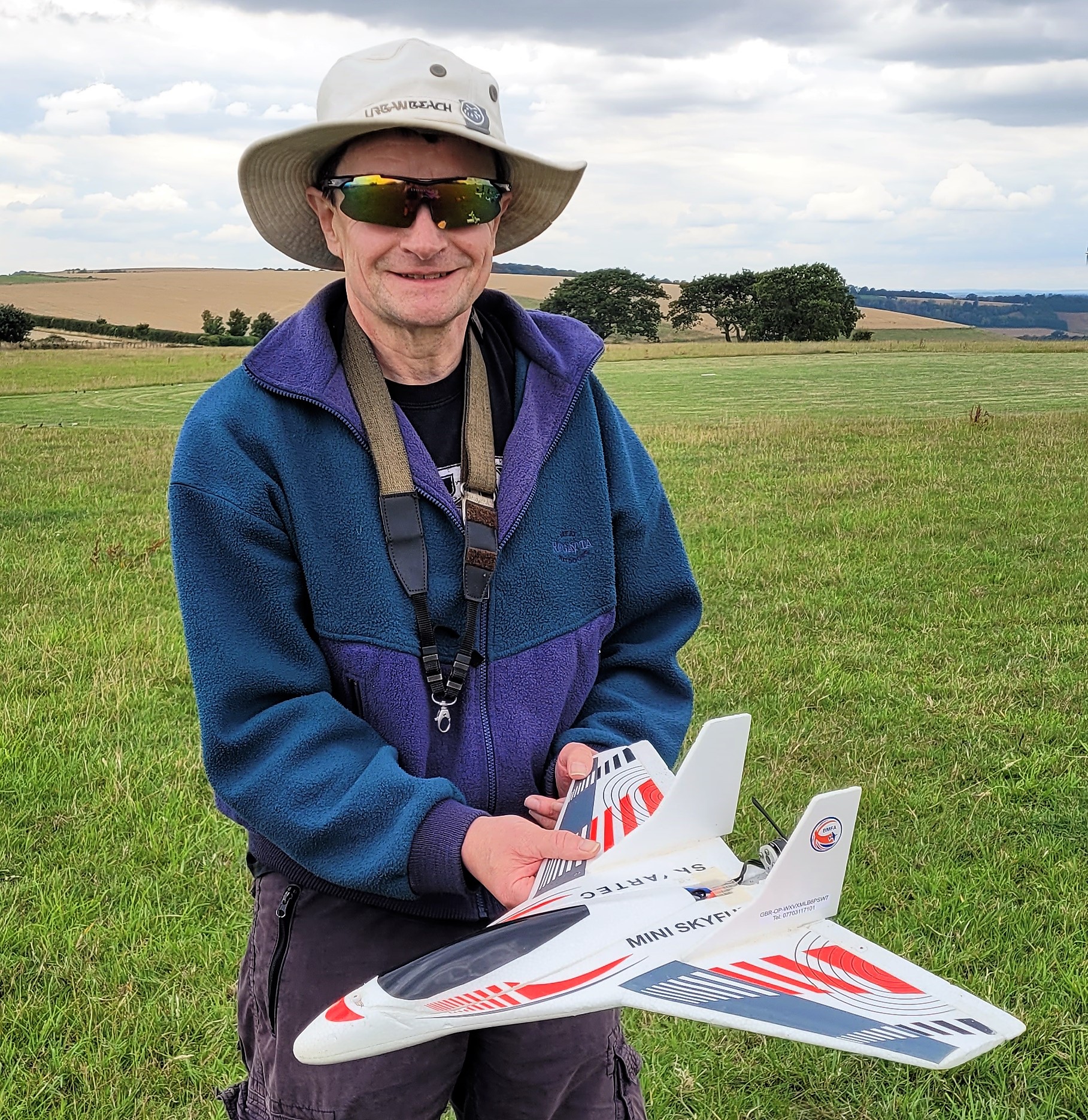 Despite having tried 4 different ESCs, 5 different motors and 2 different battery packs, I consistently had problems with the motor cutting out in flight.
Despite having tried 4 different ESCs, 5 different motors and 2 different battery packs, I consistently had problems with the motor cutting out in flight.
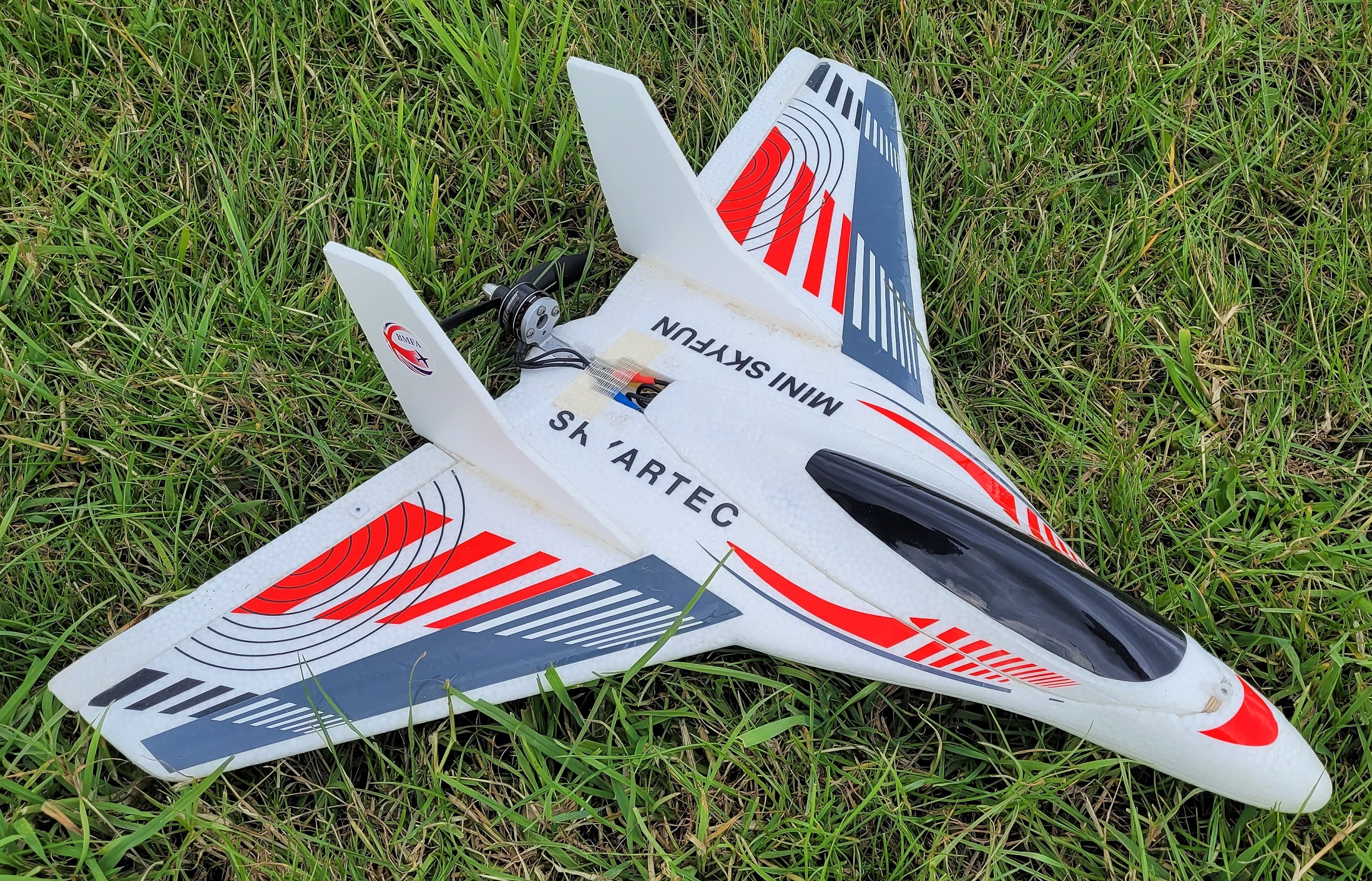 Not surprisingly I came to the conclusion that the airframe was possessed by a malevolent spirit, and left it to adorn a shelf in the workshop. Unbelievably, I found that neither the BMFA nor the CAA keep a register of aviation-approved exorcists, so I was going to have to approach the problem differently. The one other thing which had remained constant was the receiver, a SKY-AP301. I had been reluctant to change this because the servo connectors were the small JST-type, but in order to use a 6-channel Devo Rx I finally accepted that I was going to have to solder new connectors on.
Not surprisingly I came to the conclusion that the airframe was possessed by a malevolent spirit, and left it to adorn a shelf in the workshop. Unbelievably, I found that neither the BMFA nor the CAA keep a register of aviation-approved exorcists, so I was going to have to approach the problem differently. The one other thing which had remained constant was the receiver, a SKY-AP301. I had been reluctant to change this because the servo connectors were the small JST-type, but in order to use a 6-channel Devo Rx I finally accepted that I was going to have to solder new connectors on.
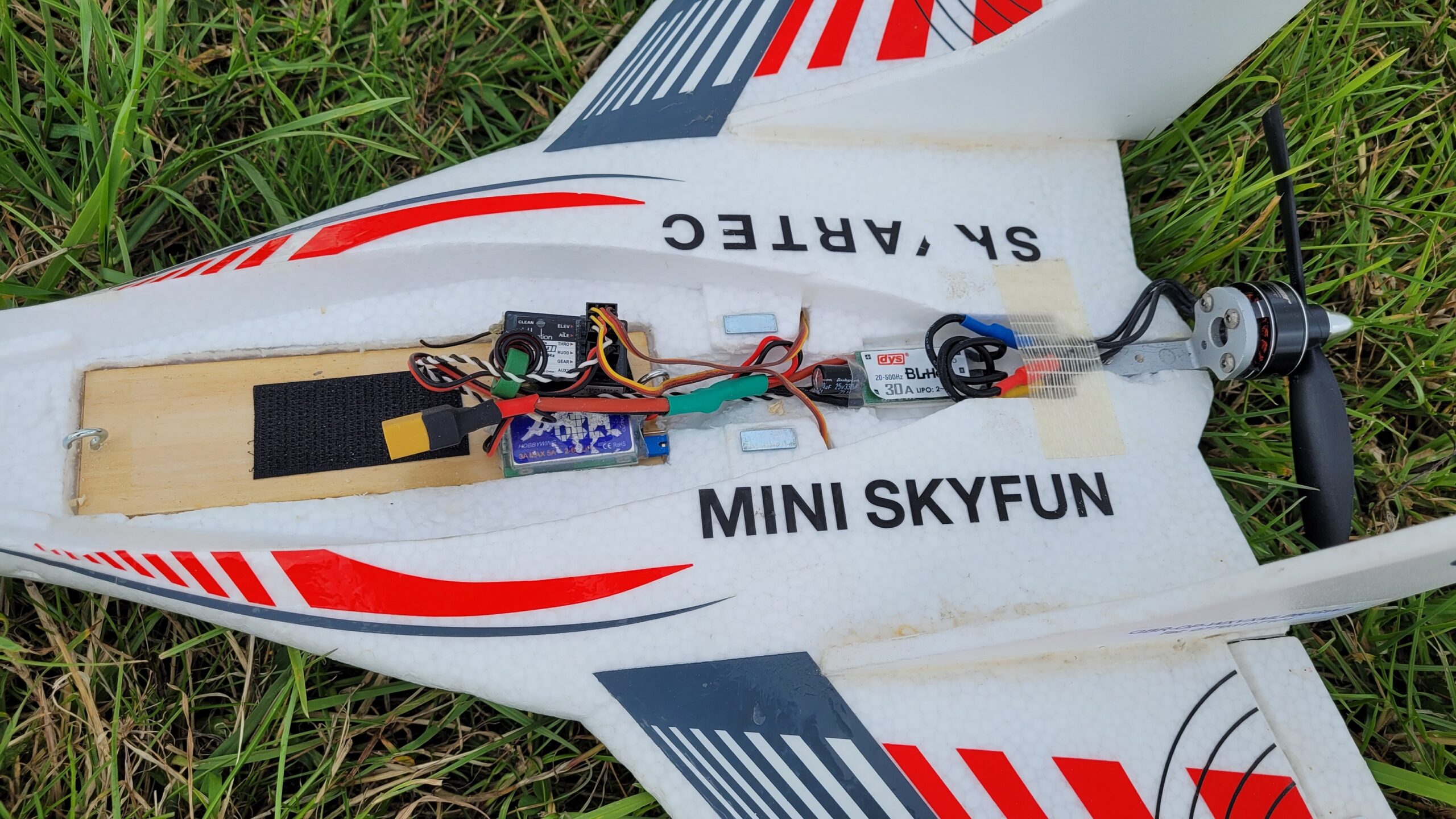 Only once the soldering iron had warmed up did I realise that the servos had 5 wires instead of the normal 3! It turns out that the AP301 has the servo amplifiers inside the receiver, thus allowing the servos themselves to be smaller. This meant airframe surgery to remove the existing servos and replace them with some slightly larger 3-wire ones.
Only once the soldering iron had warmed up did I realise that the servos had 5 wires instead of the normal 3! It turns out that the AP301 has the servo amplifiers inside the receiver, thus allowing the servos themselves to be smaller. This meant airframe surgery to remove the existing servos and replace them with some slightly larger 3-wire ones.
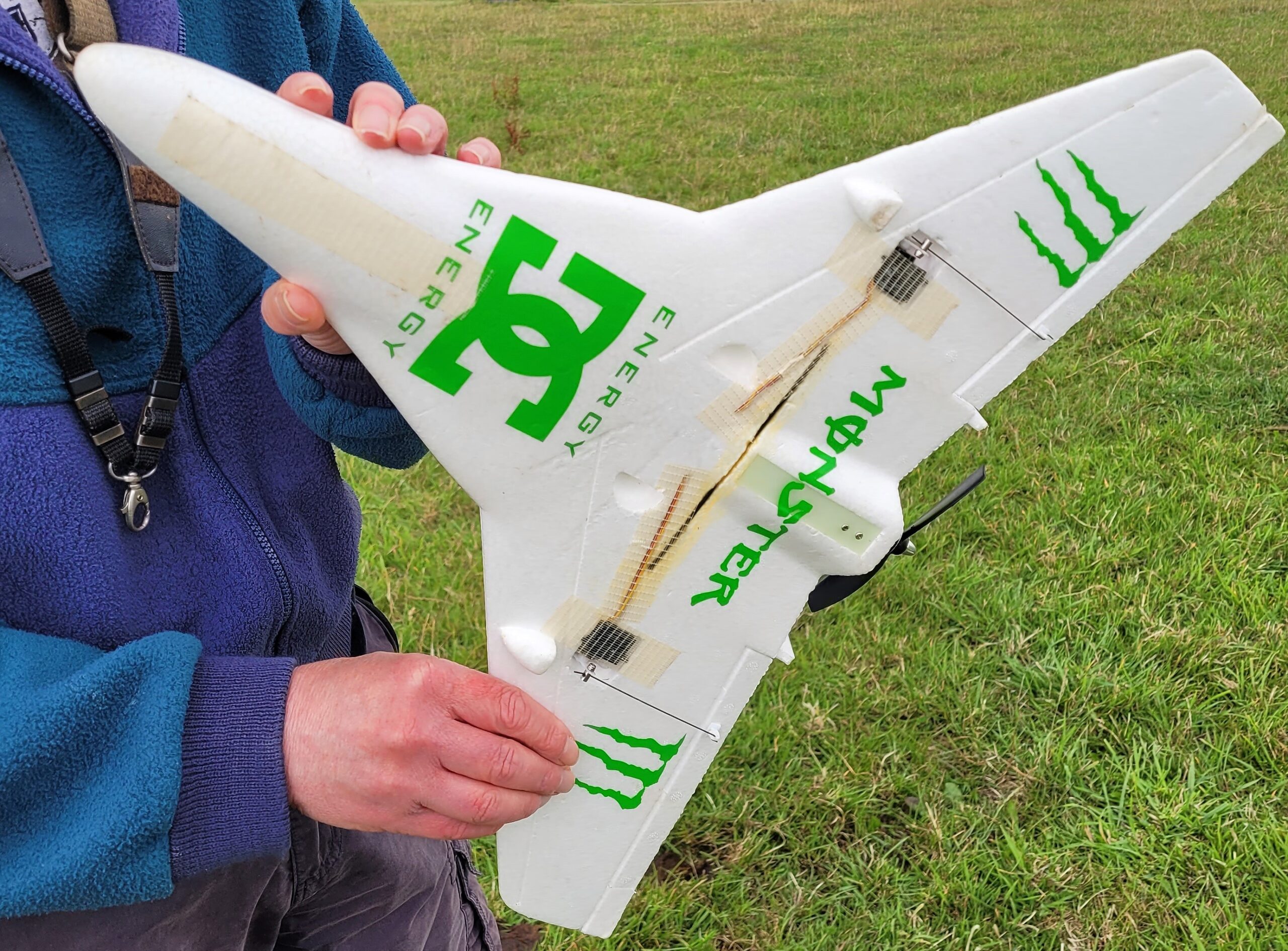 I took the opportunity to hollow out the equipment bay a bit more, so the Mini Skyfun can now take a 3s 1000mAh pack. I’d put in a little reflex on the elevons, expecting the bigger battery to cause the CG to move forward, but found that I needed full down trim on the first flight in the new configuration. I removed the reflex by adjusting the pushrod lengths, and the second flight was much better. On both flights I came down with 60% remaining after 5 minutes, so I’ll try going down to 850mAh packs next time. This should move the CG back a tad, so I shouldn’t need quite so much down held in for inverted flight. I wonder why the receiver caused the Mini Skyfun motor cutting problem, low voltage detection maybe? Anyway it’s now flying really well and it’s in this month’s video.
I took the opportunity to hollow out the equipment bay a bit more, so the Mini Skyfun can now take a 3s 1000mAh pack. I’d put in a little reflex on the elevons, expecting the bigger battery to cause the CG to move forward, but found that I needed full down trim on the first flight in the new configuration. I removed the reflex by adjusting the pushrod lengths, and the second flight was much better. On both flights I came down with 60% remaining after 5 minutes, so I’ll try going down to 850mAh packs next time. This should move the CG back a tad, so I shouldn’t need quite so much down held in for inverted flight. I wonder why the receiver caused the Mini Skyfun motor cutting problem, low voltage detection maybe? Anyway it’s now flying really well and it’s in this month’s video.
Remember ex-PAM member Dan Handley, also known as Page Boy? He was a member for a good few years but deserted us to join another club that has a strip more suited to the larger EDF models he was flying at the time than our small patch. But now he’s seen the error of his ways and has re-joined PAM. He sent me a photo of his latest build, something that is eminently suitable for our small patch, a Wasp E2K pylon racer. It looks like Page Boy ran out of orange film and had to resort to yellow for the tail feathers!
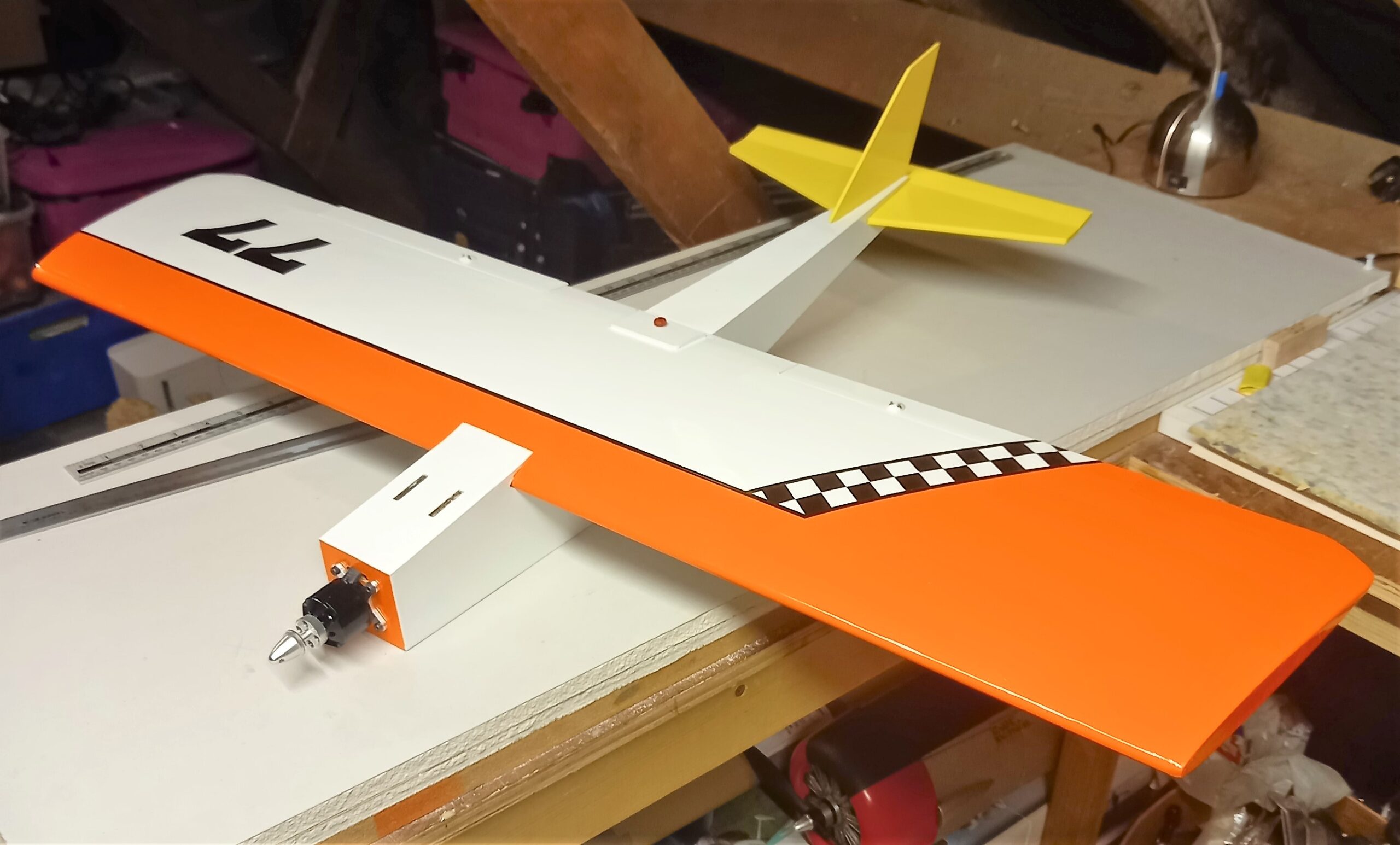 It’s the same as the one 1066 flies so there should be some interesting times ahead. It’s actually Page Boy’s second Wasp, he built the first one whilst still a PAM member but I don’t think he ever flew it at our patch so presumably it must have met its’ demise at the other club. Welcome back Page Boy, don’t go wandering off again!
It’s the same as the one 1066 flies so there should be some interesting times ahead. It’s actually Page Boy’s second Wasp, he built the first one whilst still a PAM member but I don’t think he ever flew it at our patch so presumably it must have met its’ demise at the other club. Welcome back Page Boy, don’t go wandering off again!
This month I’ll leave you with some photos taken during the Chuck Glider competition:

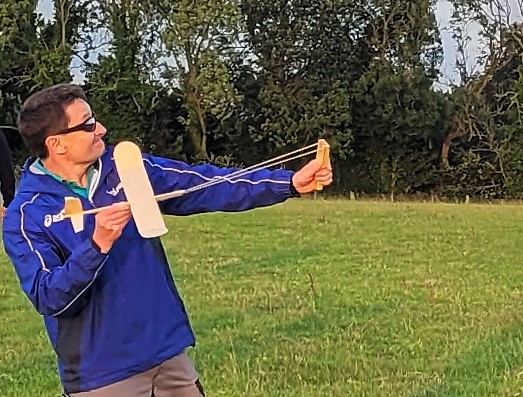
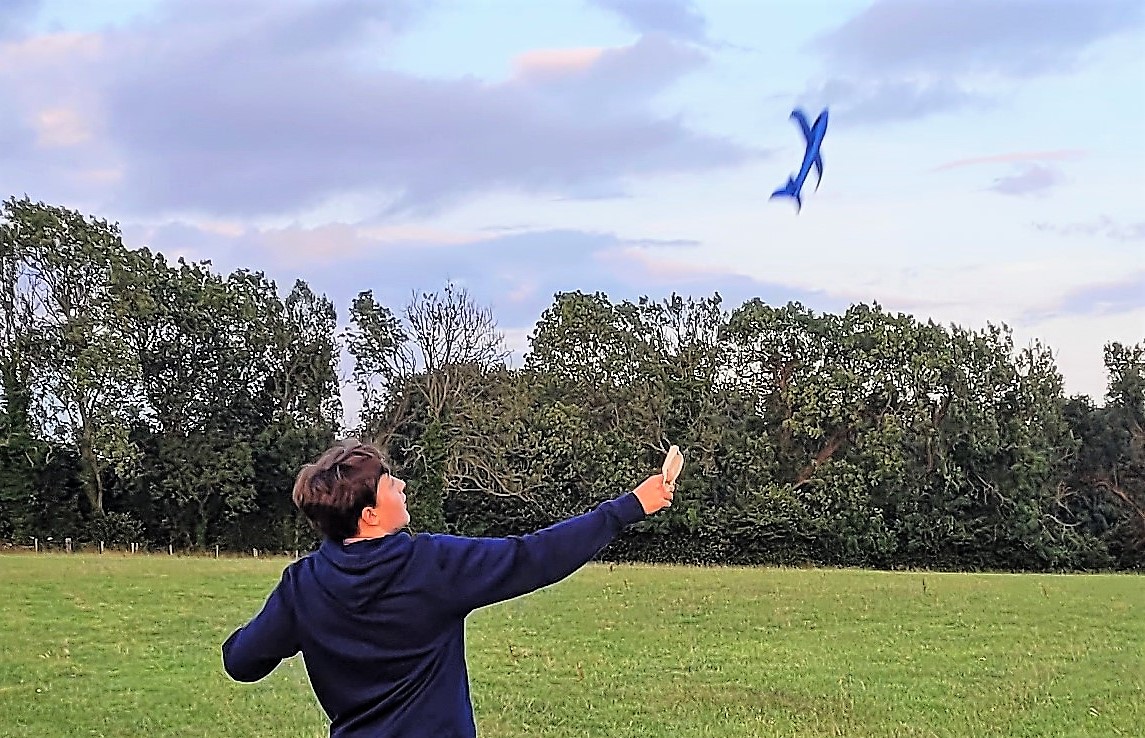
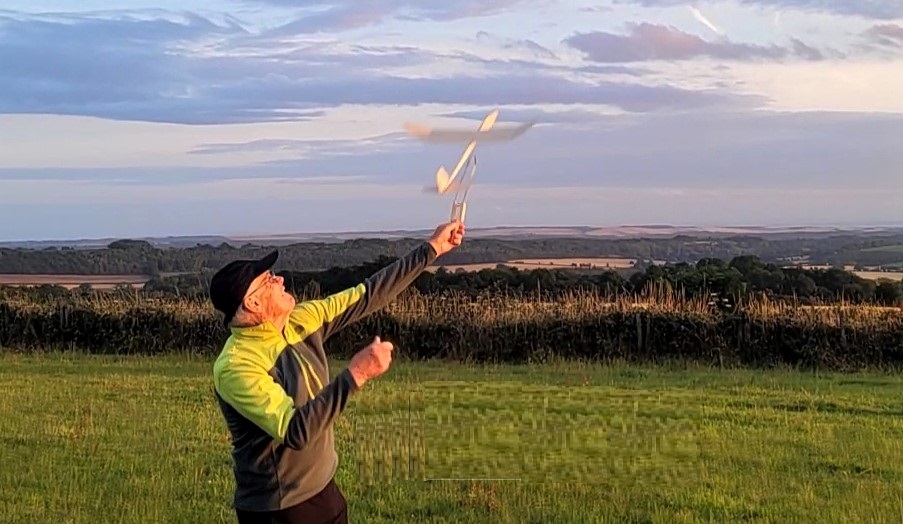


 Video time now will footage by Peter F, Gordon Bennett, Dougal Entendre, and myself. Please watch the video full-screen, it’s so much better with small models flying about:
Video time now will footage by Peter F, Gordon Bennett, Dougal Entendre, and myself. Please watch the video full-screen, it’s so much better with small models flying about:
If the video won’t play for you please click HERE
Tower: “Flight number YX7345, it looks like one of your baggage doors is open.”
The Captain quickly scanned all the panels for warning lights but found nothing.
“Ah, thanks Tower, I think you’re looking at our APU door.” (Auxiliary Power Unit).
Tower: “Okay, YX7345, you are cleared for take-off.”
Captain: “Thank you Tower, cleared for take-off, YX7345”
But then, during the take-off roll a few minutes later:
“YX7345… Er… It appears that your APU is leaking luggage…”
Colin Cowplain

